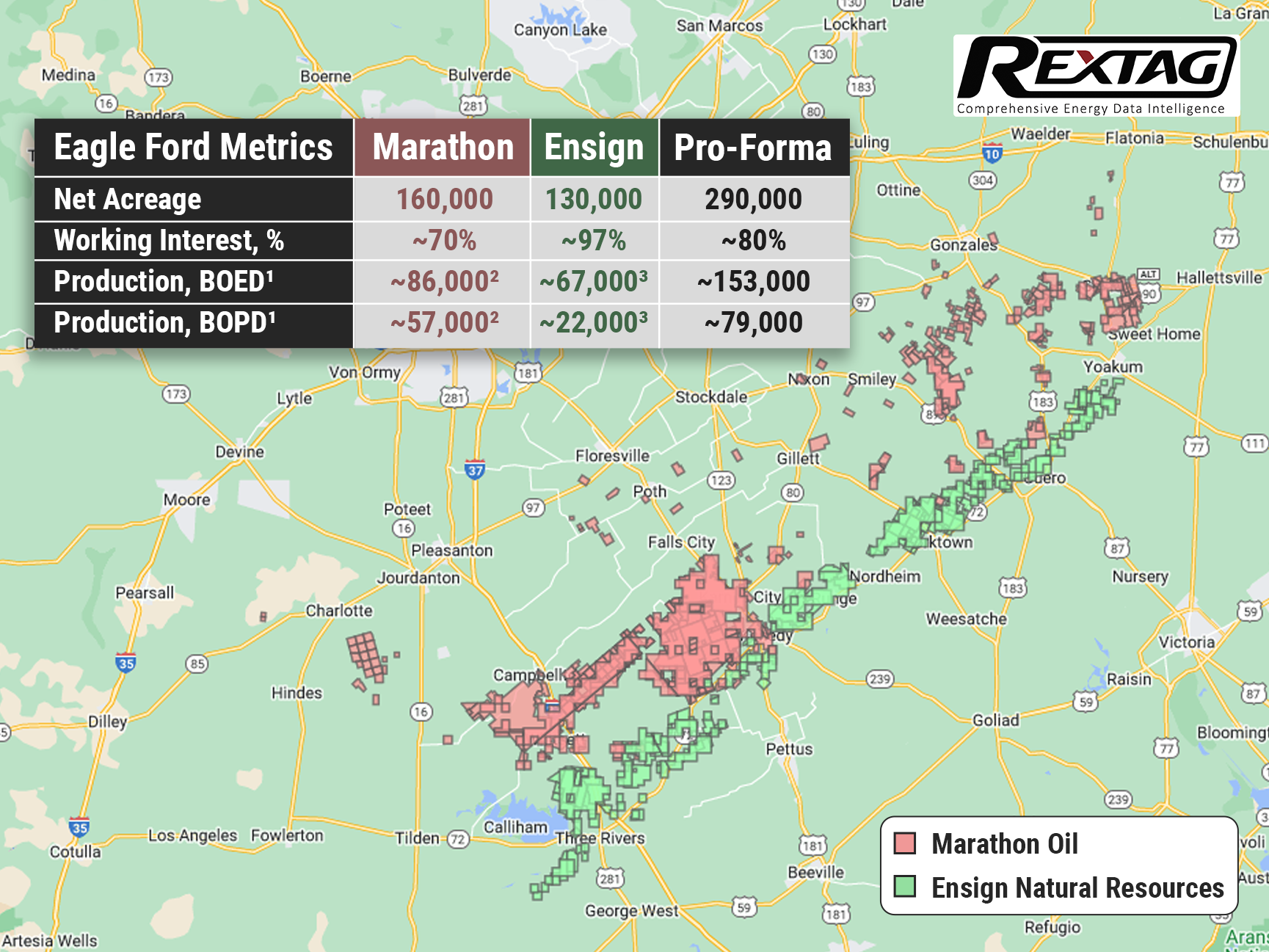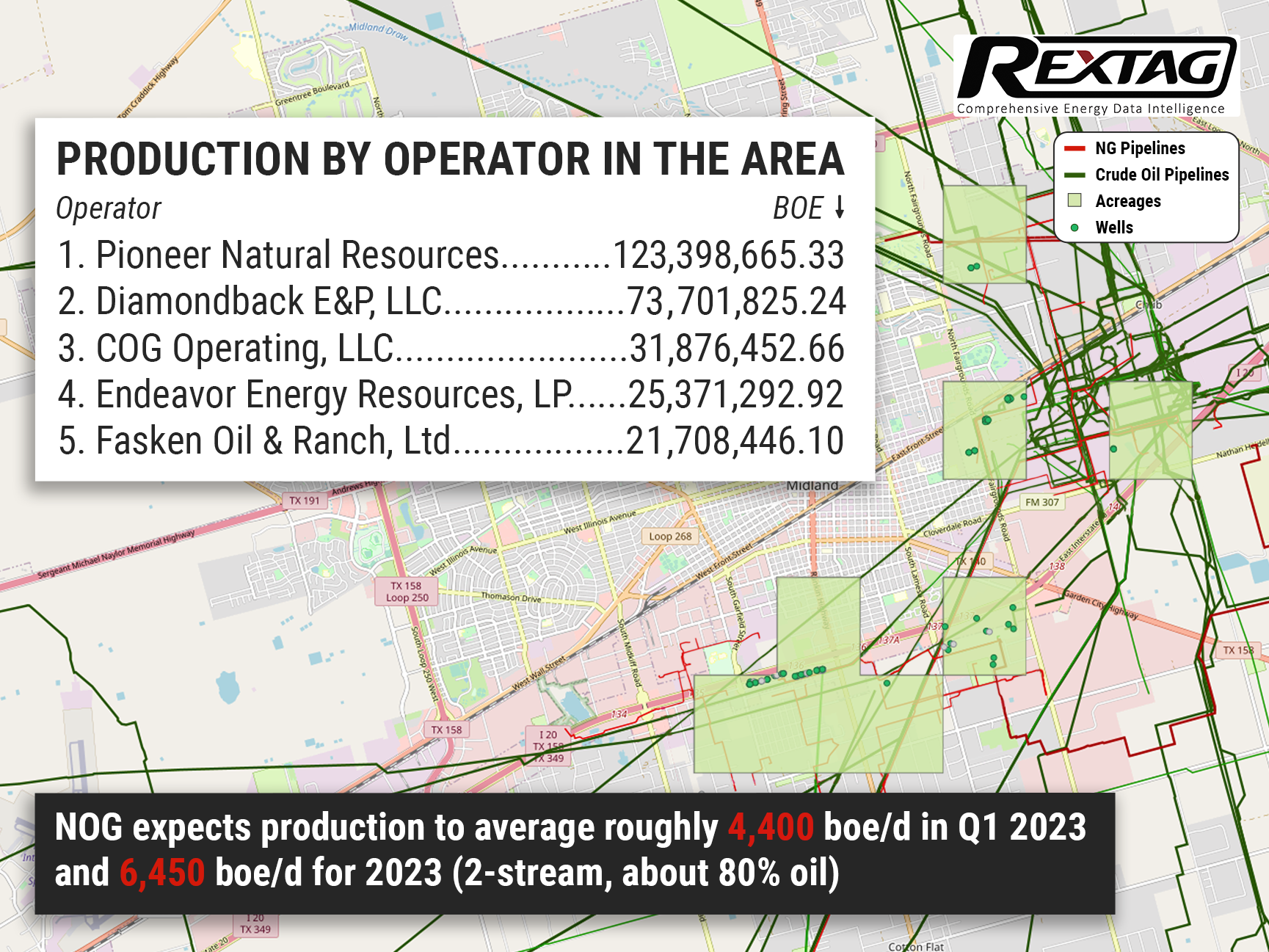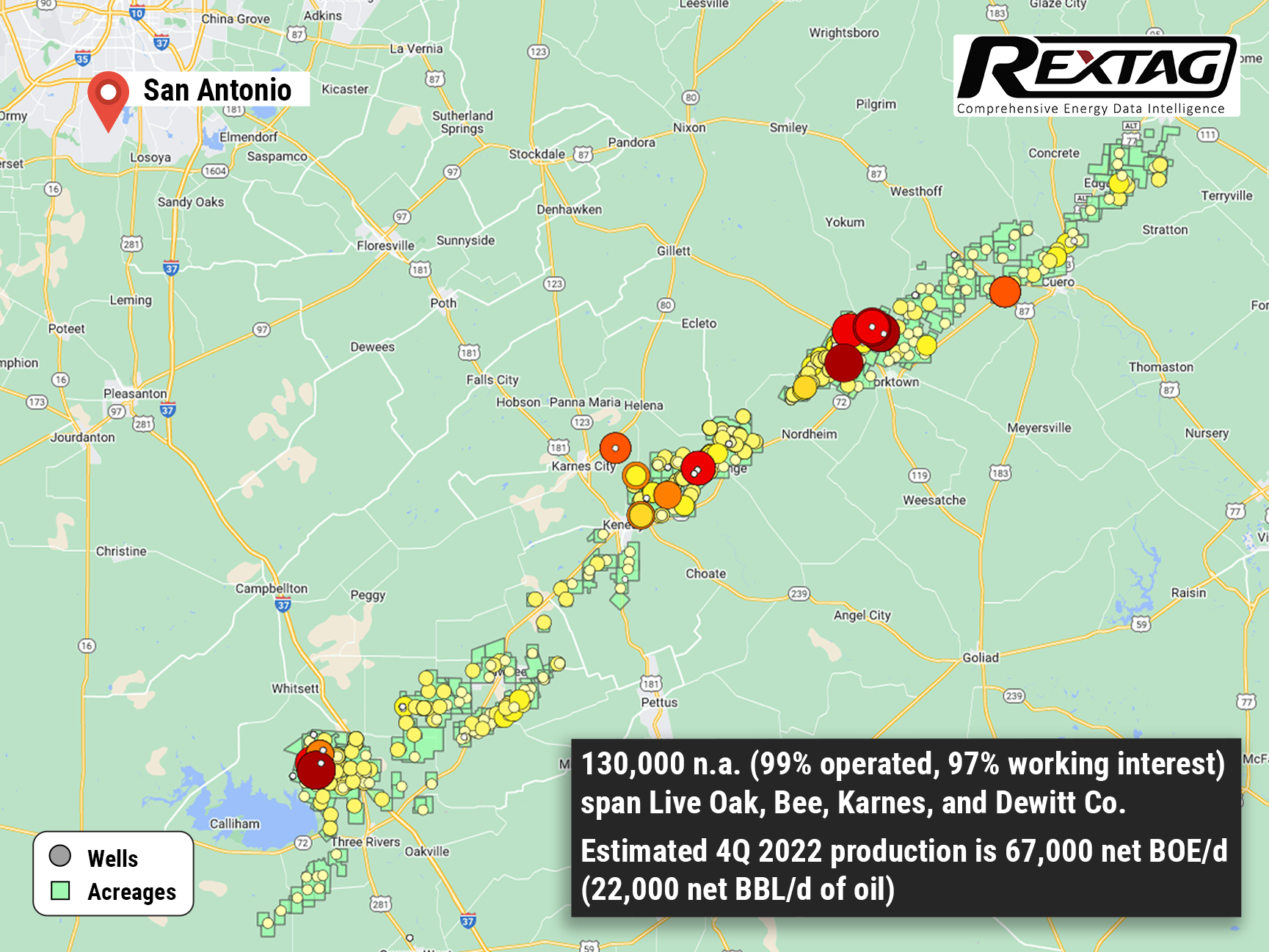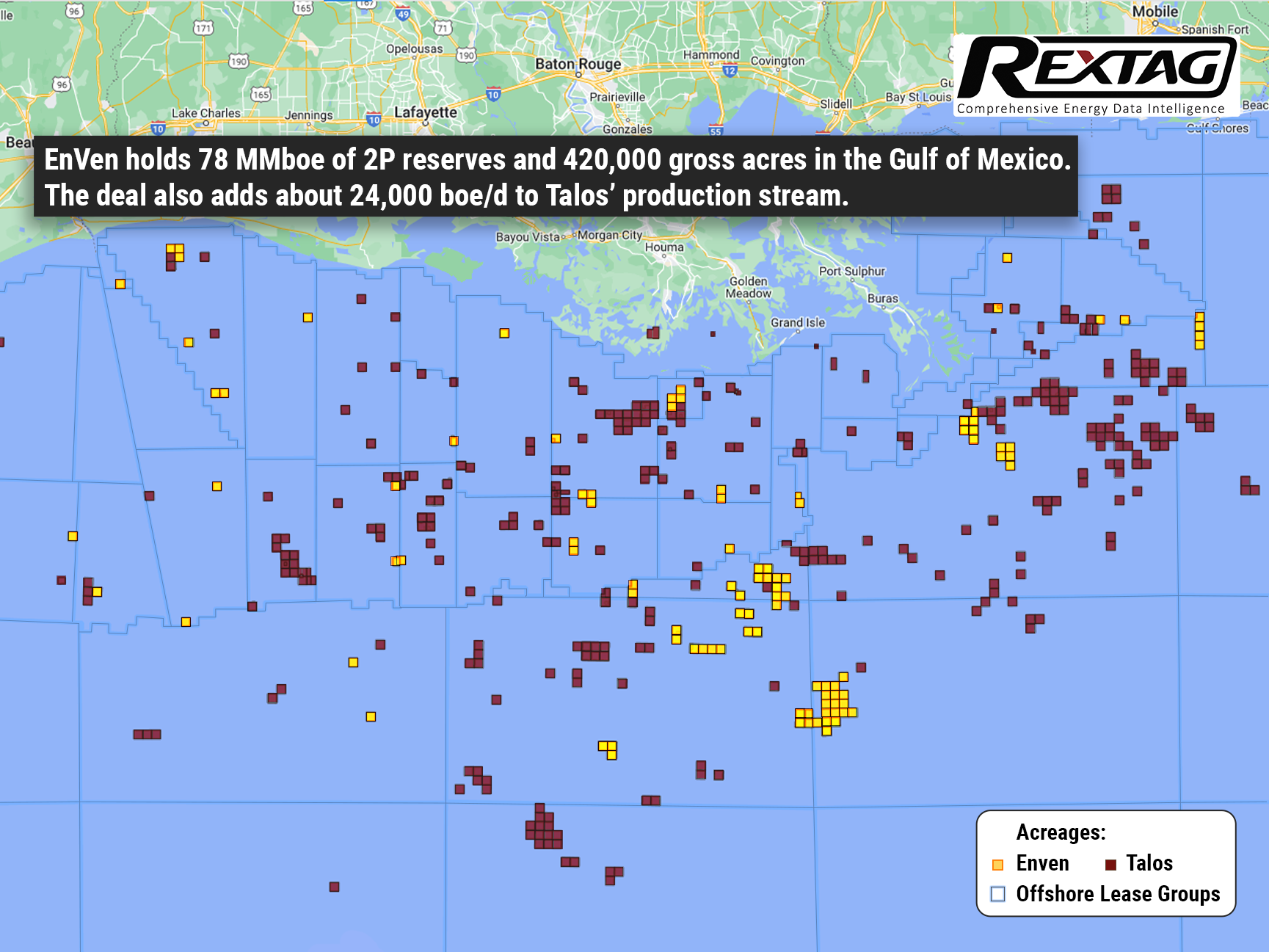Blog
Since days when shale oil and gas technologies were discovered, the U.S. energy industry has been evolving more rapidly than ever before. Many changes are amazing especially when you put them on an industry map. At Rextag not only do we keep you aware of major projects such as pipelines or LNG terminals placed in service. Even less significant news are still important to us, be it new wells drilled or processing plants put to regular maintenance.
Daily improvements often come unnoticed but you can still follow these together with us. Our main input is to “clip it” to the related map: map of crude oil refineries or that of natural gas compressor stations. Where do you get and follow your important industry news? Maybe you are subscribed to your favorite social media feeds or industry journals. Whatever your choice is, you are looking for the story. What happened? Who made it happen? WHY does this matter? (Remember, it is all about ‘What’s in It For Me’ (WIIFM) principle).
How Rextag blog helps? Here we are concerned with looking at things both CLOSELY and FROM A DISTANCE.
"Looking closely" means reflecting where exactly the object is located.
"From a distance" means helping you see a broader picture.
New power plant added in North-East? See exactly what kind of transmission lines approach it and where do they go. Are there other power plants around? GIS data do not come as a mere dot on a map. We collect so many additional data attributes: operator and owner records, physical parameters and production data. Sometimes you will be lucky to grab some specific area maps we share on our blog. Often, there is data behind it as well. Who are top midstream operators in Permian this year? What mileage falls to the share or Kinder Morgan in the San-Juan basin? Do you know? Do you want to know?
All right, then let us see WHERE things happen. Read this blog, capture the energy infrastructure mapped and stay aware with Rextag data!
Massive Shutdown in U.S. Gulf of Mexico as Tropical Storm Francine Approaches
A significant portion of the U.S. Gulf of Mexico's oil and natural gas production has come to a halt as Tropical Storm Francine barrels toward Louisiana, threatening the region's crucial energy infrastructure. In what is shaping up to be one of the most impactful events for U.S. energy this year, approximately 24% of crude oil production and 26% of natural gas output in the Gulf are now offline, according to the U.S. Bureau of Safety and Environmental Enforcement (BSEE). Francine, with winds reaching 65 mph (100 kph), is currently situated 380 miles (610 km) southwest of Morgan City, Louisiana, and is expected to strengthen into a hurricane by the end of the day. The storm's trajectory is causing widespread disruptions to offshore operations in the Gulf, which plays a vital role in the country’s energy supply.
Decline in US Oil and Gas Rigs Signals Continued Supply and Price Stability
The U.S. oil and natural gas rig count experienced a slight decline, falling by four to a total of 633 rigs for the week ending August 21. Despite this modest drop, industry analysts have noted a surprising resilience in both oil supply and natural gas prices as the year progresses, suggesting that the market may be more robust than previously anticipated.
US Oil and Gas: Will Higher Production Levels Overwhelm Weakening Demand?
Investors remain strongly bearish on petroleum prices, even as confidence grows that the U.S. Federal Reserve will cut interest rates to boost consumer and business spending. Last week, fund managers returned to selling oil futures and options, as the brief rally from the previous week quickly lost steam and negative sentiment took hold once again. Hedge funds and other money managers offloaded 48 million barrels across the six major futures and options contracts in the week ending August 20. This marks the sixth time in seven weeks that funds have been sellers, reducing their positions by a staggering 346 million barrels since early July, based on data from exchanges and regulators.
U.S. Refineries: Lake Charles, Lemont, Wood River, Rodeo San Francisco, Los Angeles and TOP Operators
U.S. crude oil refining capacity experienced a notable boost this year, climbing 1.5% to reach 18.38 million barrels per day. The recent expansion includes Exxon Mobil's Beaumont, Texas, refinery, which underwent a significant increase of approximately 250,000 barrels per day. As of the start of 2023, there were 124 active oil refineries nationwide. After a two-year downturn due to decreased demand during the COVID-19 pandemic, U.S. refining capacity saw a significant rebound. In 2023 alone, capacity surged by over 100,000 barrels per day to reach 18.1 million, although this still trails the peak of 18.98 million barrels per day seen in 2019.
Strategic Petroleum Reserves Grow as USA Adds Oil: How Long Will U.S. Oil and Gas Last?
U.S. oil and gas output is leveling off after a period of intense activity. As of March 2024, crude oil production hovered around 13.2 million barrels per day, according to the U.S. Energy Information Administration. This marked a slight increase of less than half a million barrels per day from the previous year, indicating a slowdown from the rapid growth seen in the latter half of 2023.
Ovintiv, Occidental, BP, Marathon Oil, ConocoPhillips, TC ENERGY Q1 Results and Sale of $1 Billion Permian Assets
As TC Energy expands its gas network to support the growing demand from data centers, driven by AI, Occidental is considering selling assets in the Permian Basin potentially worth over $1 billion. Keep reading. But first, let’s take a look at the Q1 2024 results for big names like Occidental (OXY), Ovintiv, BP, Marathon Oil, ConocoPhillips, and TC Energy.
$22.5 Billion Shake-Up: ConocoPhillips Acquires Marathon Oil and Gains Major Influence in the Eagle Ford
The purchase of Marathon Oil adds 2,600 new drilling spots to ConocoPhillips' operations, boosting their total to over 13,000 across the U.S. After the deal, ConocoPhillips is set to significantly increase its production in the Eagle Ford region, potentially exceeding its current output in the Delaware basin.
US Leads Global Oil and Gas Production, US Drillers Cut Rigs Again and 1.4 Million BBL Decrease
The U.S. has overtaken Saudi Arabia and Russia to become the world's largest oil and gas producer. In 2024, America's oil output has surpassed last year's record by 1.4%, reaching new heights. Even as oil-producing countries in the Middle East cut back, the U.S. continued to ramp up production after a downturn in 2020, establishing itself as a dominant force in the global market. In terms of numbers, U.S. oil production jumped from an average of 2.93 million barrels per day in 2023 to 13.12 million barrels per day in 2024, marking a significant 7.1% increase.
Utica vs. Permian: Can It Really Compete for America's Top Oil Plays?
EOG Resources is pushing boundaries in Ohio's Utica oil play and now drilling on the Sable pad, also located in Noble County. This site features the 3.7-mile lateral currently under construction. The company's first multi-well pads in the area Timberwolf and Xavier have each produced over 200,000 barrels of oil since their inception—Timberwolf in August and Xavier in October. A third site, the four-well White Rhino pad in Noble County, is also showing promising early results, according to Keith Trasko, EOG’s Senior Vice President of Exploration and Production, who noted the wells are performing as expected in their initial weeks.
TotalEnergies $5.7B Profit, U.S. Rig Count Loose and Crude Oil April Update
TotalEnergies kicked off 2024 with a net income of $5.7 billion in the first quarter, marking a modest 3% increase from the same period last year and a 13% rise from the previous quarter. This growth occurred despite experiencing drops in both the volume and price of gas sales over the year and the quarter. Their adjusted net earnings, which exclude one-time or unusual items, were $5.1 billion. This represents a significant 22% decline compared to last year and a slight 2% drop from the last quarter. The company's earnings before tax, depreciation, and amortization reached $11.5 billion, while their cash flow from operations significantly decreased to $2.2 billion, falling by 58% from last year and a steep 87% from the previous quarter. TotalEnergies also recorded $644 million in impairments.
Williston Basin Overview: 2022 vs 2023, Bakken Shale, Operators, Deals, 2024 Update
The Williston Basin is a big area filled with layers of rock that sits next to the Rocky Mountains in western North Dakota, eastern Montana, and the southern part of Saskatchewan in Canada. This area covers roughly 110,000 square miles. Geologically, it's very similar to the Alberta Basin in Canada. People started drilling for oil in the Williston Basin back in 1936, and by 1954, most of the land where oil could likely be found was already claimed for drilling. The Bakken Formation with parts of Montana, North Dakota, Saskatchewan, and Manitoba has become one of only ten oil fields globally to yield over 1 million barrels per day (bpd) since the late 2000s. It is currently the third-largest U.S. shale oilfield, behind the Permian and Eagle Ford. The boom in the Bakken started around September 2008, coinciding with the U.S. housing market crash. The application of new technologies, such as swell packers enabling multiple-stage fracturing, significantly enhanced oil recovery, making the Bakken Formation a key player in the U.S. In 2022, the Bakken oil field saw big improvements in how much oil and gas it could produce. At the start of the year, 27 drilling rigs were working there, more than double the 11 rigs from the start of 2021. Important upgrades included making the Tioga Gas Plant able to process 150 million cubic feet more gas each day, and making the Dakota Access Pipeline bigger, increasing its oil transport capacity from 570,000 to 750,000 barrels every day.
Appalachian Basin Overview: Marcellus, Utica, Trends, Predictions, 2022 vs 2023
Appalachian Basin (formerly Marcellus and Utica) covers most of New York, Pennsylvania, Eastern Ohio, West Virginia, and Western Maryland in the north, reaching down to parts of Northwest Georgia and Northeast Alabama in the south. The basin is massive, covering about 185,000 square miles, roughly 1,000 miles long from northeast to southwest, and in some places, it's up to 300 miles wide. In this area, some major companies are making significant investments. EQT stands out as the largest producer in the Appalachian Basin, with other key players including Chesapeake, Range Resources, Antero, Repsol, and Gulfport also actively investing.
Kinder Morgan Overview: 2022 vs 2023, Oil & Gas Wells, Pipelines, Terminals, Deals
Kinder Morgan stands as North America's top independent mover of petroleum products with around 2.4 million barrels daily across the continent. The bulk of this flow happens through its Products Pipelines division, which navigates gasoline, jet fuel, diesel, crude oil, and condensate through a network of about 9,500 miles of pipelines. Alongside, the company maintains roughly 65 liquid terminals that not only store these fuels but also blend in ethanol and biofuels for a green touch.
Denver-Julesburg DJ Basin: Wattenberg, Niobrara, Codell, 2022 and 2023 Overview
The Denver-Julesburg (DJ) Basin, spanning Northern Colorado, Eastern Wyoming, Western Kansas, and parts of Nebraska, stretches from north to south, from north of Cheyenne, Wyoming, down to Colorado Springs. Its primary production field, the Wattenberg gas field, is located in Weld County and Northwestern Adams County in Northeast Colorado. Oil and gas production in the D-J Basin traces back to a discovery in Boulder County, Colorado, in 1901, marking a long history of energy development in the area. The basin is highly productive, primarily due to its stacked plays, similar to those in other regions like the Anadarko Basin (with its SCOOP and STACK plays) and the Permian Basin. This geological feature is a key reason for the high productivity of wells in the DJ Basin.
Continental Resources Profile: 2022 vs 2023 Overview with 2024 M&A Moves
Continental Resources is actively involved in innovative energy projects to enhance oil production and environmental sustainability. The company has invested $250 million in the world's largest carbon capture and sequestration (CCS) project, a partnership with Summit Carbon Solutions. This project aims to capture CO2 from industrial sources in the Midwest and store it in North Dakota's Williston Basin, where Continental has significant experience and presence. In the Powder River Basin, Continental has expanded its operations by acquiring 400,000 acres. It is now the second-largest producer in this area, achieving high initial productivity from its Niobrara wells. The company aims to develop a competitive program across its portfolio, drawing on its successes in the Williston Basin. In the Williston Basin, known for its Bakken play, Continental is enhancing oil recovery through innovative well completion designs and exploring the potential of refracturing existing wells. These efforts are part of Continental's broader strategy to increase oil extraction efficiency and contribute to environmental sustainability.
Is the U.S. Oil Production Boom Fading? M&A Activity Suggests So
The US oil industry made big headlines in 2023 thanks to its surprising record oil production. However, experts believe 2024 won't see the same level of growth, mainly due to one key factor: a surge in mergers and acquisitions (M&A). So far in 2024, the oil and gas exploration sector has seen mergers worth $55 billion. This follows a record-breaking year in 2023 when the industry announced deals totaling $190 billion, the highest ever for this sector.
Oil and Gas Industry of Wyoming: Basins, Counties, 2022 vs 2023 Review
In Wyoming during 2023, the oil and gas industry experienced various trends and developments. Wyoming ranked 8th nationally in both crude oil and natural gas production, significantly contributing to the economy through property and severance taxes. The state had a peak of 27,951 producing wells in 2022, including oil and gas wells, with 33 operating gas plants processing nearly 97% of the state's gas production. Notably, 21 of Wyoming's 23 counties produce oil and/or natural gas, with Converse County leading in crude oil production and Sublette County in natural gas production. U.S. Energy Information Administration (EIA) predicted that crude oil production across the United States would increase to 12.8 million b/d in 2024. Throughout 2023, oil production in Wyoming showed an upward trend, with more than 95 million barrels expected to be produced, an increase of about 3 million barrels from 2022. This rise in oil production was partly attributed to the completion of 110 newly drilled oil wells in the first half of the year, mainly in the Powder River Basin. However, natural gas production faced a decline due to the aging of wells and a low number of new gas wells being completed. Only 18 new gas wells were finished in the first half of 2023, with a noted interest in drilling applications, suggesting potential future developments.
Tallgrass Energy's Open Season for the Pony Express Pipeline Project
Tallgrass Energy has started a new open season for the Pony Express Pipeline, and this is the second time they're doing it in 2024. They're looking for companies that want to move their crude oil from the Williston Basin and are offering special rates as an incentive. This 30-day event kicked off on March 11. To get the full details, companies need to sign a confidentiality agreement with Tallgrass.
Tight Oil Supply and US Production Downgrades Expected to Drive Prices Up and China Growth Concerns
Crude oil prices are on the verge of a significant rise, as per Helima Croft, a top commodities strategist at RBC Capital Markets. She highlights a looming shift in the oil market's supply-demand dynamics, forecasting a potential slowdown in global crude production. This slowdown might push Brent crude prices to $85 in the latter half of 2024.
U.S. Oil and Gas Drilling 2023-2024 Report: Rigs, Onshore, Offshore Activity, Biggest Companies
In January 2024, the United States saw a mix of ups and downs in the number of active drilling rigs across its major oil shale regions and states. Starting with the shale regions, the Permian Basin led with a slight increase, reaching 310 rigs, which is 3 more than in December. The Eagle Ford in East Texas held steady with 54 rigs, unchanged from the previous month. Meanwhile, both the Haynesville and Anadarko regions saw a decrease by 2 rigs each, landing at 42 rigs. The Niobrara faced a larger drop, losing 4 rigs to settle at 27. On a brighter note, the Williston Basin and the Appalachian region saw increases of 2 and 1 rigs, respectively, resulting in counts of 34 and 41 rigs.
Cold Weather Disruptions Lead to Lower US Natural Gas Production in January 2024
In January, US natural gas production dropped to 102 billion cubic feet per day (Bcf/d) from December's record of 106 Bcf/d due to bad weather. The Energy Information Administration (EIA) expects it to recover soon, hitting 105 Bcf/d by March. The EIA's outlook for 2024 predicts an average production of about 104 Bcf/d, slightly down from the earlier forecast of 105 Bcf/d. By 2025, production is anticipated to climb over 106 Bcf/d.
Shell Rises Earnings to $7.3 Billion in Latest Quarter, LNG Sales Up
Shell PLC revealed it made a profit of US$28 billion for 2023, thanks to strong earnings from trading liquefied natural gas (LNG). The company saw its quarterly adjusted earnings rise to $7.3 billion in the fourth quarter, up from $6.2 billion in the third quarter of 2023. This financial success allowed the company to raise its dividend and continue buying back shares.
TOP 2022 vs 2023 Permian Producers Overview by Rextag
The Permian Basin, America's prime oil region, faced significant challenges during the COVID-19 pandemic. The industry saw a drastic reduction in rigs and fracking crews and had to close some operations as oil prices plummeted, leading to widespread restructuring. Now, the Permian is making a strong comeback. Over the last three years, exploration and production companies (E&Ps) have increased their drilling activities. They're focusing on spending wisely and maximizing returns to their investors. The Permian's role is crucial. It was projected to contribute over 5.98 million barrels of oil per day in December, making up about 62% of the total oil production in the Lower 48 states, as per the EIA.
Significant Rise in U.S. Crude Oil and Gasoline Inventory Levels
This week, the American Petroleum Institute (API) reported that U.S. crude oil stocks increased by 7.168 million barrels, ending February 16. This rise exceeded analysts' expectations of a 4.298 million barrel increase. Last week, the API noted an 8.52 million barrel jump in crude inventories.
The End of Easy Oil Money for Saudi Arabia?
Last year, Saudi Arabia's sovereign wealth fund spent more than any other country in the world, making up a quarter of the $124 billion total spent by such funds globally. The kingdom has been pouring money into huge projects both inside and outside its borders, including the ambitious $500-billion Neom City and launching a new airline. Due to this massive spending spree, the Public Investment Fund saw its cash and assets decrease from over $105 billion in 2022 to around $37 billion by September, as the Wall Street Journal reported. With oil prices hovering around $80 per barrel, financing these large-scale projects is becoming more difficult.
NOG Successfully Acquires Utica Shale and Delaware Basin Operations
Northern Oil and Gas (NOG) has successfully completed two acquisitions, investing $162.6 million in properties within the Utica Shale and the northern Delaware Basin. In November 2023, NOG ventured into the Utica Shale by acquiring interests from a private seller, including less than one producing well and slightly over one well in development, spanning several counties in Ohio. These areas, primarily operated by Ascent Resources, focus on extracting oil and gas from the Point Pleasant Formation and the Utica Shale, with the Ohio assets being a significant part of this strategy.
Oil and Gas: Diamondback and Endeavor's $26 Billion Merger Redefines Permian Basin
Diamondback's buyout of Endeavor happened about four months after ExxonMobil and Chevron made huge deals, with Exxon buying Pioneer Natural Resources for $59 billion and Chevron getting Hess for $53 billion. Even though 2023 was a slow year for company buyouts and mergers, with the total deals at $3.2 trillion (the lowest since 2013 and 47% less than the $6 trillion peak in 2021), the energy sector was still active. Experts think this buzz in energy deals is because these companies made a lot of money in 2022.
Hess Corp. Increases Drilling Activity Before Chevron Takeover
Hess Corp. is in the final stages of a major sale to Chevron, with increased drilling and production in the Bakken region noted in the last quarter. Hess announced its fourth-quarter net production in the Bakken reached 194,000 barrels of oil equivalent per day (boe/d), a slight increase from the third quarter's 190,000 boe/d and a significant 23% rise from the 158,000 boe/d seen in the fourth quarter of the previous year. This growth is attributed to more drilling and the impact of the previous year's severe winter weather.
Bakken's Tipping Point: Grayson Mill's Potential Fall After Chevron-Hess
The Permian Basin, a big oil area, is not seeing as many deals as before because lots of companies have already joined together. Now, experts think these companies might start looking for new places to invest in the U.S. One area getting attention is the Bakken play. Chevron Corp. has just made a big step there by buying Hess Corp. for $60 billion. Another company, Grayson Mill Energy, which got some help from a Houston investment firm EnCap Investments LP, might also be up for sale soon, worth about $5 billion.
Occidental, CrownRock Merger Under Regulatory Review: 2024 Update
CrownRock's 94,000+ net acres acquisition complements Occidental's Midland Basin operations, valued at $12.0 billion. This expansion enhances Occidental's Midland Basin-scale and upgrades its Permian Basin portfolio with ready-to-develop, low-cost assets. The deal is set to add around 170 thousand barrels of oil equivalent per day in 2024, with high-margin, sustainable production.
Talos Energy Confirms $1.29 Billion Takeover of QuarterNorth Energy
Houston-based Talos Energy Inc. has made a deal to buy QuarterNorth Energy Inc. for $1.29 billion. QuarterNorth is a company that explores and produces oil in the Gulf of Mexico and owns parts of several big offshore fields. This purchase will add more high-quality deepwater assets to Talos's business, which are expected to bring steady production and new opportunities for growth. The deal should immediately benefit Talos's shareholders and help the company reduce its debt faster.
Dallas-Based Sunoco Buys NuStar Energy for $7.3 Billion
Sunoco, a gas station company based in Dallas, will buy NuStar Energy, a major operator of liquid storage and pipelines, for $7.3 billion. The acquisition of NuStar Energy by Sunoco not only enlarges Sunoco's fuel distribution business but also moves it into the crude oil middle market, especially in the important Permian Basin area.
Welcome 2024: A Look Back at 2023 Top Oil and Gas Sector Deals
2023 was quite a year for the oil and gas sector, with some big deals making the news. In the US, giants like ExxonMobil and Chevron grabbed headlines with their plans to acquire companies like Pioneer and Hess. Internationally, ADNOC wasn't left behind, expanding its reach as well. As we ring in the new year, let's recap the biggest oil and gas deals of 2023.
Vital Energy Expands Permian Basin Footprint with New Working Interest Acquisitions
Vital Energy, an independent energy firm, recently expanded its holdings in the Permian Basin by purchasing additional working interests in prime production assets for approximately $55 million. These newly acquired assets were originally part of a larger transaction involving Henry Energy, Moriah Henry Partners, and Henry Resources.
Christmas tree and Santa Against Permian Methane Emissions
Once upon a Christmas, Santa Claus, while checking his list, noticed something different. Far away in Texas, there was a place called the Permian Basin, not filled with snow, but with oil fields. These fields were letting out a gas called methane, which wasn't good for the air. Santa, always caring for our planet, decided this year he'd do something about it. So, he set off on a special journey, with his bag of toys and a plan to help the Earth. Let's join Santa on this unique adventure as he tries to make the Permian Basin a bit greener this Christmas.
Occidental's Asset Cuts After CrownRock's $12 Billion Deal
Occidental Petroleum is expanding its reach in the Midland Basin and targeting deeper drilling in the Barnett area through its significant $12 billion purchase of CrownRock LP. CrownRock, a collaboration between CrownQuest Operating LLC and Lime Rock Partners, is recognized for its prime land holdings in the Permian Basin. This acquisition brings over 94,000 net acres and 1,700 undeveloped drilling spots in the Midland Basin to Occidental's portfolio.
SilverBow Successfully Completes $700MM Purchase of Chesapeake’s South Texas Holdings
SilverBow Resources Inc. finished buying Chesapeake Energy Corp.'s oil and gas areas in South Texas. They agreed to this $700 million deal back in August. The deal included SilverBow paying $650 million in cash when the deal was closed. They will also pay another $50 million in cash a year later, with some usual changes in the amount. Chesapeake might get an additional $50 million later, depending on the prices of oil and gas in the future. SilverBow paid for this big purchase with the money they had, by borrowing from their credit line, and by selling more of their second lien notes.
Tenaris Acquires Mattr's Pipe Coating Division for $166 Million
Tenaris has successfully finalized the purchase of Mattr's Pipe Coating Division, previously known as Shawcor, for a total of $182.6 million. This figure includes working capital and $16.9 million in cash. Announced back on August 14, 2023, the acquisition has now received the green light from regulatory bodies in both Mexico and Norway.
Anticipated Growth: Endeavor Energy's Value Nearing $30 Billion
This summer, J.P. Morgan Securities highlighted Endeavor Energy Resources as the Midland Basin's standout in mergers and acquisitions, suggesting its value might approach $30 billion. Endeavor Energy Resources, a privately-owned entity in Midland focusing solely on its operations, has seen a significant uptick in production. It now boasts a production rate of 331,000 barrels of oil equivalent per day (boe/d), marking a 25% increase from the previous year.
Talos Energy and Repsol Join Forces in Gulf Exploration JV
alos Energy and Repsol have formed a partnership, each owning 50-50, to reexamine seismic data in a shared area to identify where to drill in the coming years. Tim Duncan, the CEO of Talos, sees this as a strategic use of land they acquired from EnVen Energy Corp to enhance its value. Talos Energy is putting to use the land they bought from EnVen Energy Corp for $1.1 billion. CEO Tim Duncan talked about this on November 7, explaining that it's a smart move because the government has delayed a big decision on new ocean drilling areas. By teaming up with Repsol, Talos plans to work on the land they already have, about 100,000 acres, so they don't have to wait for new permits.
Crescent Point Acquires Hammerhead for $1.86 Billion for Expansion in Montney Shale
Crescent Point Energy Corp has finalized a deal to acquire Hammerhead Energy Inc. for approximately $1.86 billion. This strategic acquisition significantly expands Crescent Point's drilling locations within the Montney Shale region in Alberta, Canada, positioning the company as a stronger competitor in one of North America's most resource-rich oil areas.
Civitas Resources Advances with Midland Assets in a $2.1 Billion Agreement
Denver-rooted Civitas Resources, Inc. concluded an arrangement to acquire Vencer Energy's assets in the Midland Basin from Vitol for an approximate $2.1 billion. The $2.1 billion arrangement between Civitas Resources and Vencer Energy is a strategic maneuver that enlarges Civitas' presence in the resource-rich Permian Basin. By securing approximately 44,000 net acres, Civitas not only acquires a substantial asset but also amplifies its production capacity by 62 to 62.5 Mboe/d. The transaction, which is anticipated to complete in January, is perceived as a cost-effective acquisition that markedly enhances Civitas Resources’ scale in the Permian Basin.
Peyto Completes $468MM Purchase of Repsol's Canadian Assets
Peyto Exploration & Development Corp., a notable natural gas producer in Canada, has secured a significant acquisition deal with Repsol, a Spanish energy conglomerate, for its Canadian assets at $468 million. This acquisition is a deviation from Peyto's traditional approach of smaller, bolt-on acquisitions, reflecting a strategic evolution aimed at positioning the company to take advantage of the anticipated changes in North America's ability to export oil and gas by 2025.
Exxon Mobil and Pioneer Merge in $60 Billion Deal to Dominate Shale Market
Exxon Mobil (XOM.N) has reached an agreement to acquire its domestic competitor, Pioneer Natural Resources (PXD.N). This all-stock transaction, which places a valuation of $59.5 billion on the deal, promises to establish Exxon as the preeminent producer in the U.S.'s most extensive oilfield. At a valuation of $253 per share, this merger brings together the prowess of Exxon, America's largest oil entity, with Pioneer, a standout performer that has risen to prominence during the shale boom.
Non-Core Canadian Assets of Murphy Oil Successfully Divested for $104M
Houston-based Murphy Oil Corp. has successfully concluded the divestiture of its non-core operated assets located across its Western Canadian terrain, including the assets in the Kaybob Duvernay region and the complete non-operated Placid Montney position through a subsidiary. The divestiture was initially made public in August and was concluded. The transaction yielded cash proceeds of around US$104 million (CA$141 million), slightly lower than the originally anticipated US$112 million.
Baker Hughes Confirms a Third Weekly Decline in US Oil and Gas Rigs
In a recent announcement, energy services firm Baker Hughes stated that U.S. energy companies have decreased the number of operating oil and gas rigs for the third successive week. This development marks the first such consistent reduction since early September. As of October 6, the count for oil and gas rigs, considered a precursor to future production levels, has seen a decline by four, positioning it at 619. This is the lowest figure recorded since February of the preceding year. The overall rig count has decreased by 143 or 19% when compared to last year's statistics.
Lycos Energy Inc. Secures Durham Creek Exploration Ltd. & $25M Equity Financing
Lycos Energy Inc. has solidified a conclusive agreement to procure Durham Creek Exploration Ltd., a prominent heavy oil producer, for a total of CA$22.5 million. Lycos Energy Inc. is delighted to disclose the conclusion of a definitive agreement to acquire Durham Creek Exploration Ltd., an independent, private heavy oil producer. This acquisition, by way of a plan of arrangement, is valued at $22.5 million, comprising $12.5 million in cash and 2.8 million Lycos common shares, each valued at $3.55. The Acquisition will be financed through a $25 million bought deal equity financing.
From Beginnings to a $7.1 Billion Milestone: Deal-Making Histories of Energy Transfer and Crestwood - Complex Review by Rextag
Energy Transfer's unit prices have surged over 13% this year, bolstered by two significant acquisitions. The company spent nearly $1.5 billion on acquiring Lotus Midstream, a deal that will instantly boost its free and distributable cash flow. A recently inked $7.1 billion deal to acquire Crestwood Equity Partners is also set to immediately enhance the company's distributable cash flow per unit. Energy Transfer aims to unlock commercial opportunities and refinance Crestwood's debt, amplifying the deal's value proposition. These strategic acquisitions provide the company additional avenues for expanding its distribution, which already offers a strong yield of 9.2%. Energized by both organic growth and its midstream consolidation efforts, Energy Transfer aims to uplift its payout by 3% to 5% annually.
Murphy Oil Plans to Sell Less Essential Canadian Assets for $112 Million
Murphy Oil has entered into a purchase and sale agreement to sell a section of its Kaybob Duvernay assets and entire Placid Montney assets. A subsidiary of Murphy Oil Corp. has entered into an agreement to sell a "non-core segment" of its operated Kaybob Duvernay assets and its entire non-operated Placid Montney assets to a private company, as stated in the company's earnings report released on August 3rd. The transaction is set to take effect from March 1, 2023, and the closing is expected to be finalized in the third quarter of the same year.
Civitas Makes $4.7B Entry into Permian Basin
Civitas Resources Expands into Denver-Julesburg Basin through $4.7B Cash and Stock Deals for NGP's Tap Rock and Hibernia. Civitas Resources has recently secured two definitive agreements to expand its presence in the Permian Basin's Midland and Delaware basins. The company will achieve this expansion through the acquisition of two private exploration and production companies, namely Hibernia Energy III LLC and Tap Rock Resources LLC. The total value of the deal, paid in both cash and stock, amounts to $4.7 billion. Both Hibernia Energy III LLC and Tap Rock Resources LLC are supported by NGP Energy Capital Management LLC. These acquisitions reflect the increasing demand for oil and gas reserves in the Permian Basin, with companies specializing in the region actively seeking new opportunities. Currently, Civitas Resources' primary production operations are focused in the Denver-Julesburg Basin (D-J Basin).
US Midstream Research 2022 Overview: TOP Providers, Their Assets and Stories
The midstream sector plays a vital role in the oil and gas supply chain, serving as a crucial link. As the energy transition continues, this industry, like the broader sector, encounters various risks. Yet, existing analyses have predominantly concentrated on the risks faced by the upstream and downstream sectors, leaving the fate of the midstream relatively unexplored. In a nutshell, midstream operators differentiate themselves by offering services instead of products, resulting in potentially distinct revenue models compared to extraction and refining businesses. However, they are not immune to the long-term risks associated with the energy transition away from oil and gas. Over time, companies involved in transporting and storing hydrocarbons face the possibility of encountering a combination of reduced volumes, heightened costs, and declining prices.
Chevron Announces Intent to Divest Oil and Gas Properties in New Mexico and Texas
According to Reuters, Chevron has recently made additional assets available for acquisition in both New Mexico and Texas. As part of its strategy to streamline operations following significant shale acquisitions, Chevron is reportedly offering multiple oil and gas properties for sale in New Mexico and Texas. Marketing documents reviewed by Reuters reveal the company's intention to divest these assets. Despite its prominent position as the largest publicly-traded oil and gas producer and property owner with 2.2 million acres in the Permian Basin of West Texas and New Mexico, Chevron has been actively divesting properties in the region. This divestment aligns with Chevron's efforts to optimize its portfolio and focus on its core operations.
Black Bear Roars with Success: Mississippi Gas Gathering Assets Sold
Skye MS LLC purchased a package deal from Black Bear, which included over 120 miles of natural gas pipelines and eight active metered locations. Black Bear Transmission LLC, based in Houston, successfully finalized the sale of gas gathering assets owned by BBT Mississippi LLC (BBT MS) to Skye MS LLC of Columbia, Mississippi. The specific amount of the transaction remains undisclosed. BBT MS is the proud owner and operator of a fee-based, natural gas transmission system that efficiently supplies gas to utility, industrial, and power generation customers. It facilitates the connection of wellhead production in Mississippi to regional long-haul pipelines.
Chord Energy Corp. Expands Williston Basin Footprint with $375 Million Acquisition from Exxon Mobil
Chord Energy Corp.'s subsidiary has entered into an agreement to purchase assets in the Williston Basin from Exxon Mobil, and its affiliates for $375 million. Chord Energy, a US independent company, is strategically expanding its presence in the Williston Basin of Montana and the Dakotas. While industry attention remains fixated on the Permian Basin, Chord Energy recognizes the potential of the Williston Basin and is capitalizing on the opportunity to enhance its reserve portfolio. Chord Energy successfully completed the acquisition of 62,000 acres in the Williston Basin from XTO Energy for a substantial cash consideration of $375 million.
Crescent Energy Boosts Portfolio with Eagle Ford Acquisition: Expands Non-Operated Assets
Big announcement! Crescent Energy is set to bolster its inventory in the play by acquiring operated and working interests from Mesquite Energy. Crescent Energy Co. seals a $600 million cash deal to acquire assets in the Eagle Ford Shale from Mesquite Energy Inc. (formerly Sanchez Energy).
ONEOK Buys Magellan for $18.8 Billion: Overview of the Huge M&A Deal in the Pipeline Industry
In May, ONEOK (OKE) made an announcement regarding its acquisition of Magellan Midstream Partners LP (MMP) for a total value of $18.8 billion, which includes cash and stocks. This move drew attention as it positions ONEOK, primarily known for its involvement in the provision, gathering, and processing of Natural Gas (NG), to become one of the largest pipeline companies in the United States. The acquisition also allows ONEOK to expand its services by including Oil (CL), another significant energy commodity.
Global Oil Supply and Demand Trends Overview: Insights from Rextag
Global oil supply and demand saw notable changes in April 2023. Liquids demand declined by 0.7 MMb/d to 99.9 MMb/d, with gains in China and Europe offset by reduced demand in Japan and the Middle East. OPEC 10 production remained stable at 29.5 MMb/d, while Saudi Arabia increased output by 0.3 MMb/d. Non-OPEC production declined slightly, Russian production dropped further, and US shale production remained steady. Combined production in Iran, Venezuela, and Libya remained unchanged. Commercial inventories increased, and OPEC+ implemented production cuts. Economic sentiment remains uncertain amid rising global inflation.
Revolutionary Merger: ONEOK Set to Unleash $18.8 Billion Acquisition of Magellan Midstream Partners
ONEOK Inc. and Magellan Midstream Partners LP have announced a merger agreement that will result in the formation of a formidable midstream company headquartered in Tulsa, Oklahoma. The deal will bring together their respective assets and expertise, resulting in a powerful entity boasting an extensive network of approximately 25,000 miles of pipelines primarily focused on transporting liquids.
Callon Acquires $1.1 Billion Delaware Assets and Bows Out of Eagle Ford - Here's What You Need to Know
Callon is set to purchase Percussion Petroleum's Delaware assets for $475 million while selling its Eagle Ford assets to Ridgemar for $655 million. In a strategic step to optimize its operations, Callon Petroleum recently made headlines by sealing two deals on May 3, totaling a staggering $1.13 billion. The company is taking confident steps to bolster its presence in the Delaware Basin while bidding farewell to its stake in the Eagle Ford Shale.
Permian Resources Secures a Major Deal in the Thriving Delaware Basin
Permian Resources bolsters dominance in the Delaware Basin with strategic land acquisitions, expanding its portfolio by over 5,000 net leasehold acres and 3,000 royalty acres. In a stunning display of growth and strategic maneuvering, Permian Resources Corp., based in Midland, Texas, has made waves in the first quarter by securing a series of deals worth over $200 million in the highly sought-after Delaware Basin. This move solidifies their position as a player in the region.
Exploring the Energy Lifeline: A Tour of Williston Basin's Midstream Infrastructure
The Williston Basin, which spans parts of North Dakota, Montana, Saskatchewan, and Manitoba, is a major oil-producing region in North America. In order to transport crude oil and natural gas from the wells to refineries and other destinations, a vast pipeline infrastructure has been built in the area. The pipeline infrastructure in the Williston Basin consists of a network of pipelines that connect production sites to processing facilities, storage tanks, and major pipeline hubs
Matador Acquires Additional Land in Delaware from Advance Energy for $1.6 Billion
Matador Resources Co. is making a big move in the oil and gas industry by acquiring Advance Energy Partners Holdings LLC, a major player in the northern Delaware Basin. The acquisition, which comes with a hefty price tag of at least $1.6 billion in cash, includes valuable assets in Lea County, N.M., and Ward County, Texas, as well as key midstream infrastructure.
Breaking Barriers FireBird II, Empowered by Quantum Technology, Surpasses $500MM Funding Milestone for Permian Ventures
Following the success of FireBird Energy's $1.75 billion sale to Diamondback last year, the emergence of FireBird II signals a new chapter in the Permian Basin. Get ready for some exciting news from the energy industry. FireBird Energy II, the new player in the Permian Basin, has just secured $500 million in equity funding to fuel their acquisitions. With backing from the esteemed private equity firm Quantum Energy Partners, FireBird Energy II is poised to make waves in the industry.
Multi-Billion Dollar Deal: Ovintiv to Expand Midland Basin Portfolio with EnCap Acquisition and Exit Bakken
Ovintiv Strikes Billion-Dollar Oil Deal, Doubling Production in Permian Basin with EnCap's Black Swan, PetroLegacy, and Piedra Resources. The deal, which was approved unanimously by Ovintiv's board, is slated to close on June 30. With over $5 billion in transactions announced on April 3, Ovintiv is set to expand its oil production by snatching up 65,000 net acres in the core of the Midland Basin. The deal with EnCap will give them a strategic edge in Martin and Andrews counties, Texas, with approximately 1,050 net, 10,000-ft well locations added to their inventory.
Riley Permian Secures $330 Million Acquisition in Thriving New Mexico: A Strategic Move with Promising Returns
In a big move for Riley Permian, the company has just closed a deal to acquire top-of-the-line oil and gas assets in the heart of New Mexico. The acquisition, which was made in February, saw Riley Permian snapping up these highly sought-after resources from none other than Pecos Oil & Gas LLC for $330 million.
Massive Energy Deal Alert: Energy Transfer to Acquire Lotus Midstream in Permian Basin for $1.45 Billion!
Energy Transfer's recent acquisition of Lotus Midstream's infrastructure for $1.45 billion is a remarkable feat that is bound to shake up the energy industry. This strategic move grants Energy Transfer access to the highly prized Centurion Pipeline, as well as an additional 3,000 miles of crude gathering and transportation pipelines. These pipelines span across the vast Permian Basin of West Texas, stretching all the way from New Mexico and culminating at the bustling energy hub of Cushing, Oklahoma.
Energy Giant Baytex Makes a Bold Move: Snaps Up Ranger Oil in $2.5 Billion Deal
Baytex Energy Group has announced that it will acquire Eagle Ford exploration and production company, Ranger Oil, for approximately $2.5 billion in cash and stock, which includes taking over the company's existing debt. Upon the successful closure of the acquisition, Baytex will have a controlling stake of approximately 63% in the newly merged company, leaving Ranger shareholders with around 37%. This significant move is in line with a trend of substantial mergers and acquisitions in the Eagle Ford area, with Marathon Oil, Devon Energy, and Chesapeake Energy among the companies involved in recent transactions.
Fueling Up for Success: Harvest Midstream, Hilcorp's Affiliate, to Acquire Bakken and Eagle Ford Assets from Paradigm
Harvest Midstream, a Hilcorp affiliate, is set to acquire three midstream gathering systems that serve the Bakken, as well as system located in the Eagle Ford. Harvest, an affiliate of Hilcorp Energy Corp, has entered into an agreement to purchase three Bakken midstream gathering systems and one in the Eagle Ford from Paradigm. Paradigm is set to sell these midstream assets to Harvest in the near future.
Enbridge agreed to acquire the Tres Palacios gas storage facility in Texas for $335 million
Enbridge acquired Tres Palacios natural gas storage facility in Texas for $335 million, adding approximately 35 Bcf of natural gas storage to their portfolio. The facility uses salt caverns for storage and has a gas header pipeline system that spans 62 miles and links to 11 major gas pipelines. Crestwood Equity Partners LP intends to divest its interests in Tres Palacios by the second quarter.
U.S. Natural Gas Pipelines Infrastructure Overview by Rextag
The U.S. natural gas pipeline network is a complex system of pipelines that transport natural gas from production areas to consumers across the country. The pipeline network consists of three main types of pipelines: gathering pipelines, transmission pipelines, and distribution pipelines. Gathering pipelines are small-diameter pipelines that transport natural gas from production wells to processing facilities or larger transmission pipelines. Transmission pipelines are large-diameter pipelines that transport natural gas over long distances, sometimes across multiple states. Distribution pipelines operate at low pressure and are located in or near urban areas. They are often referred to as "utility pipelines" because they are typically owned and operated by local gas utility companies.
Chesapeake Divests More Eagle Ford Assets; 172,000 n.a. and 2K+ Wells Sold to INEOS For $1.4 billion
Chesapeake Energy Corp. has announced that it will receive $1.4 billion from INEOS Energy for the sale of its remaining Eagle Ford asset, just a month after selling its Brazos Valley assets for a similar amount. This brings the total value of Chesapeake's Eagle Ford assets to over $2.82 billion. The Oklahoma City-based company will continue to market its other Eagle Ford assets.
Vital (Formerly Laredo) Expands in Midland, Purchases Acreage From Driftwood Energy
Vital Energy Inc. has made a significant acquisition, purchasing 11,200 net acres in Upton and Reagan counties, Texas. The deal, which involved a combination of cash and stock, was worth almost $214 million. This move comes shortly after the company's rebranding from Laredo Petroleum just one month ago.
Permian O&G Basin 2022 Review
The Permian Basin is one of the most important oil and gas basins in the world, located in western Texas and southeastern New Mexico in the United States. Oil drilling and production in the Permian Basin began in the early 1920s. The first significant discovery in the region was made in 1923 in the Westbrook field in Mitchell County, Texas. This discovery led to a boom in oil exploration and production in the area. By the 1930s, the Permian Basin had become one of the major oil-producing regions in the United States, and it continued to grow in importance throughout the 20th century.
Streamlining ESG Management in Oil & Gas: Simplify Compliance with the Latest Standards
To effectively manage ESG issues in O&G companies, a comprehensive approach is required, addressing multiple managerial issues. First, ESG considerations must be integrated into the corporate strategy, setting goals that align with business objectives, reflected in budgeting, capital allocation, and risk management. Accurate and efficient collection, management, and reporting of ESG data is necessary for identifying relevant metrics and indicators, such as greenhouse gas emissions, water consumption, and social impact indicators.
Exploring ESG in Upstream Operations: Examining Achievements, Obstacles, and Emerging Patterns
ESG considerations are becoming increasingly essential for companies operating in the upstream sector. Failure to address ESG concerns may result in financial and reputational risks, given the growing focus from investors, regulators, and other stakeholders. Companies must prioritize ESG performance and engage with stakeholders to address concerns and mitigate risks. By doing so, they can improve their reputation, attract investment, and contribute to a more sustainable future
Arena Energy Makes a Deal with Cox in GoM, Adding ca. 1,000 net boe/d to Arena's Total Production
On January 24 Independent E&P Arena Energy LLC acquired Cox Operating LLC's interests in the Eugene Island 330 and South Marsh 128 oil blocks. Cox Operating, based in Dallas, Texas, includes interests to Arena's existing ownership interest in the Gulf of Mexico fields, which it purchased from GOM Shelf LLC.
A&Ds in O&G forecast for 2023, trends and factors that influence this
“Our view is in 2023 M&A picks up. There was some this 2022 year, but again, it was such a funky, weird macro world. We expect fewer surprises in 2023.” — Dan Pickering, Pickering Energy Partners. Modern companies in the world operate in a rapidly changing external environment, so the process of reorganization is one of the basic tools for solving the problem of adapting companies to new conditions. Recently, the number of Acquisitions and Divestitures in the oil and gas industry has been growing rapidly, i.e. it can be said that the market for these deals is dynamically developing.
2022 A&Ds in O&G Summary and Trends for the past 4 years
More than 60% of all A&D deals by value are in US oil and gas companies. Despite their leading market position, U.S. fields are developing unevenly, and investors are quite cautious about investing in them at this stage. The top 5 oil & gas industry A&D deals in 2022 were concluded by Omega Acquisition, Tokyo Gas, Diamondback Energy, Suncor Energy, and IMM Private Equity. The main motives of oil and gas companies to carry out A&D transactions can be considered the achievement of the synergy effect, and the presence of fundamental shocks in the market.
ESG - what are the criteria O&G companies should meet?
Most companies have plans in place to identify and manage the normal operational risks of enterprise asset management (EAM). But, it is equally important to consider the potential emergence of ESG risks that a company may face. While predicting events such as hurricanes, pandemics, and regulatory violations is difficult, preparing for or mitigating the impact can avoid potentially devastating effects on an asset-rich organization, as well as its employees and shareholders. As a reminder, ESG investing looks at three elements: environmental (E), social (S), and governance (G) issues, with stakeholders looking not only at the financial parameters of a transaction but also the non-financial parameters. For example, oil and gas companies should develop plans to restore power lines or pipelines after an earthquake or other natural disaster. These plans should describe procedures for how employees will access remote sites, which assets will be prioritized, what additional equipment will be needed, and how it will be obtained.
Blockchain as a technology for smart contracts in O&G
The oil and gas industry has long relied on the recommendations of trusted experts to make key supply chain decisions. The growing popularity of Blockchain technology could significantly disrupt these relationships by providing an unbiased methodology for sourcing, tracking, and executing transactions on behalf of customers with transparent data sets across supply chain endpoints. Blockchain technology has already been used by many global companies in the last two years in various areas such as IoT (Internet of Things), smart contracts, and cryptocurrencies. It has enabled businesses to benefit from the inherent trust and transparency of the technology.
Mascot Project Acquisition: NOG says Midland Basin Deal Is Completed
On January 5 Northern Oil & Gas (NOG) concluded a deal to acquire working interests in Midland-Petro D.C. Partners LLC (MPDC)'s Mascot Project in the Midland Basin, according to a January 9 press release. Firstly estimated at $330 million in cash, the deal was signed with an additional 3.25% working interest added to the 36.7% agreed upon when the transaction was announced on October 19. NOG paid $29 million more for the additional interests, which now totalled 39.958%. Finally, the deal closed for $320 million in cash and $43 million in debt at signing in October with the finance of Minnetonka, Minn.-based NOG with cash on hand, operating free cash flow, and assistance from its revolving credit facility.
Talos Energy Plans to Close the EnVen Acquisition Soon: Stockholders to vote on $1.1B Deal on February 8
Talos Energy Inc. is closing its $1.1 billion purchase of private operator EnVen Energy. A special meeting for Talos’ stockholders to vote on the deal and other matters is set on February 8, according to a prospectus filed on January 11 with the Securities and Exchange Commission. Shareholders are being asked to approve the EnVen merger, which as the company considered in September would raise its Gulf of Mexico production up to 40%. According to a January 11 press release, Talos asserted that it anticipates closing the transaction soon after the meeting. Talos Energy Inc. supposes that adding EnVen would double its operated deepwater facility footprint, extending key infrastructure in existing Talos operating areas. More than 80% of the combined assets will be deepwater, with the company operating more than 75% of the acreage it holds interests in. Talos is one of the largest independent operators in the U.S. Gulf of Mexico, with production operations, prospects, leases, and seismic databases spanning the basin in both Deep Water and Shallow Water. The company aims to actively grow through a balanced focus on asset optimization, development, and exploration while also seeking to add to its portfolio through acquisitions and business development.
NOG Grows Its Acreage Position in Delaware
According to the company’s press release on December 19, Northern Oil and Gas Inc. (NOG) closed its announced deal with a private seller of non-operated interests in the Northern Delaware Basin for $131.6 million in cash. The acquisition was announced with a $13 million deposit in October and is the third Permian Basin acquisition since August, adding to NOG’s $400 million of Permian Basin acquisitions in 2022. The assets of 2,100 net acres are primarily operated by a private company Mewbourne Oil Co., with production anticipated to total almost 2,500 boe/d in 2023. Also, Coterra Energy Inc. and Permian Resource Corp. are operators of the assets. The assets contain high-quality, low breakeven development that is leveraged to some of NOG’s top operating partners, as our investors have come to expect.
Ensign’s Assets Are Acquired by Marathon for $3 Billion
Marathon Oil Corp. closes the acquisition of Ensign Natural Resources’ Eagle Ford assets for $3 billion cash, according to the company’s release on December 27. The purchase includes 130,000 net acres (99% operated, 97% working interest) in acreage adjacent to Marathon Oil’s existing Eagle Ford position. Ensign’s estimated fourth-quarter production will average 67,000 net boe/d, including 22,000 net bbl/d of oil.
NOG Acquires Working Interest in the Mascot Project, Midland Basin
Northern Oil and Gas Inc. (NOG) made a $330 million purchase in the Permian Basin, according to the release on October 19. NOG revealed an agreement to purchase a 36.7% working interest in the Mascot Project from Midland-Petro D.C. Partners LLC (MDPC). The acquisition will be funded with cash on hand, operating free cash flow, and borrowings. The Mascot Project is operated by Permian Deep Rock Oil Co., an affiliate of MPDC, which is a David H. Arrington-owned business based in Midland, Texas. NOG anticipates that the production from the acquired properties to average almost 4,400 boe/d in the first quarter of 2023 and 6,450 boe/d for the full-year 2023 (2-stream, about 80% oil).
Talos Energy Buys EnVen for $1.1 Billion to Expand
Talos Energy Inc. is acquiring EnVen Energy Corp. for $1.1 billion to raise Talos’ Gulf of Mexico production by 40%. The purchase of EnVen, a private operator, increases Talos' operated deepwater facility footprint 2 times, expanding key infrastructure in existing Talos operating areas. Almost 80% of the assets will be deepwater, with Talos operating more than 75% of the acreage it holds interests in. During a conference call on September 22, it was announced that the EnVen purchase “just checks a lot of boxes” in terms of scale, assets, similar strategies, and what Talos is doing from a technology standpoint. EnVen holds 78 MMboe of 2P reserves and 420,000 gross acres in the Gulf of Mexico. The deal also includes about 24,000 boe/d to Talos’ production stream. Consideration for the transaction consists of 43.8 million Talos shares and $212.5 million in cash, plus the assumption of EnVen's net debt upon closing, currently valued to be $50 million at year-end 2022.
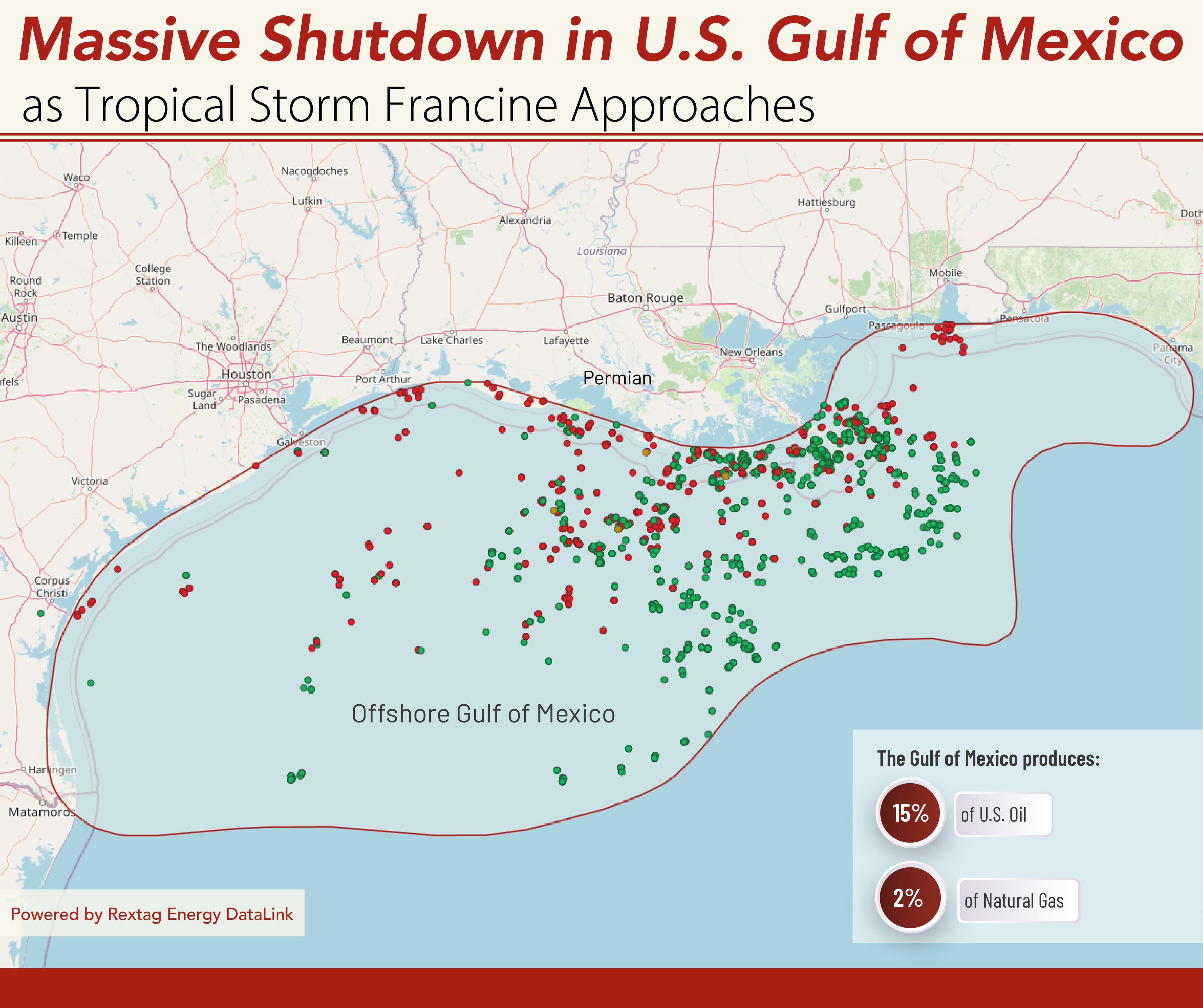
.jpg)

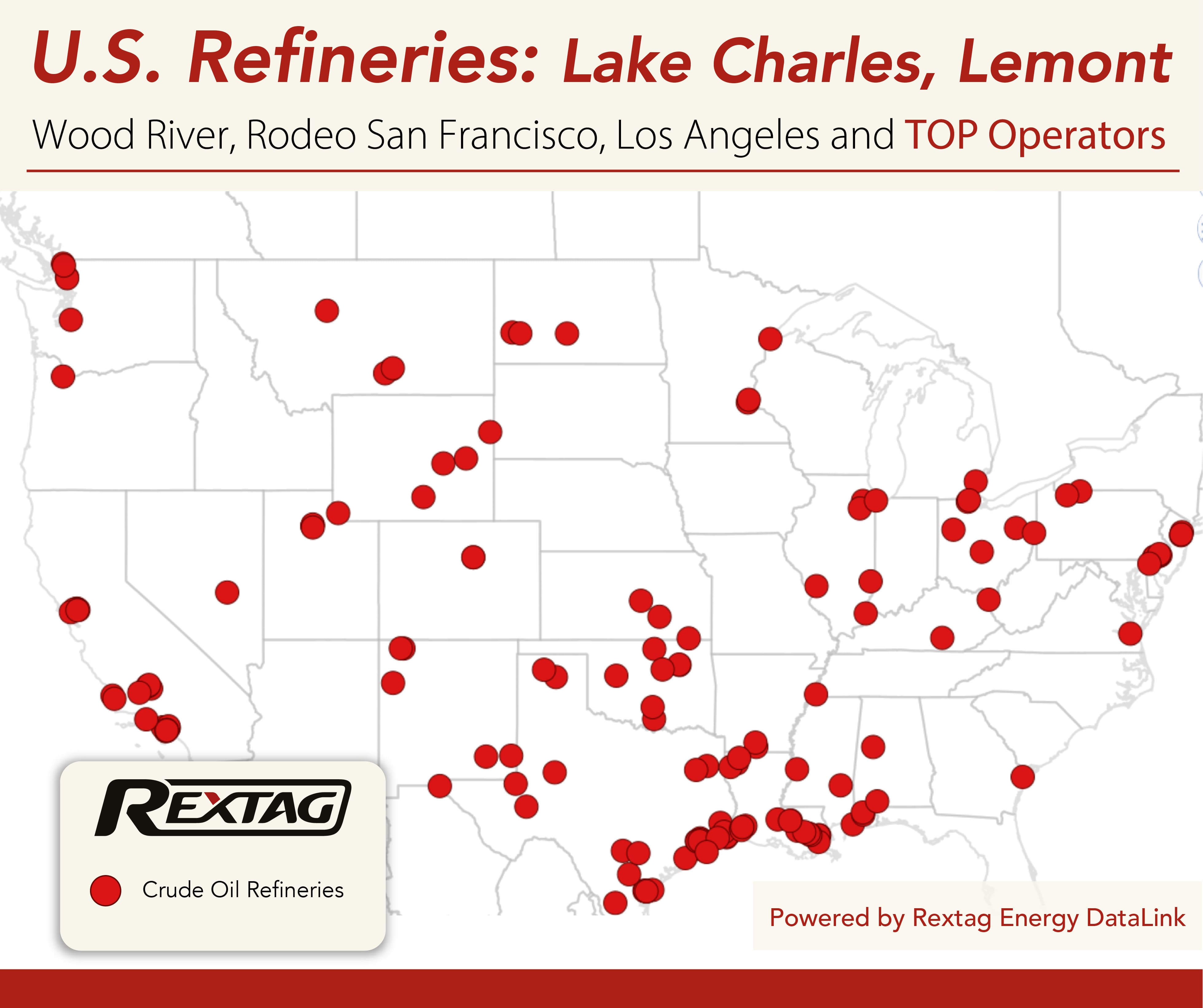
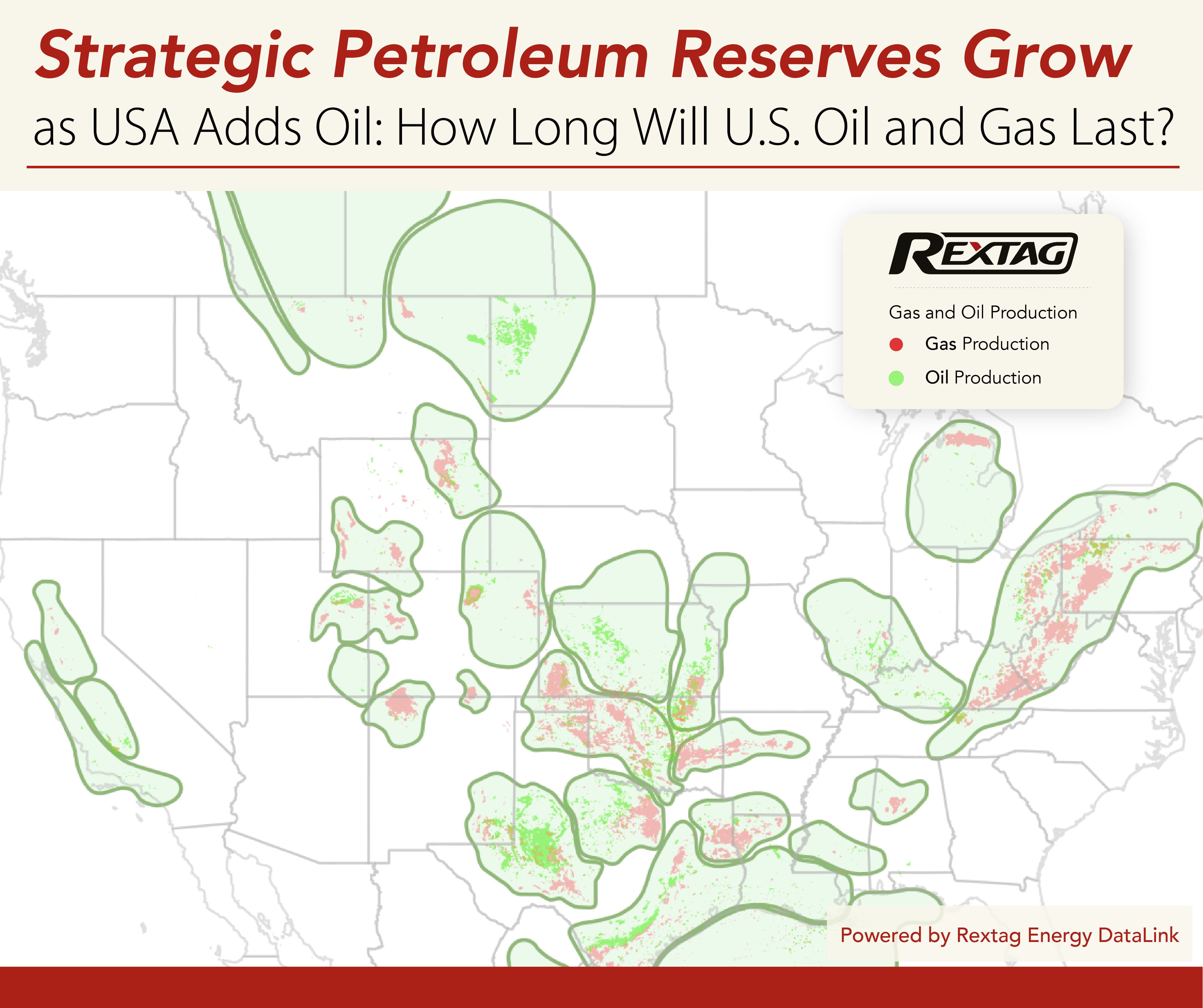
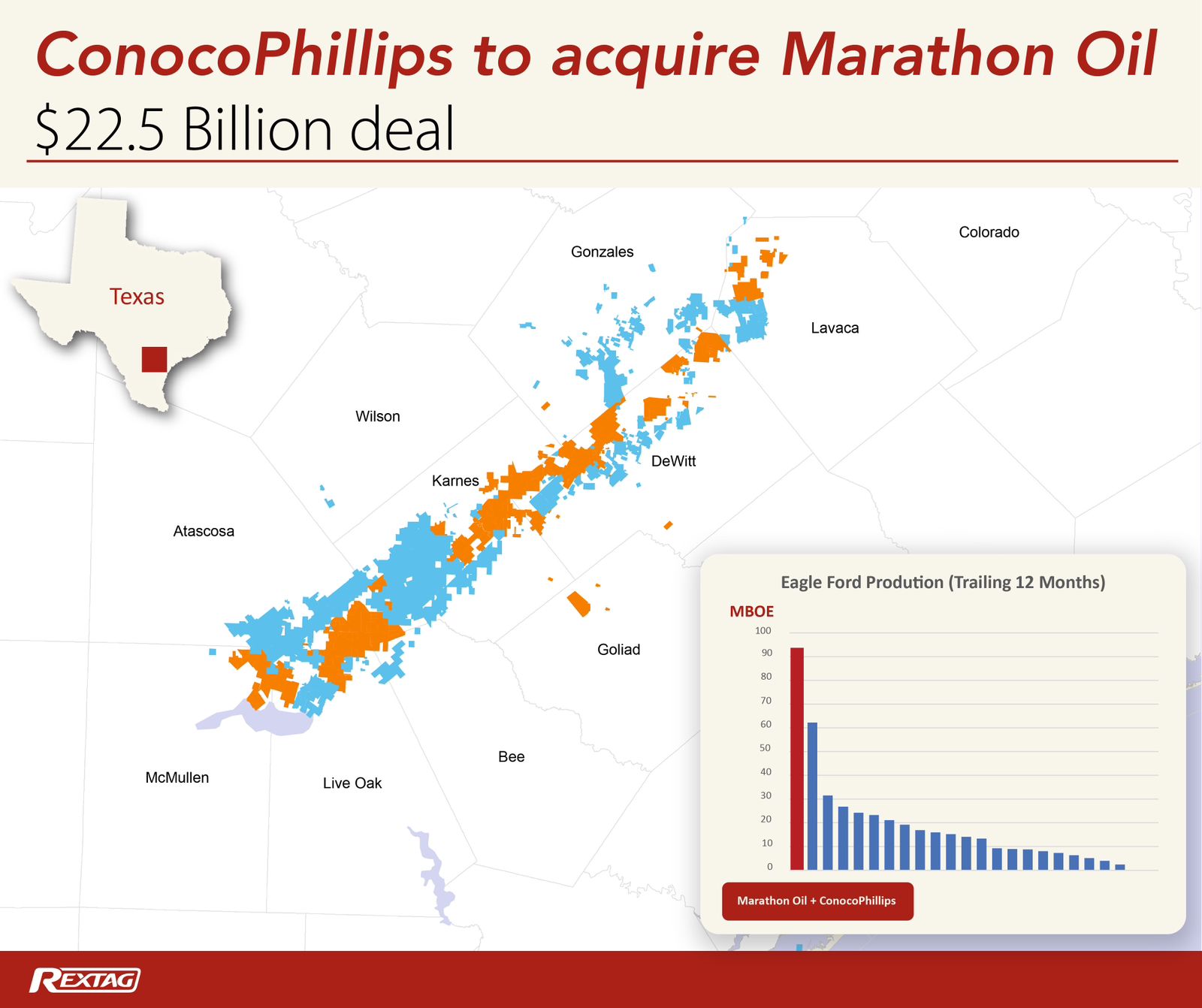
.jpg)
.jpg)


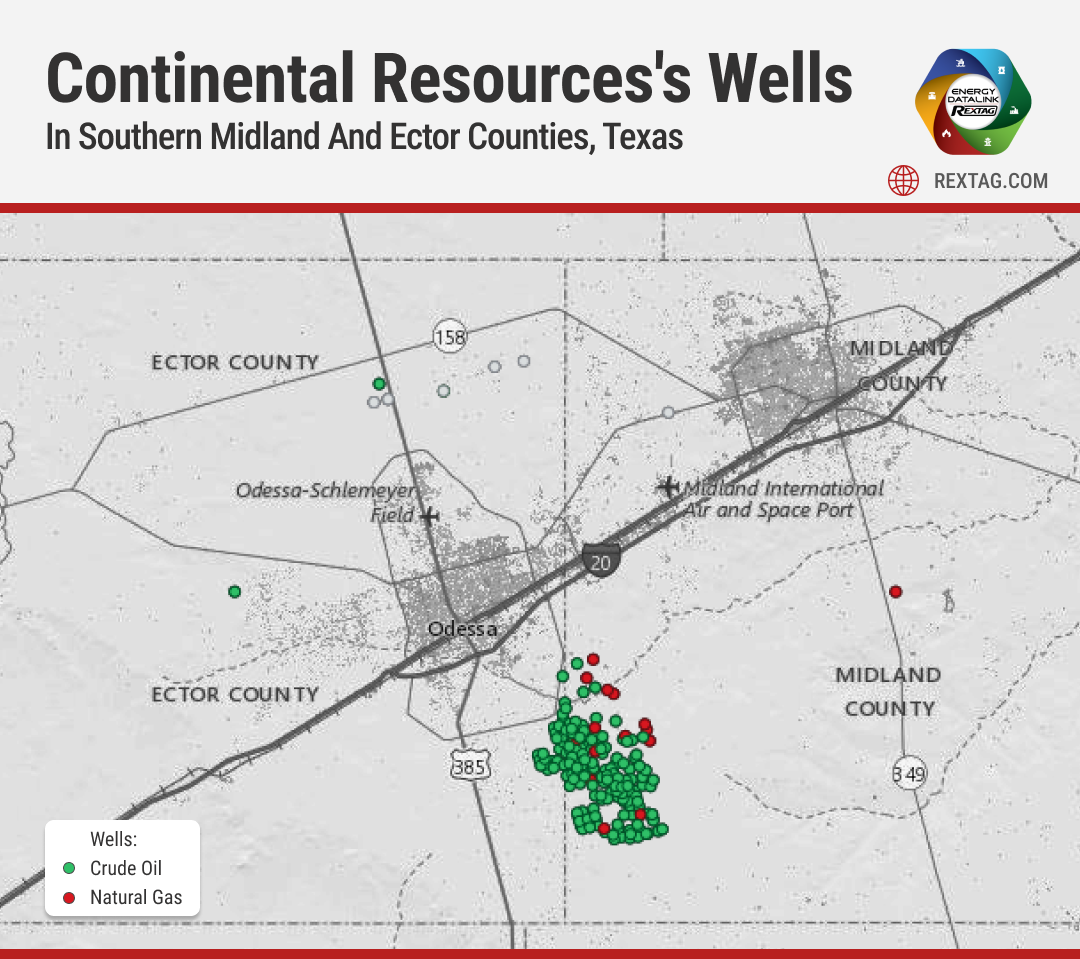
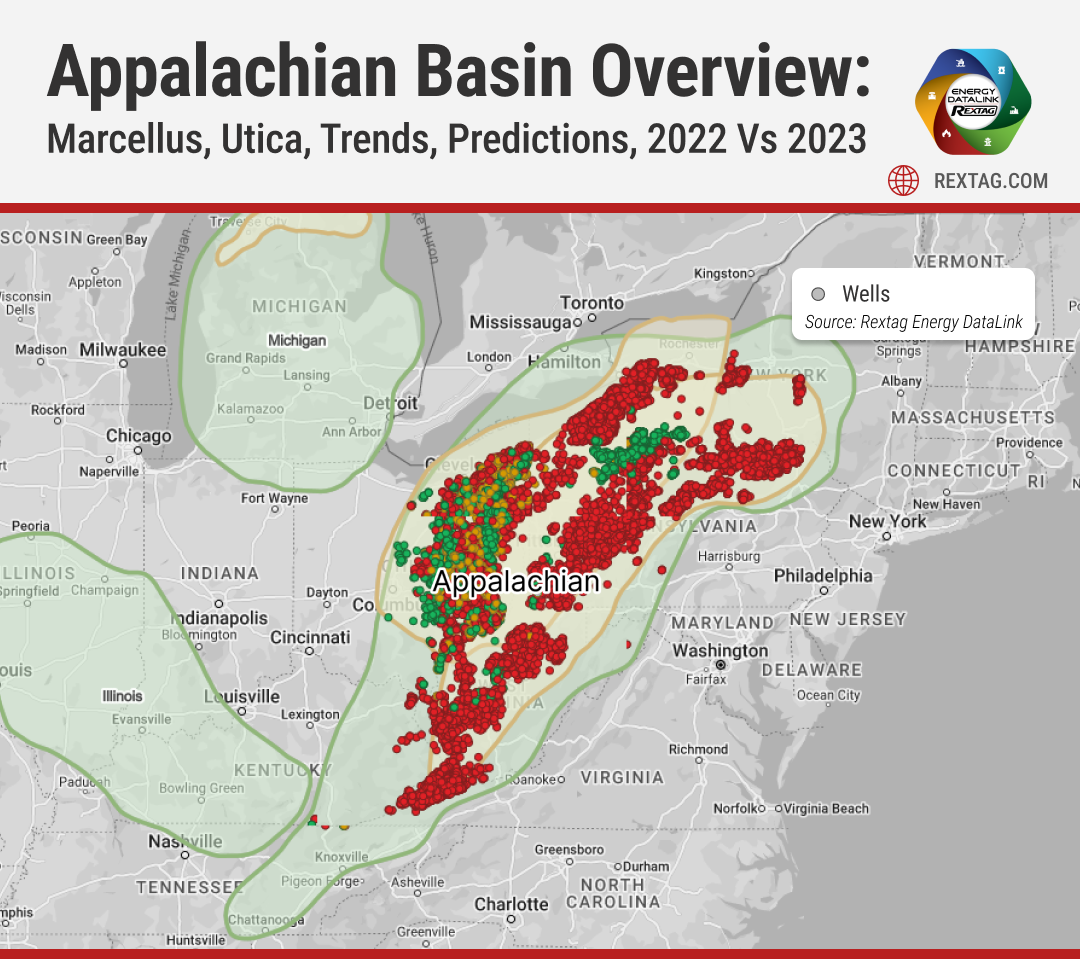
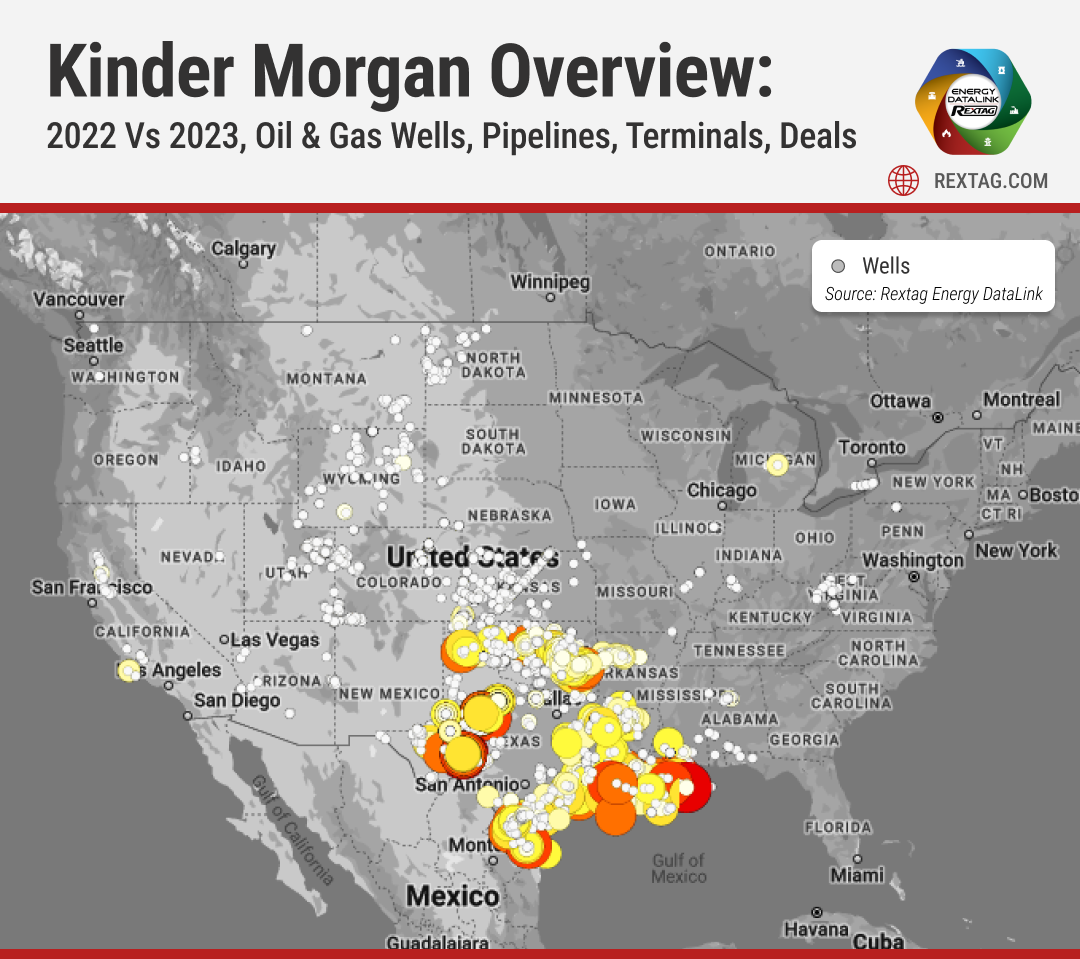
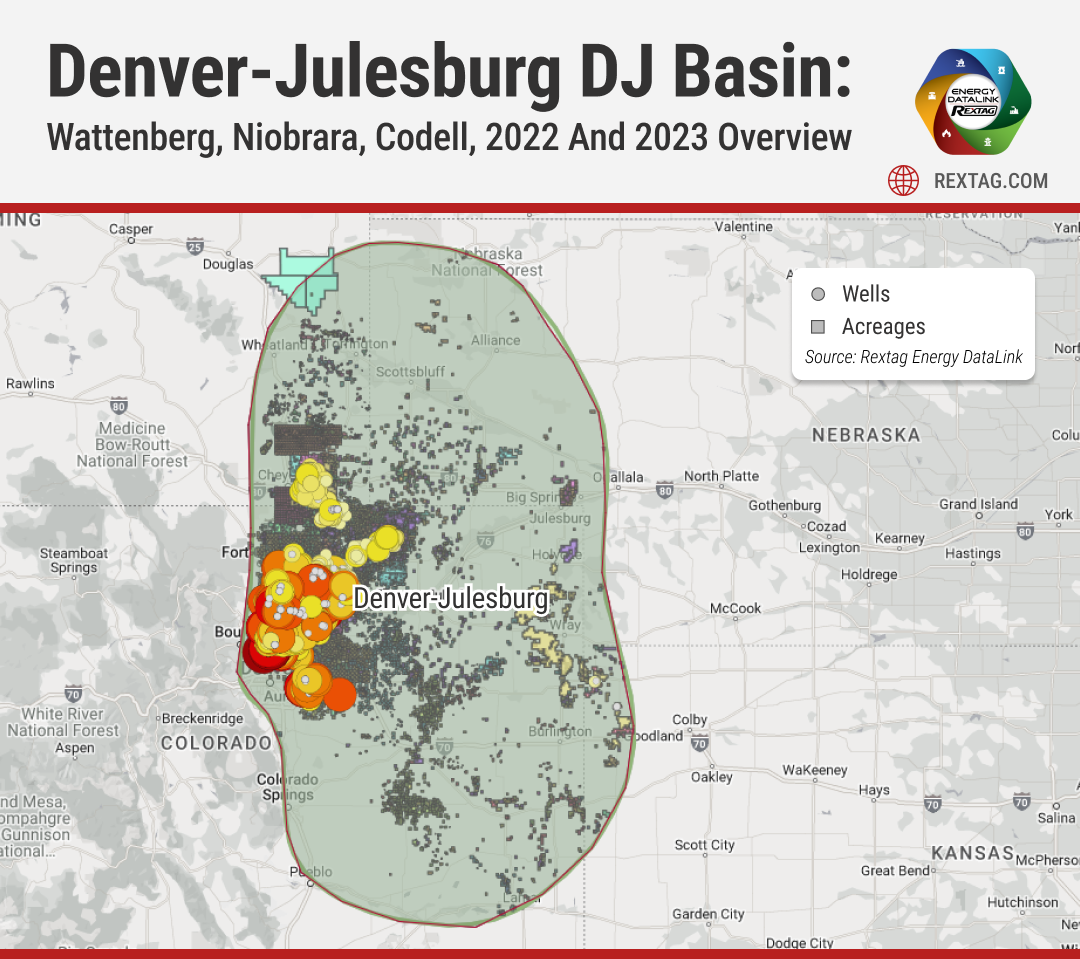
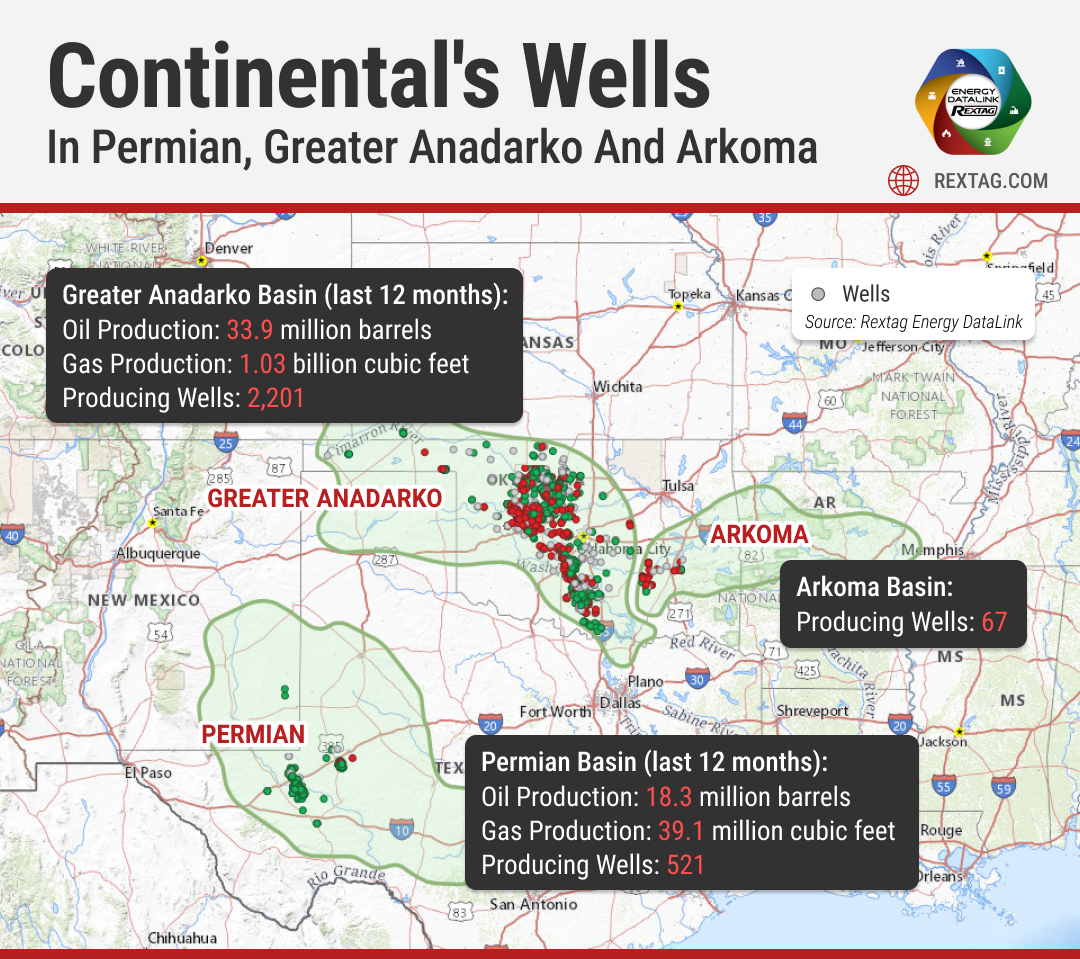

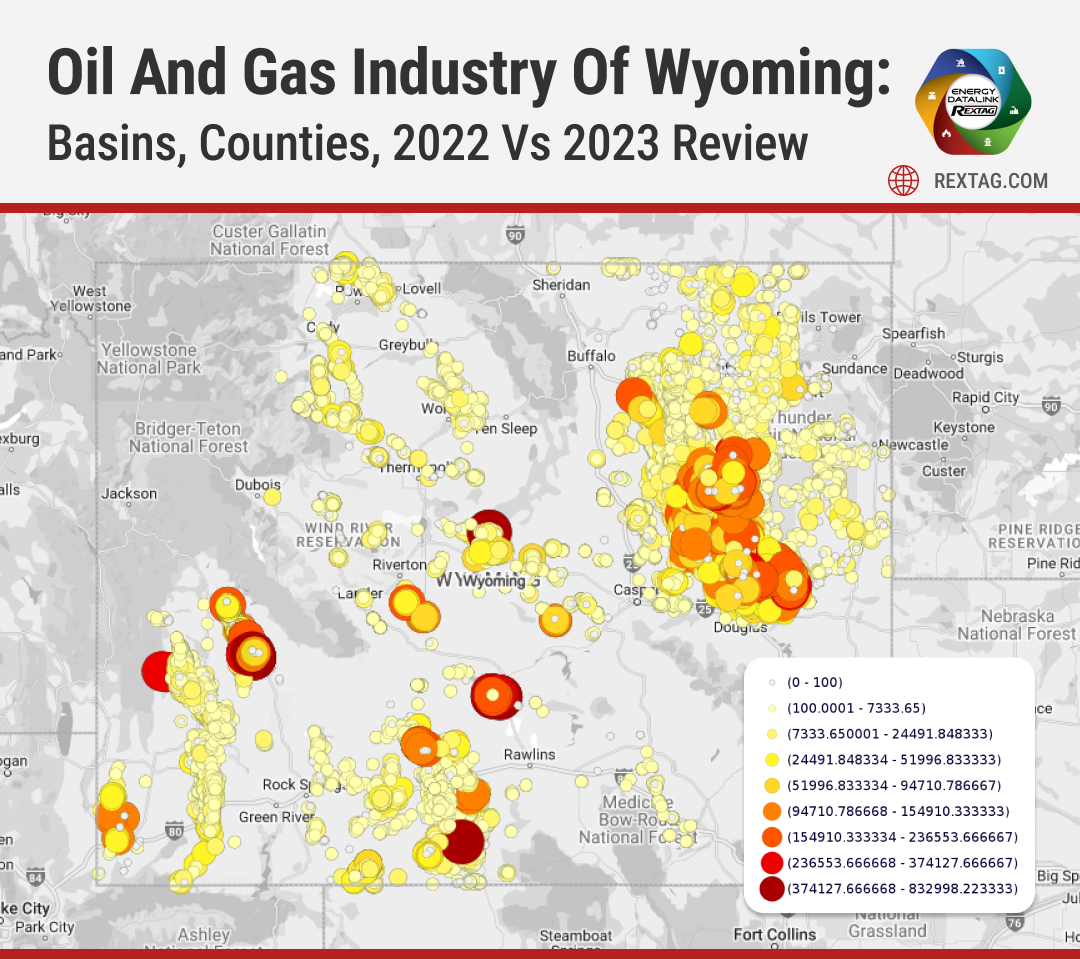
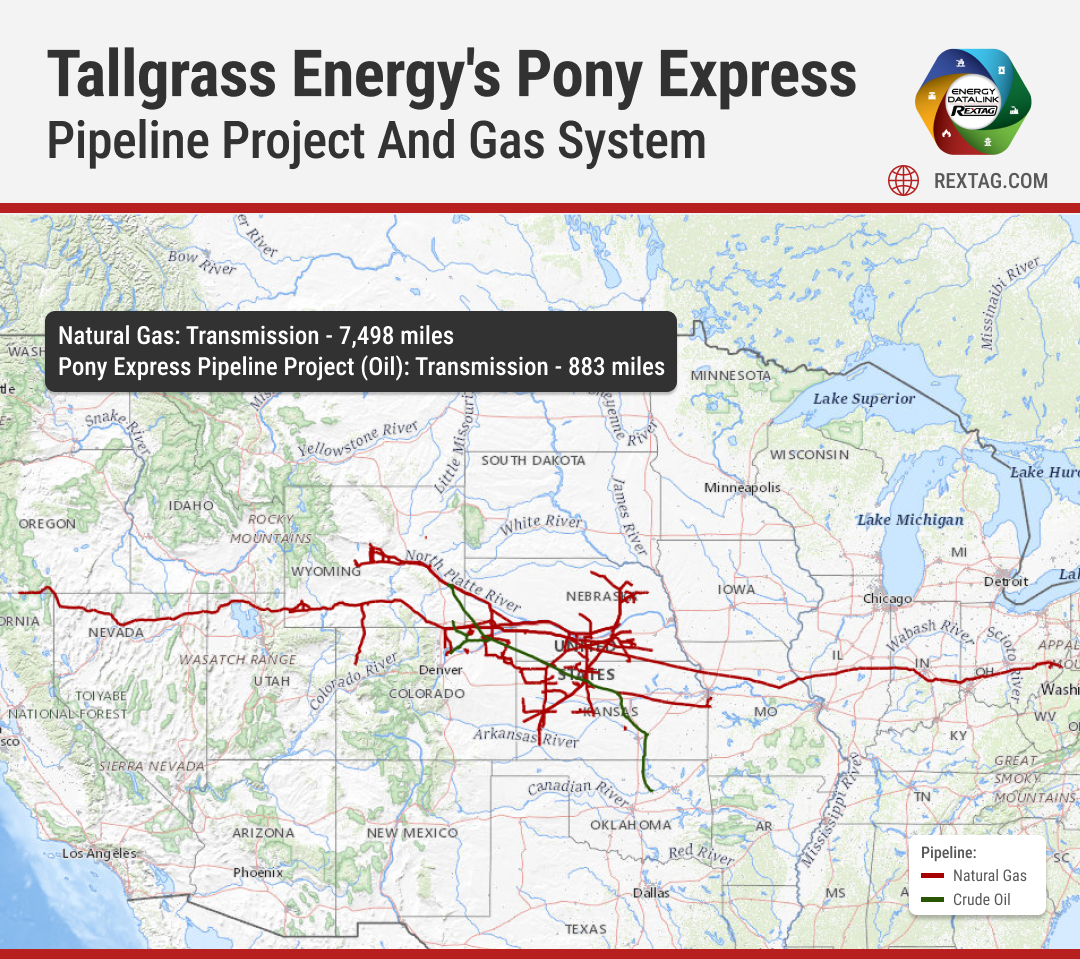
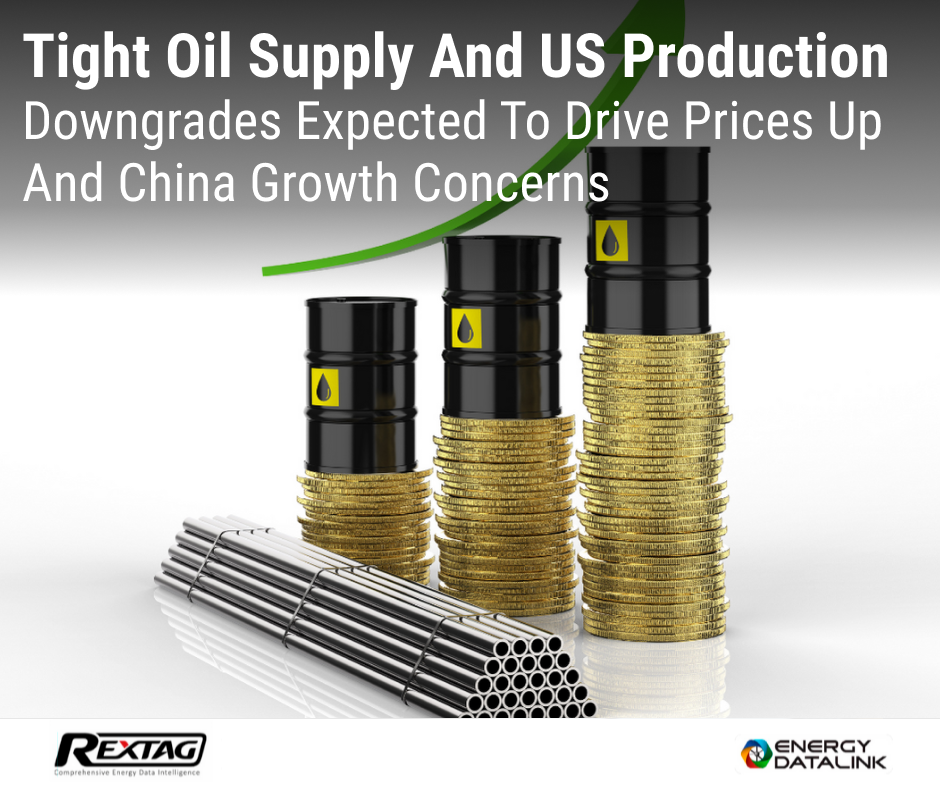
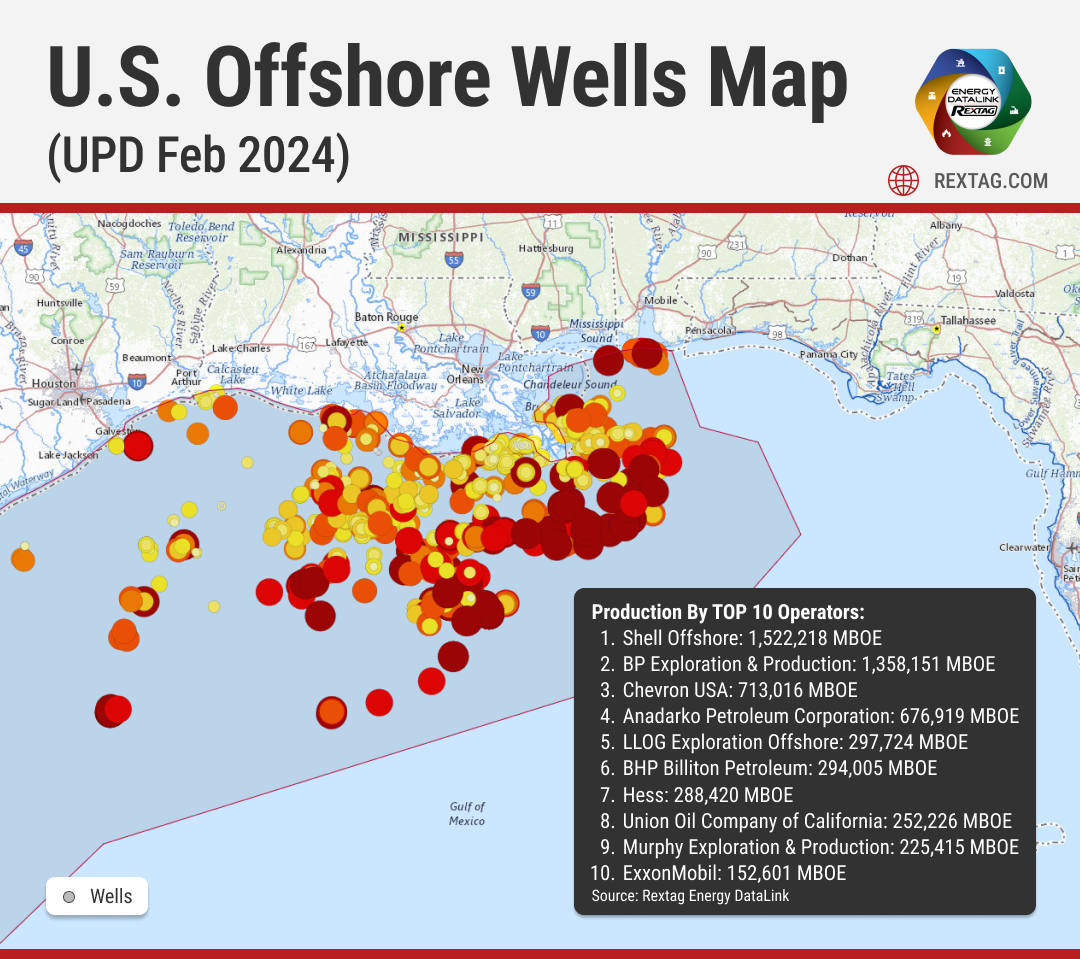
.png)
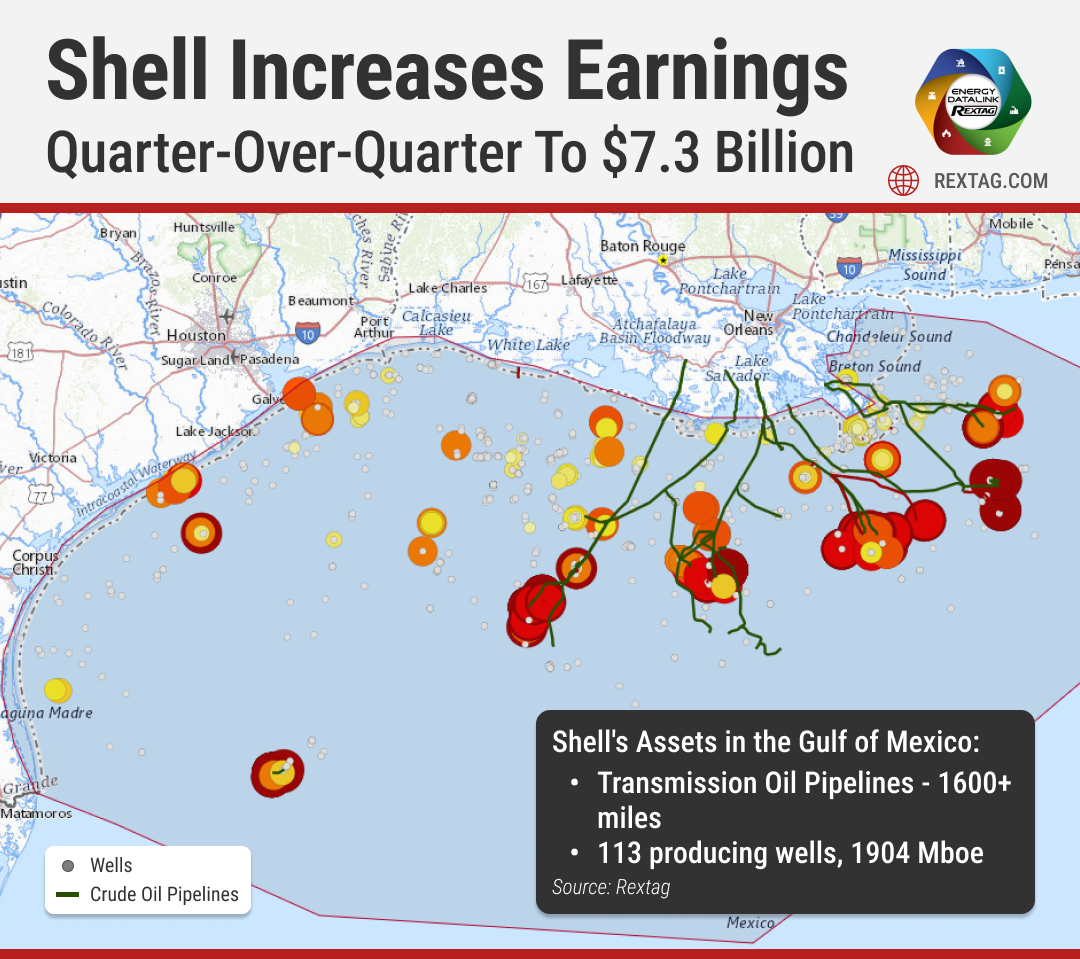
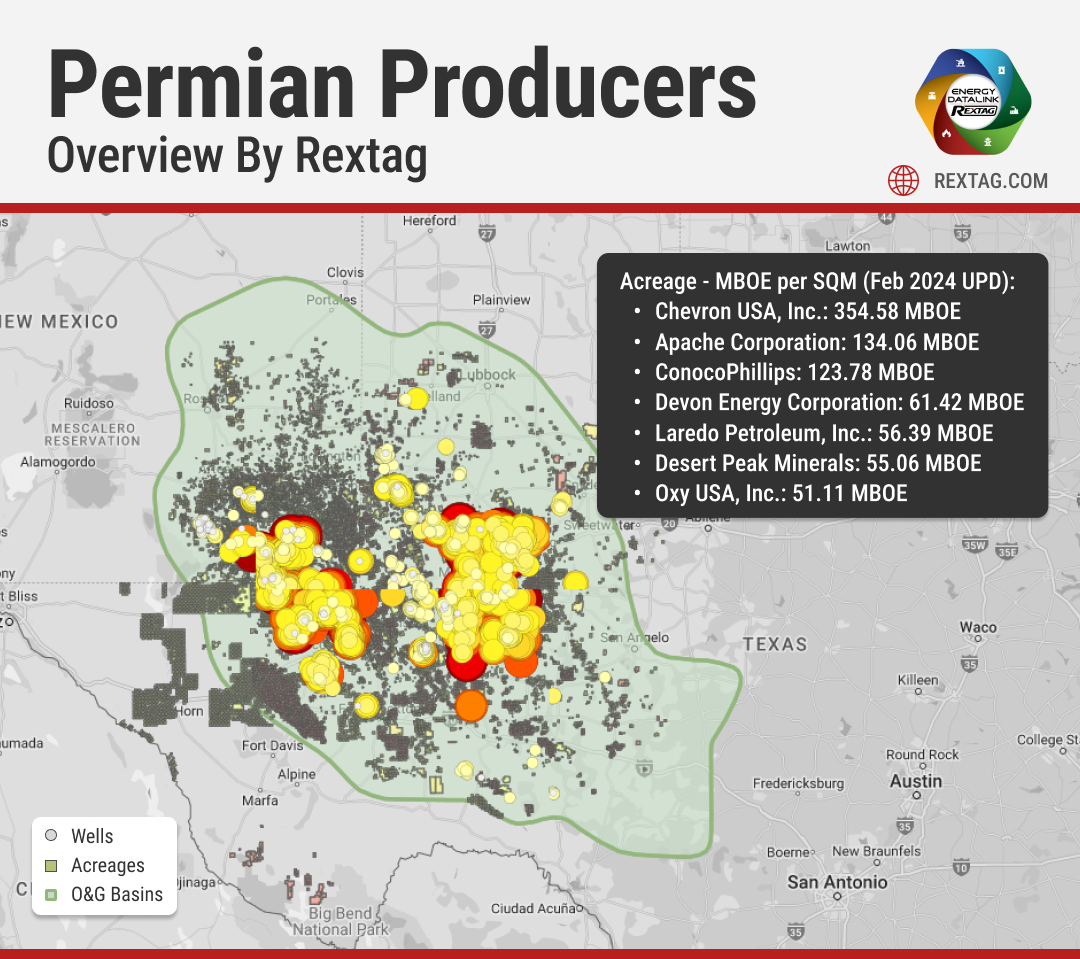


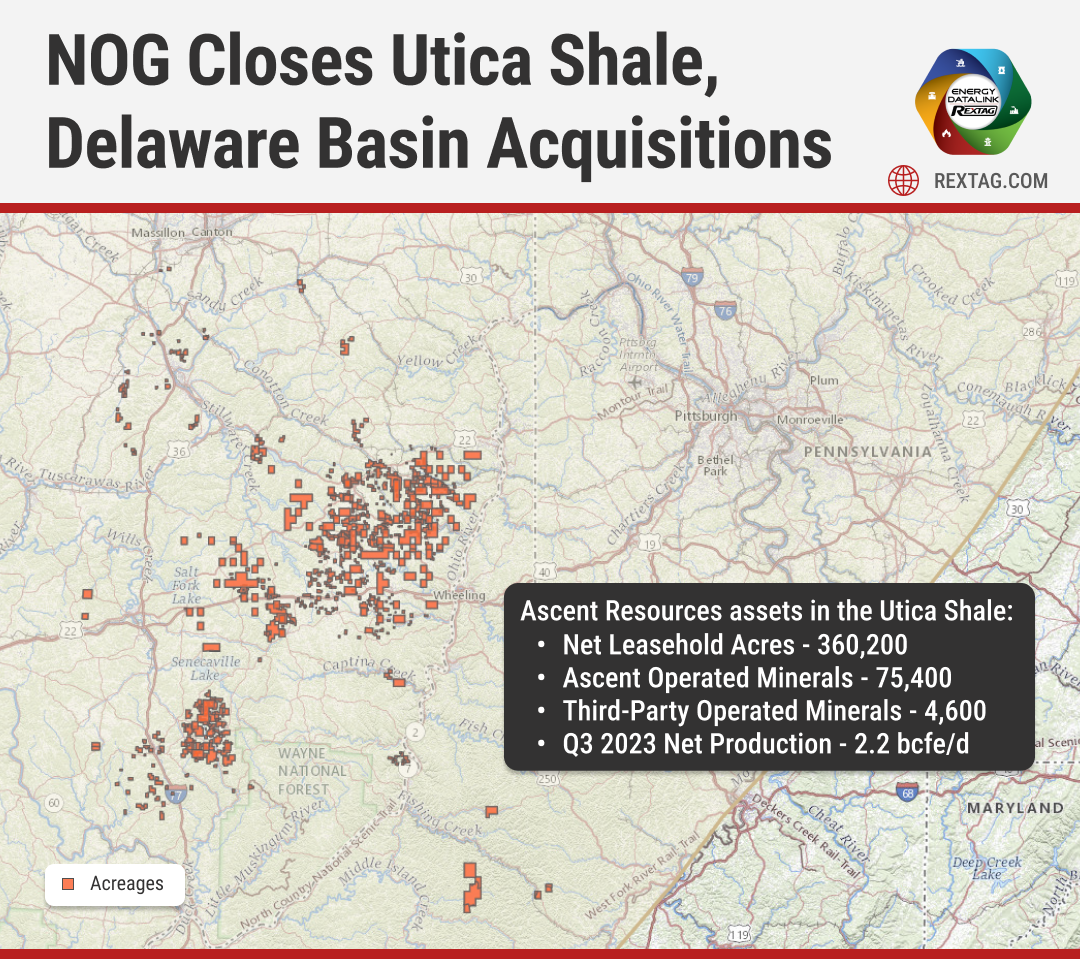

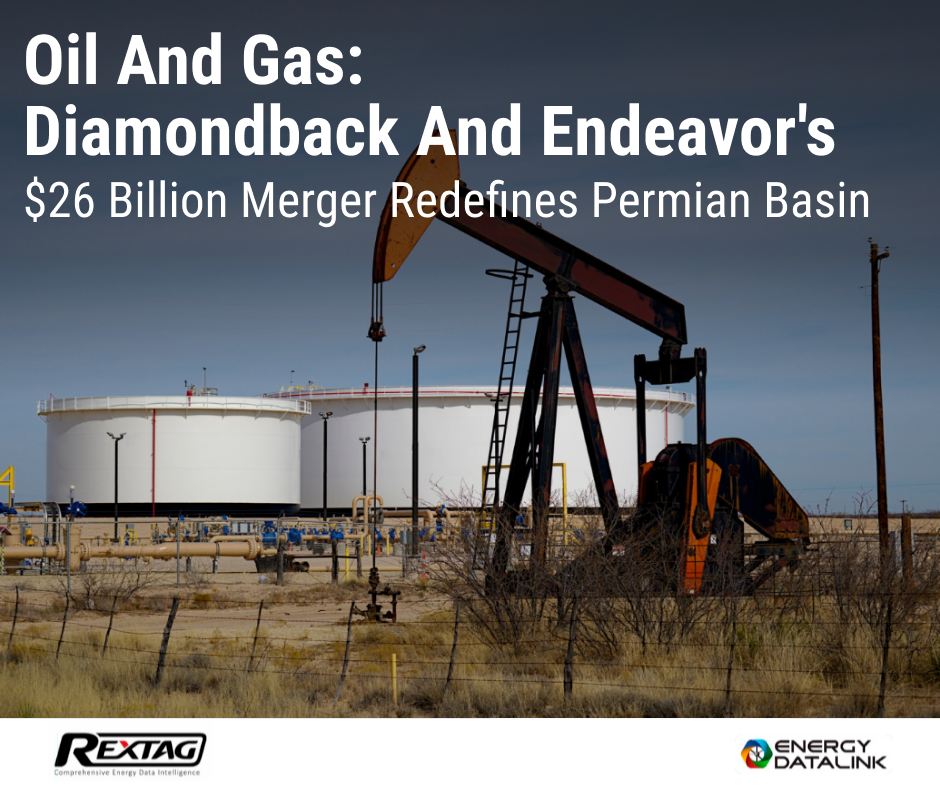
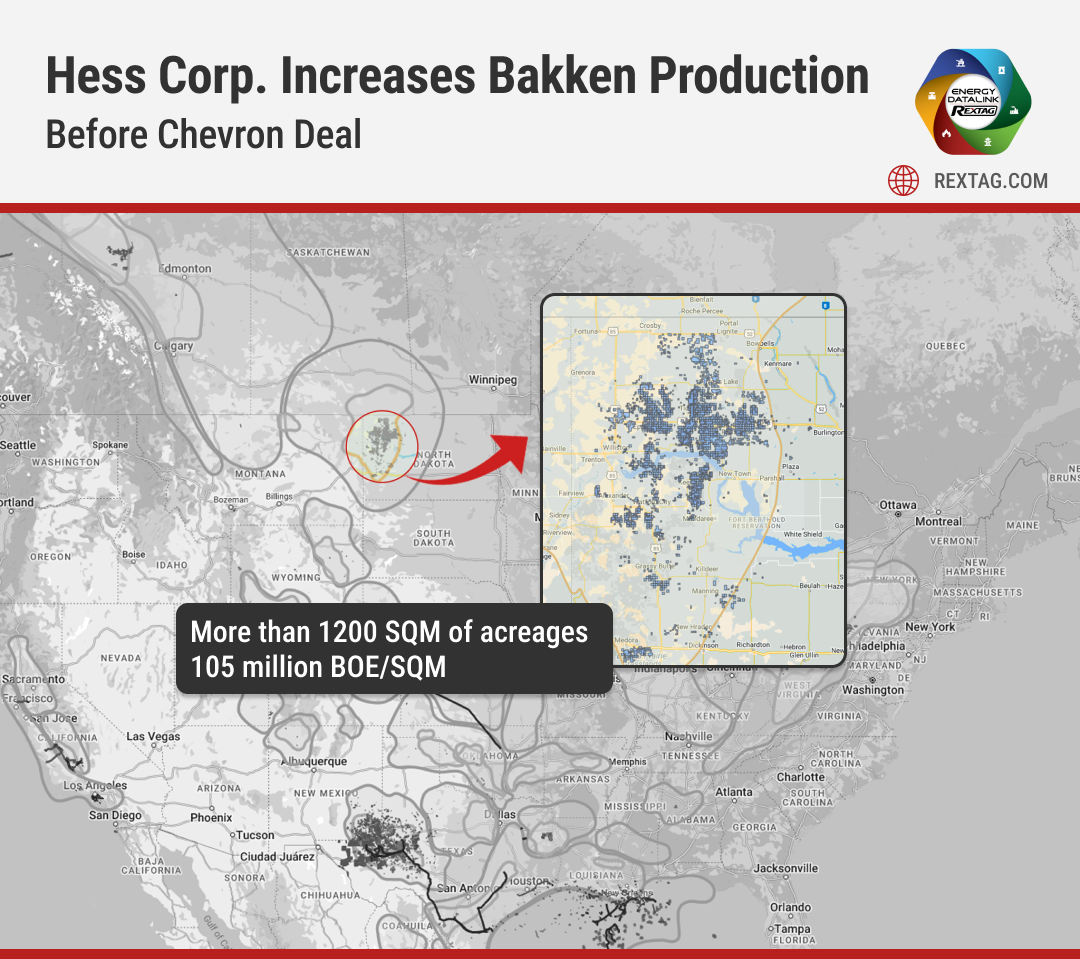
Blog_Grayson Mill acquired Ovintiv's Bakken assets for $825M in 2024.png)
- Occidental, CrownRock Merger Under Regulatory Review_ 2024 Update.png)
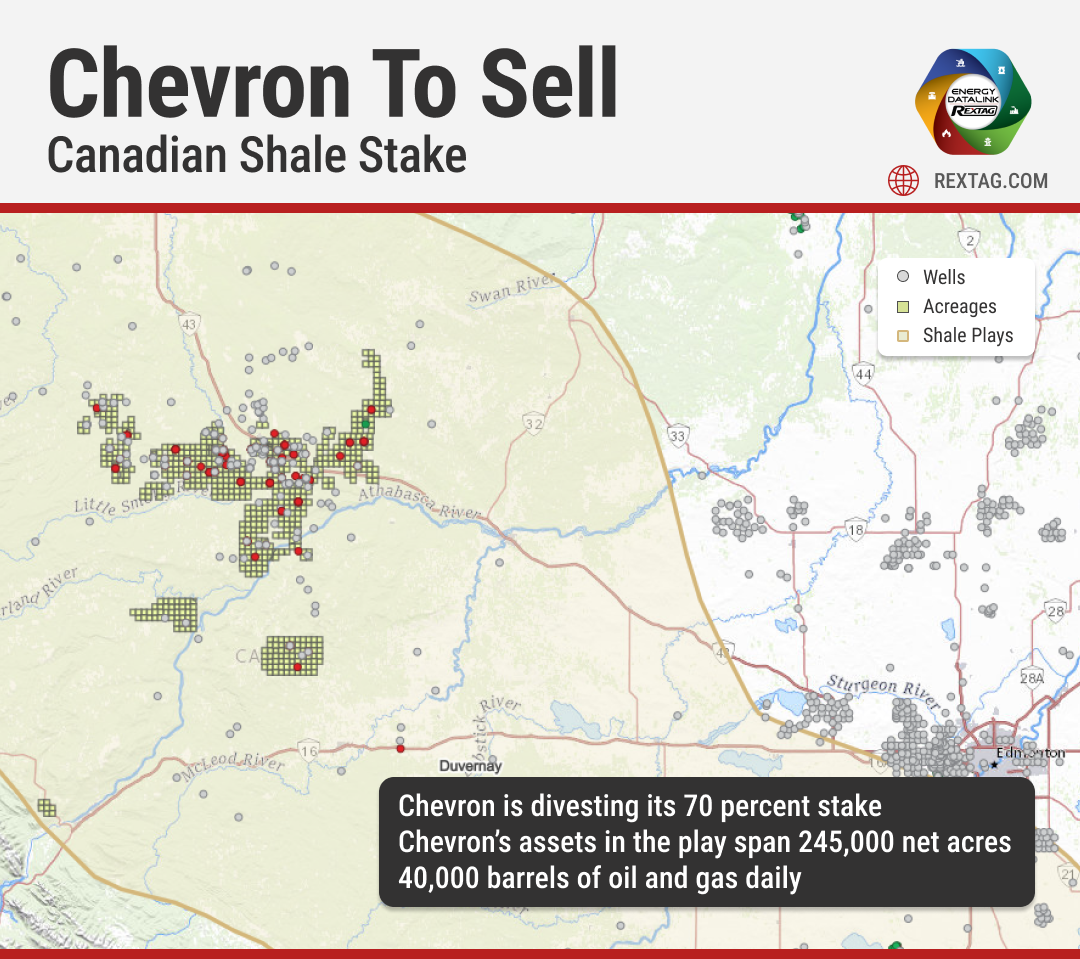
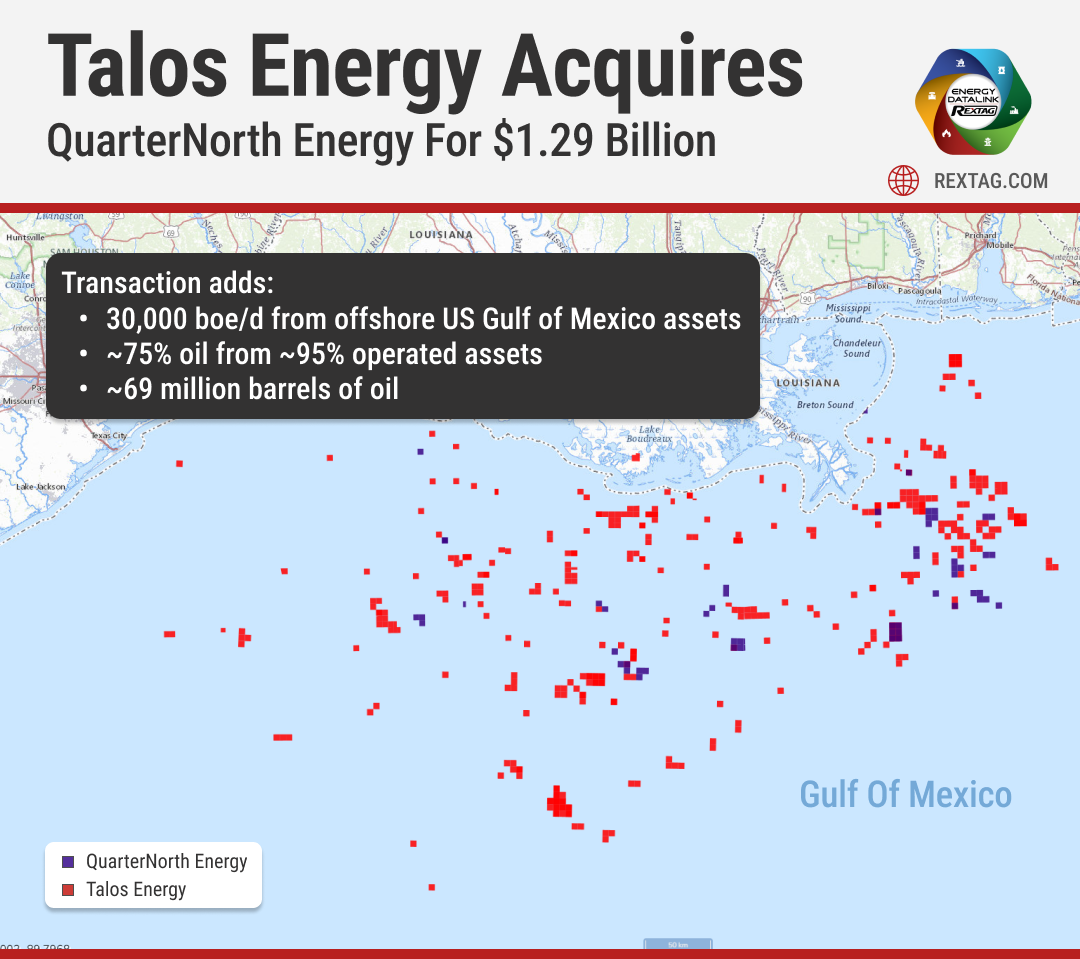
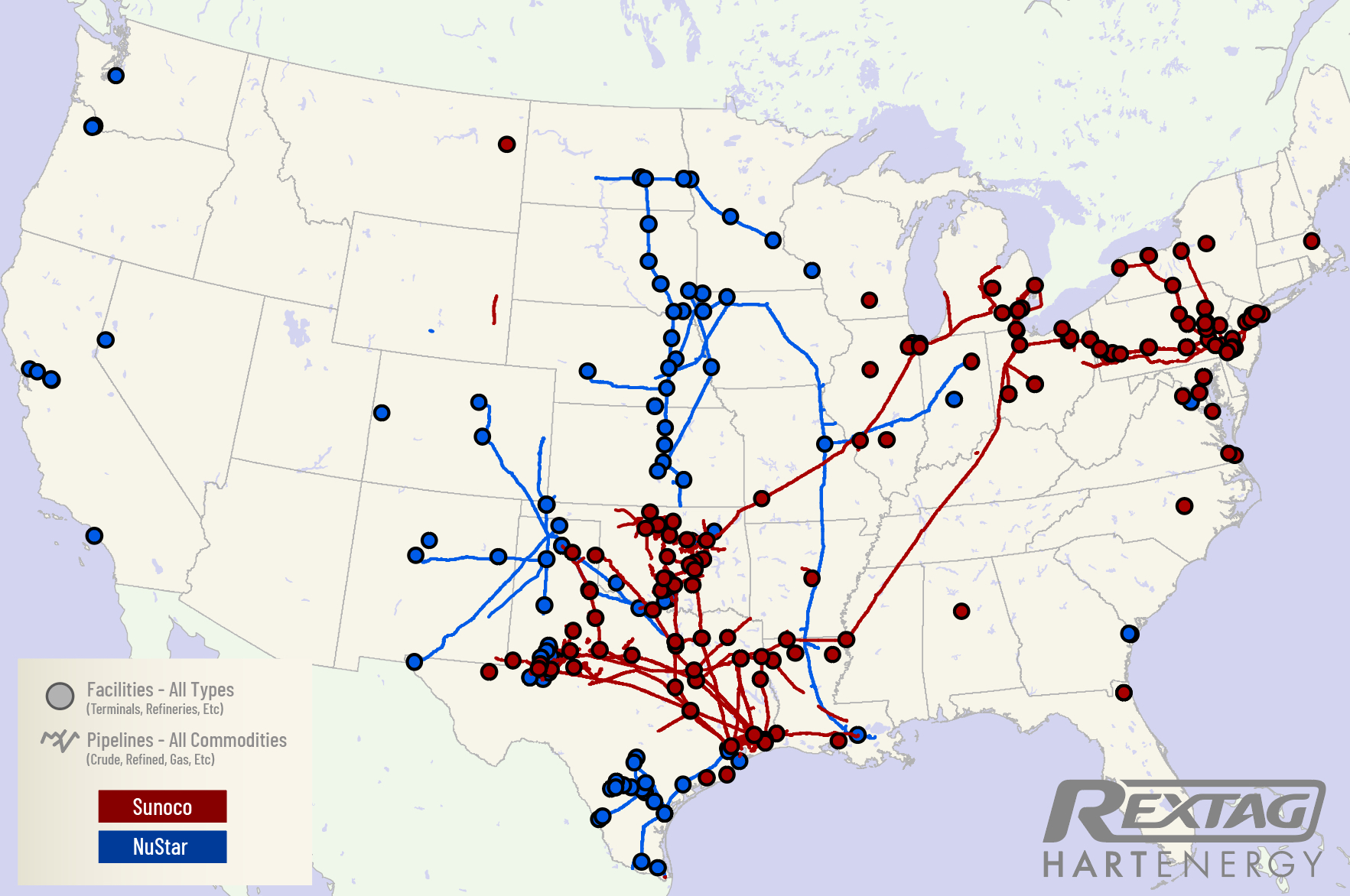
 Welcome 2024_ A Look Back at 2023 Top Oil and Gas Sector Deals.png)
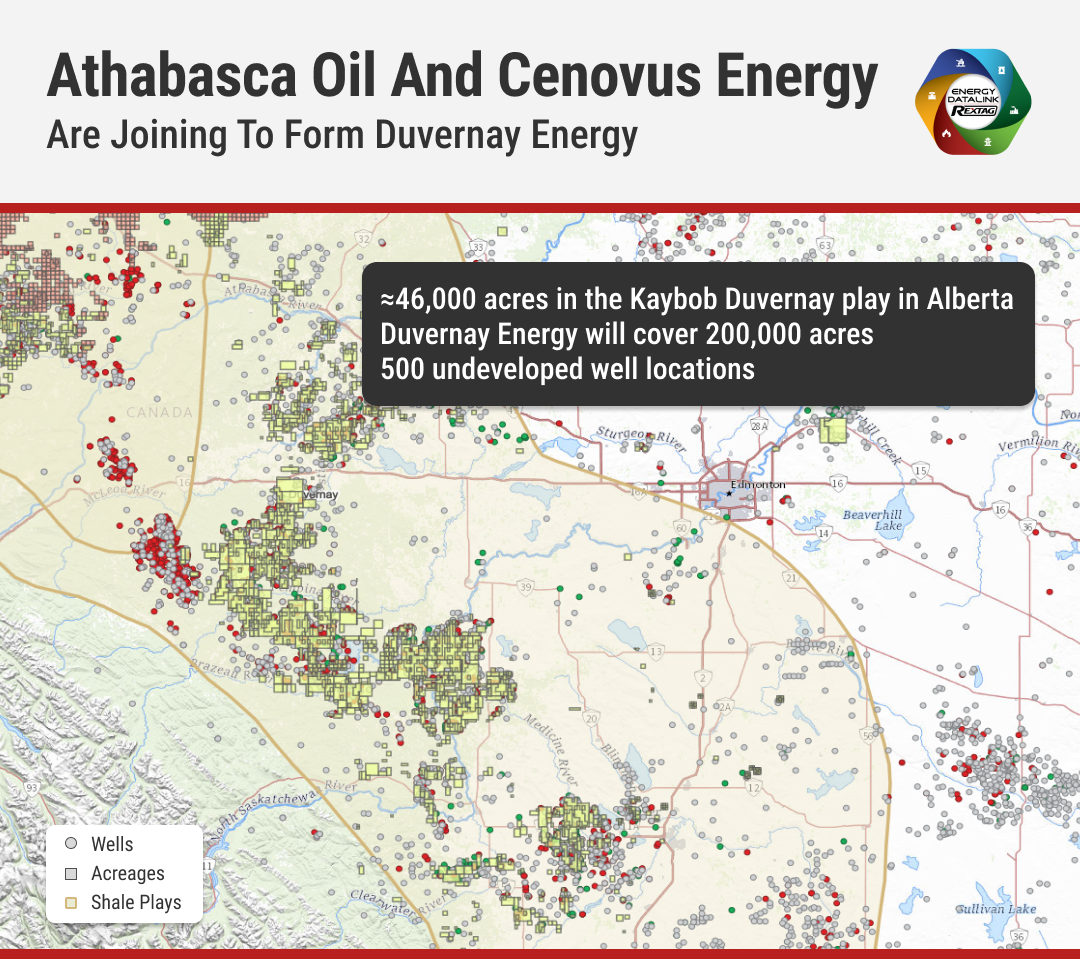
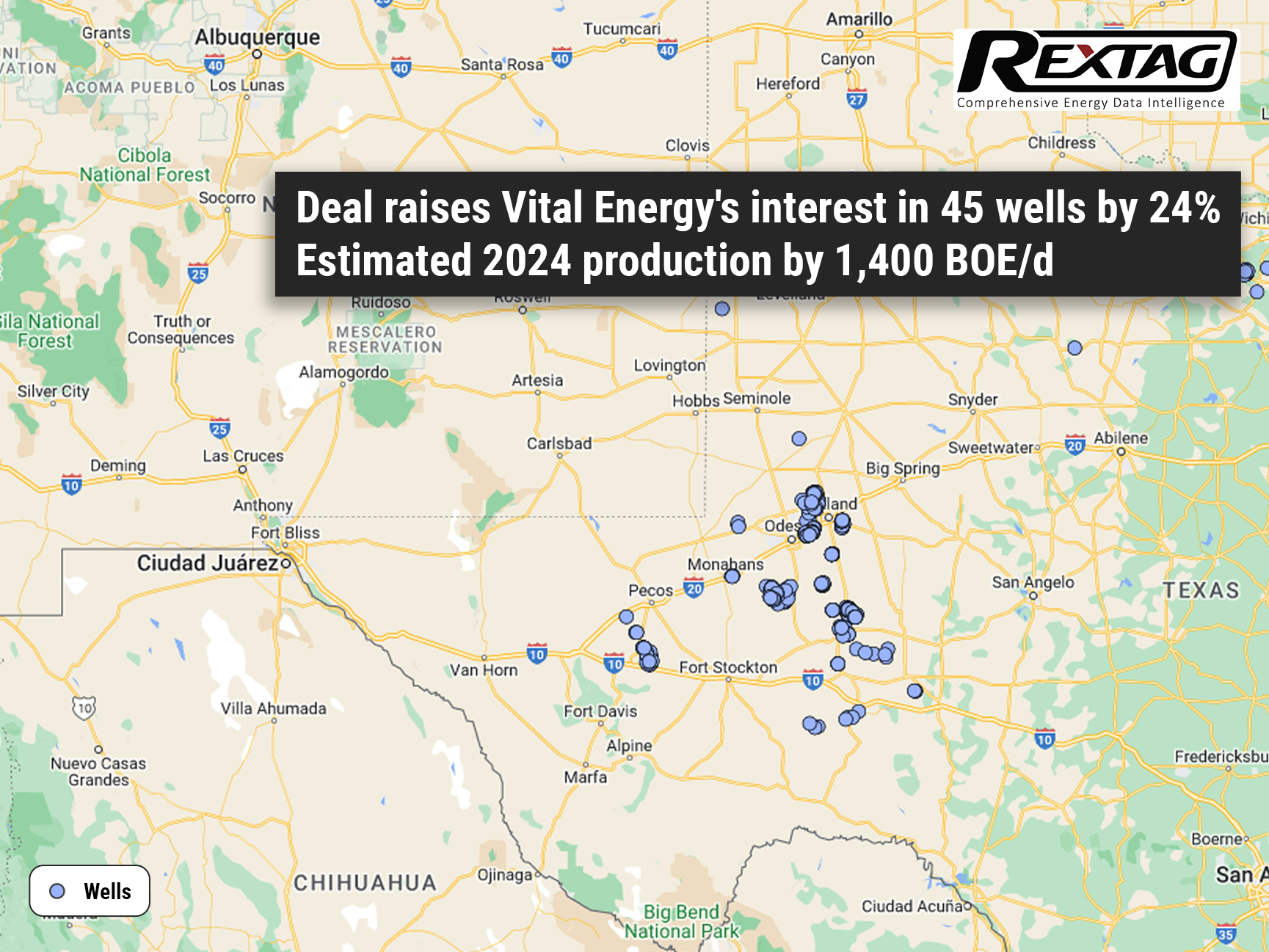
 - Christmas tree and Santa Against Permian Methane Emissions.png)
 How Grinch Almost Made Off with All Oil from Santa's TX-based Barrels.png)
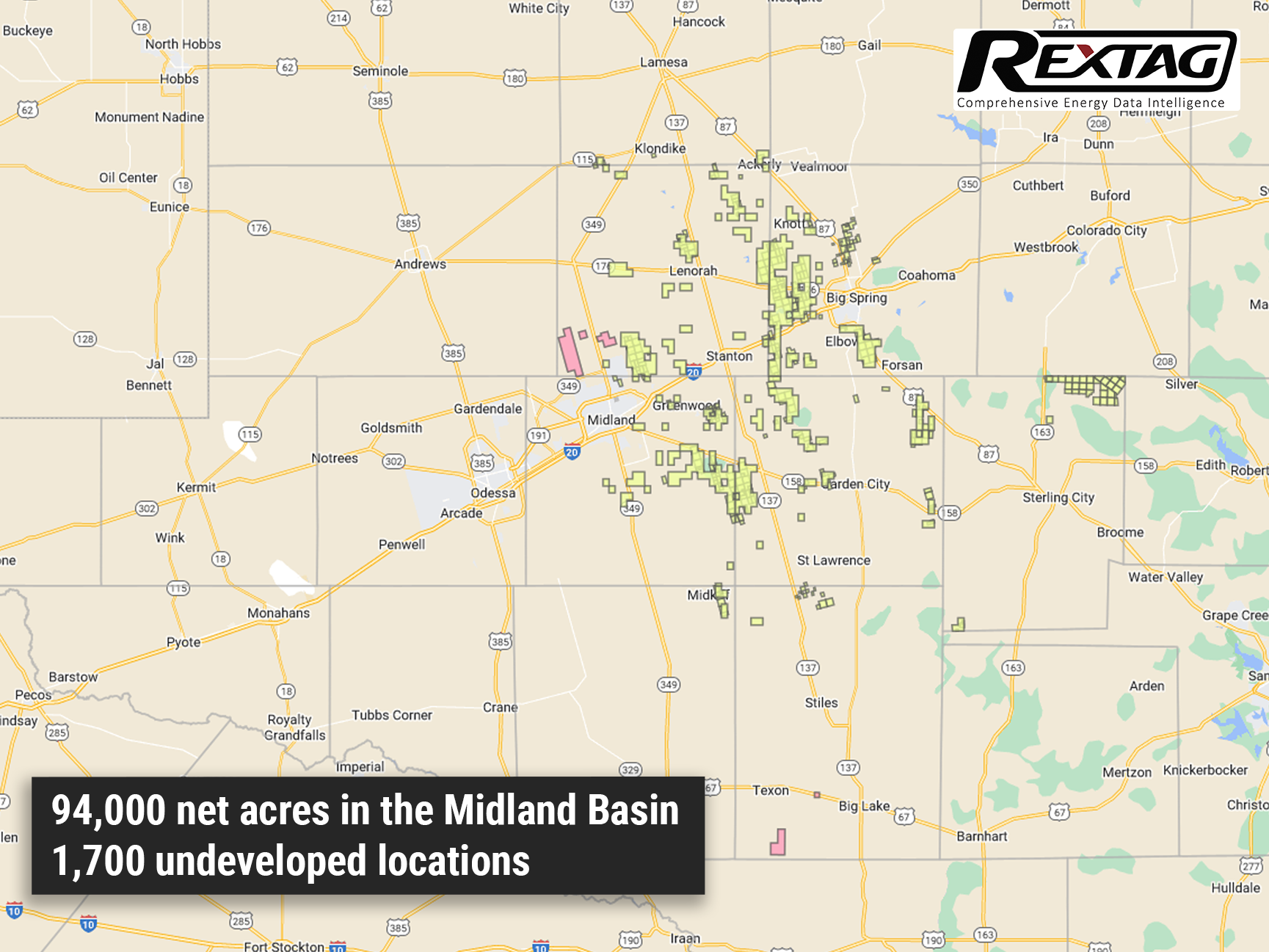
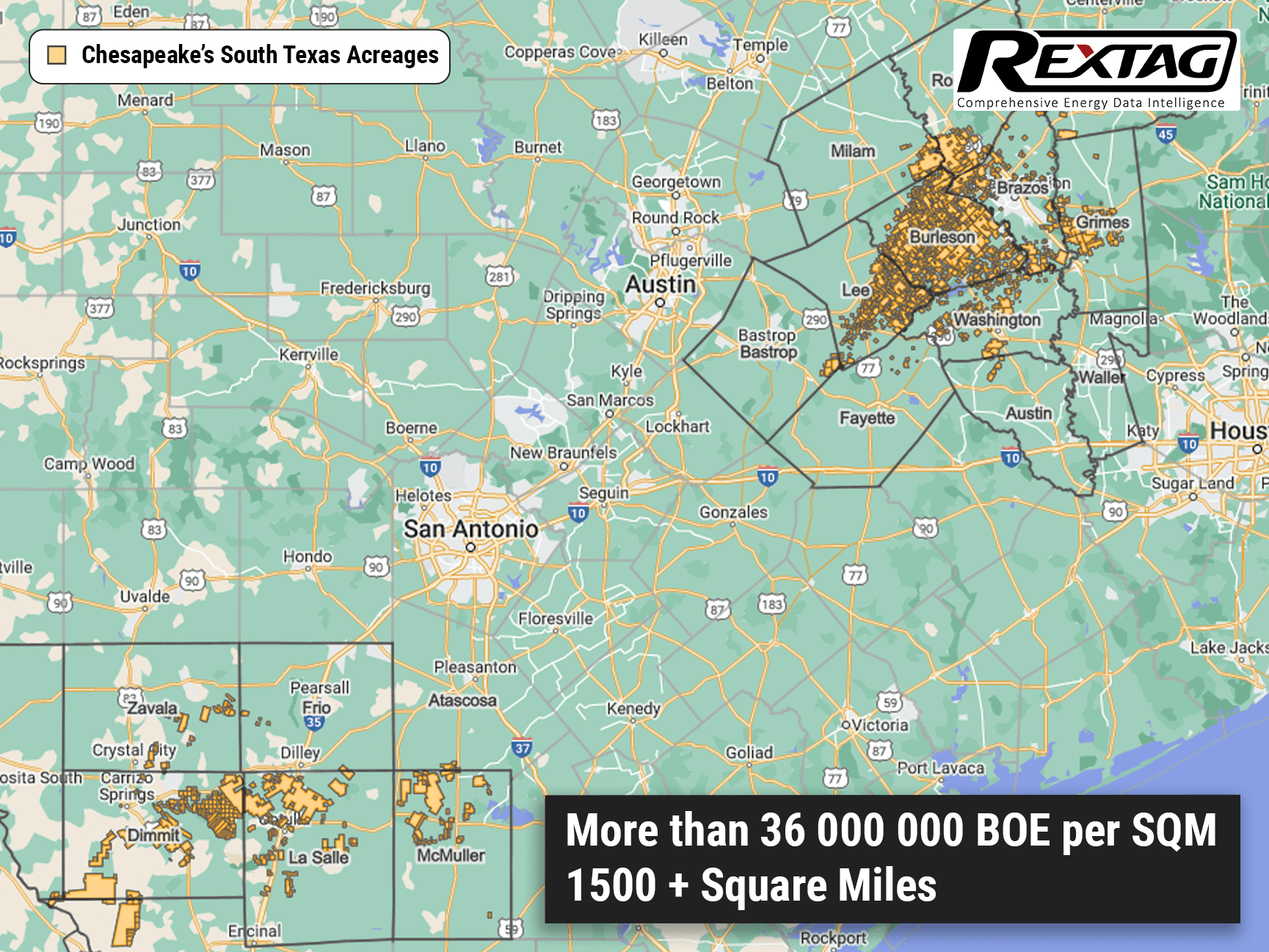
 Tenaris Acquires Mattr's Pipe Coating Division for $166 Million.png)
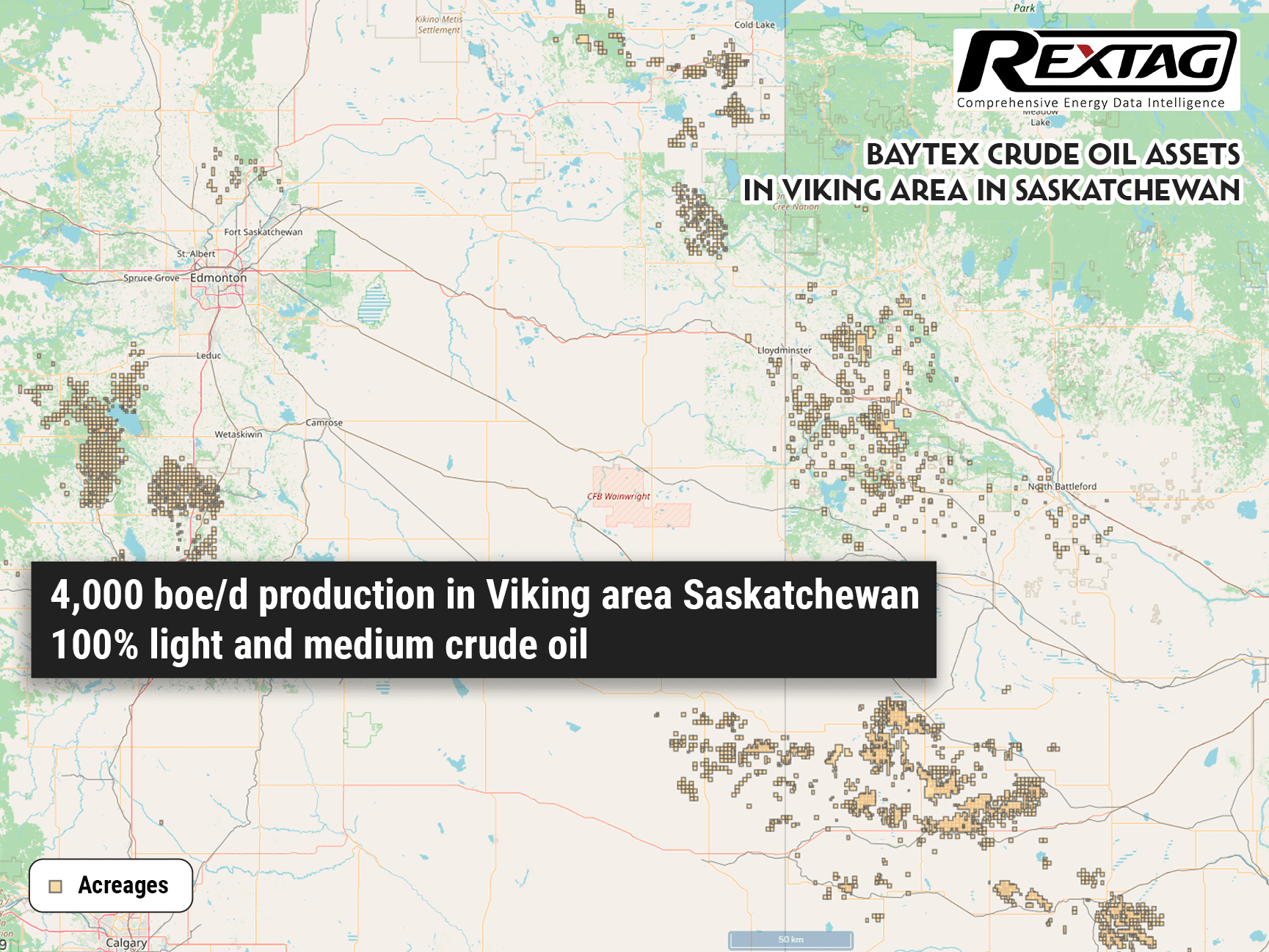
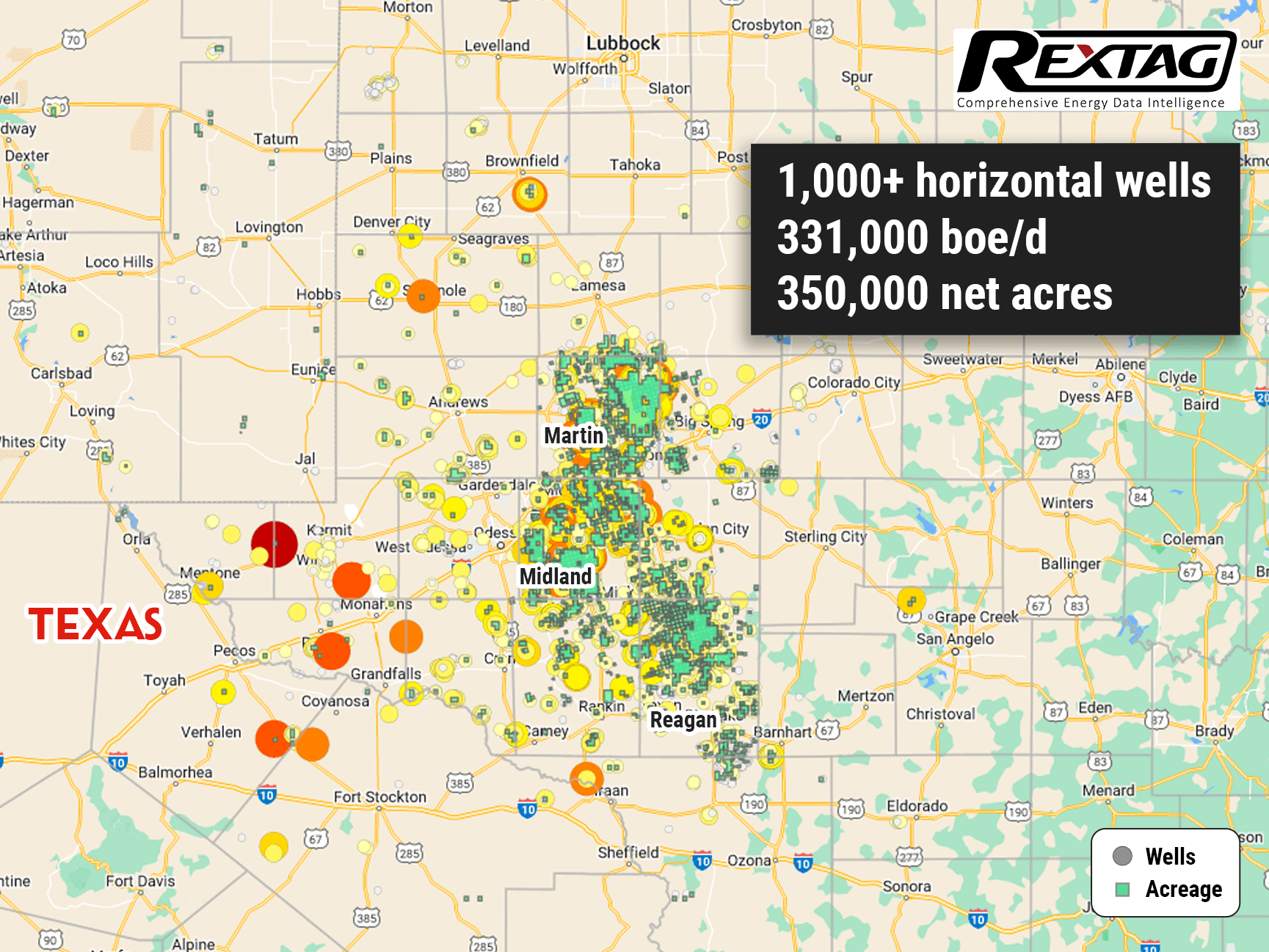
 Gulf Mexico Oil and Gas Map_ 2023 Review.png)
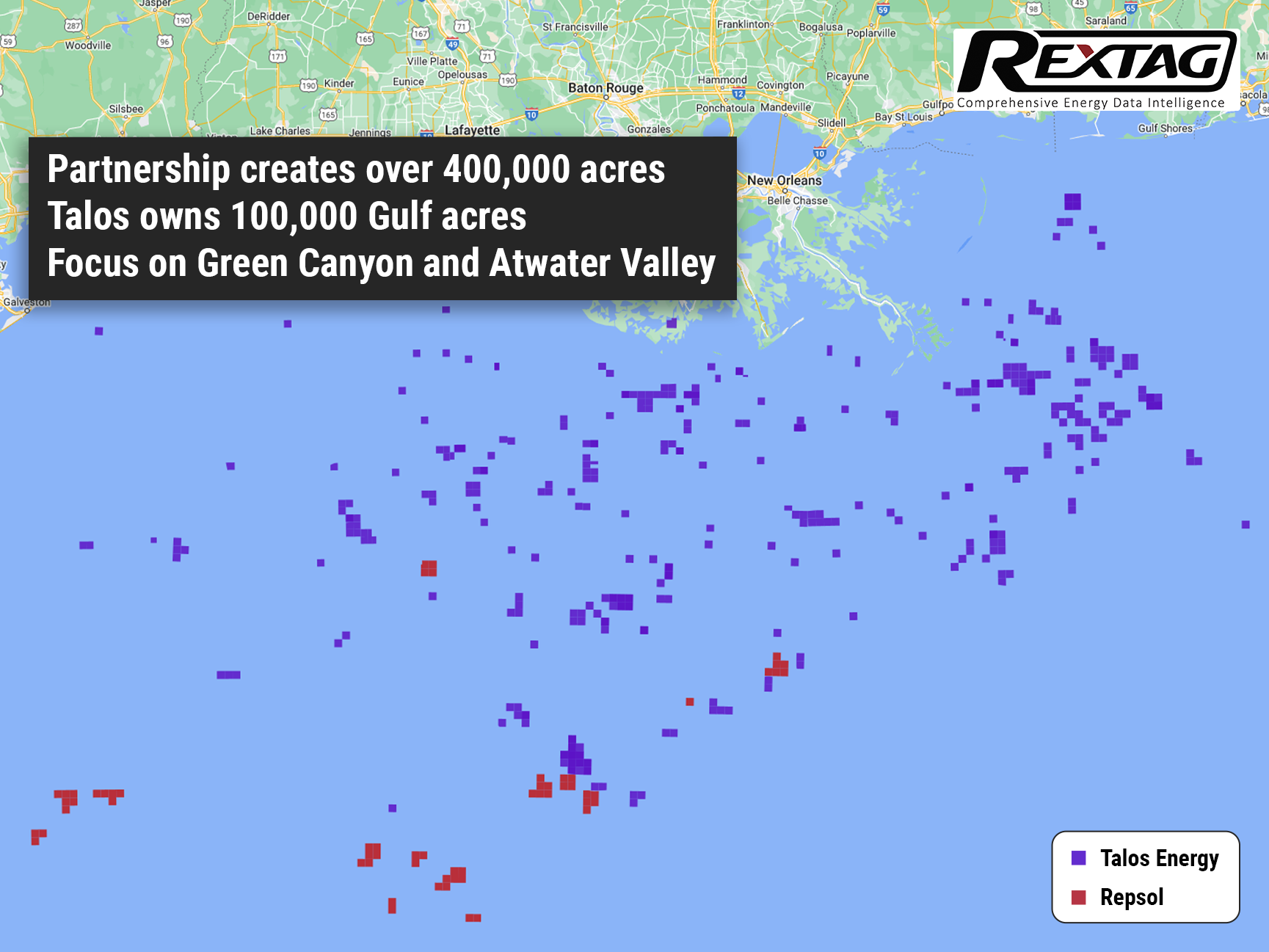
.png)
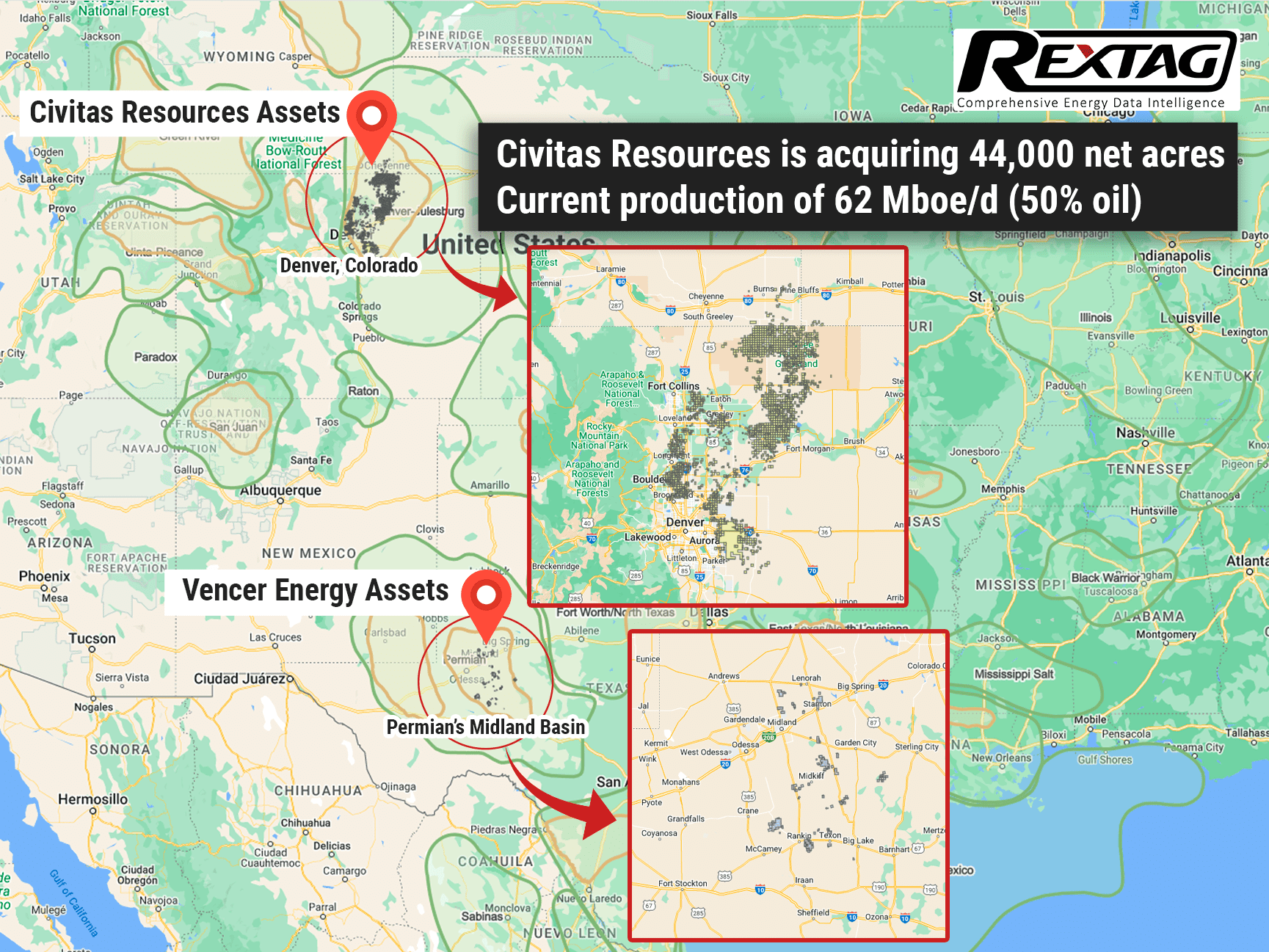
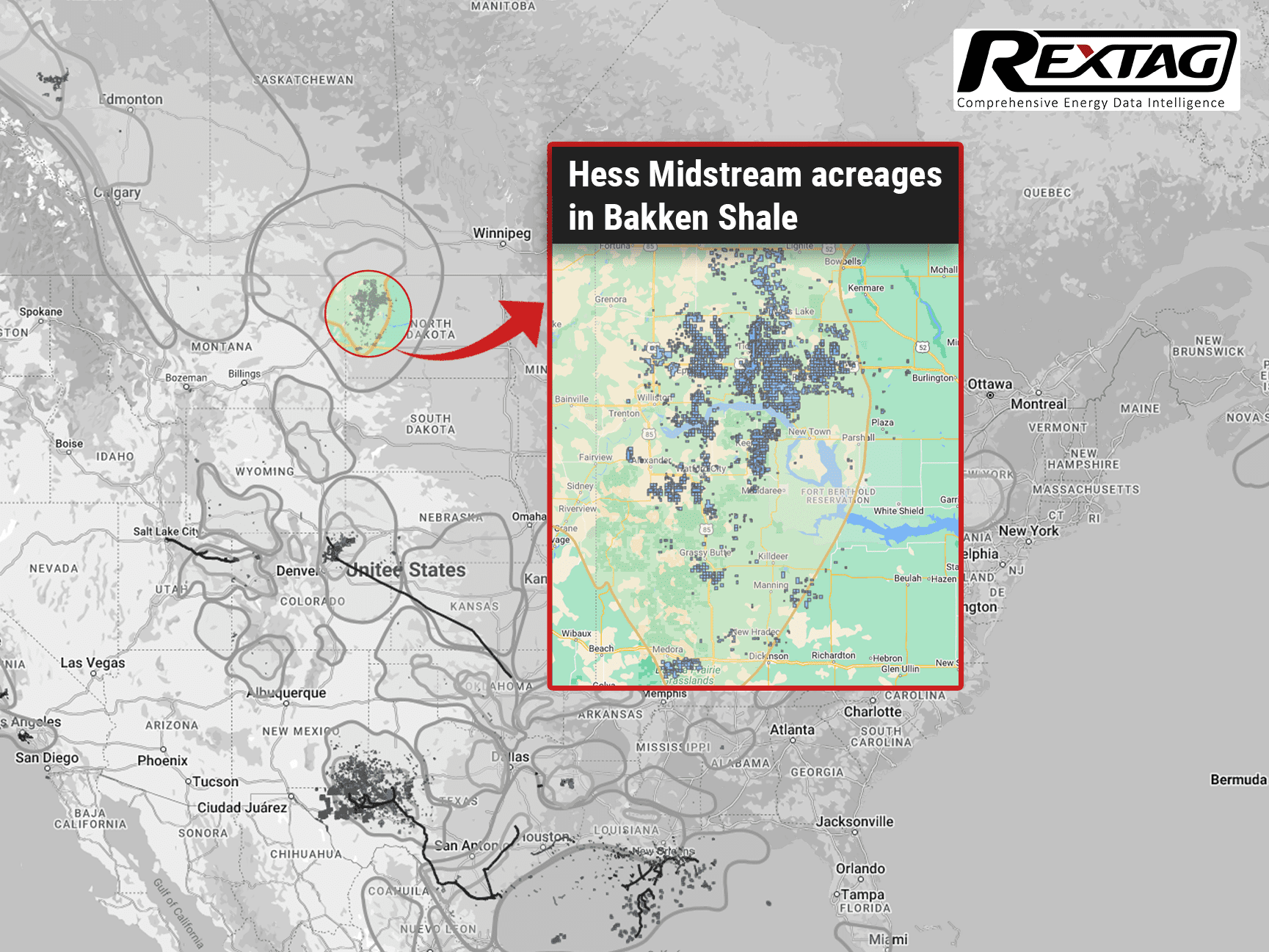
 (1).png)
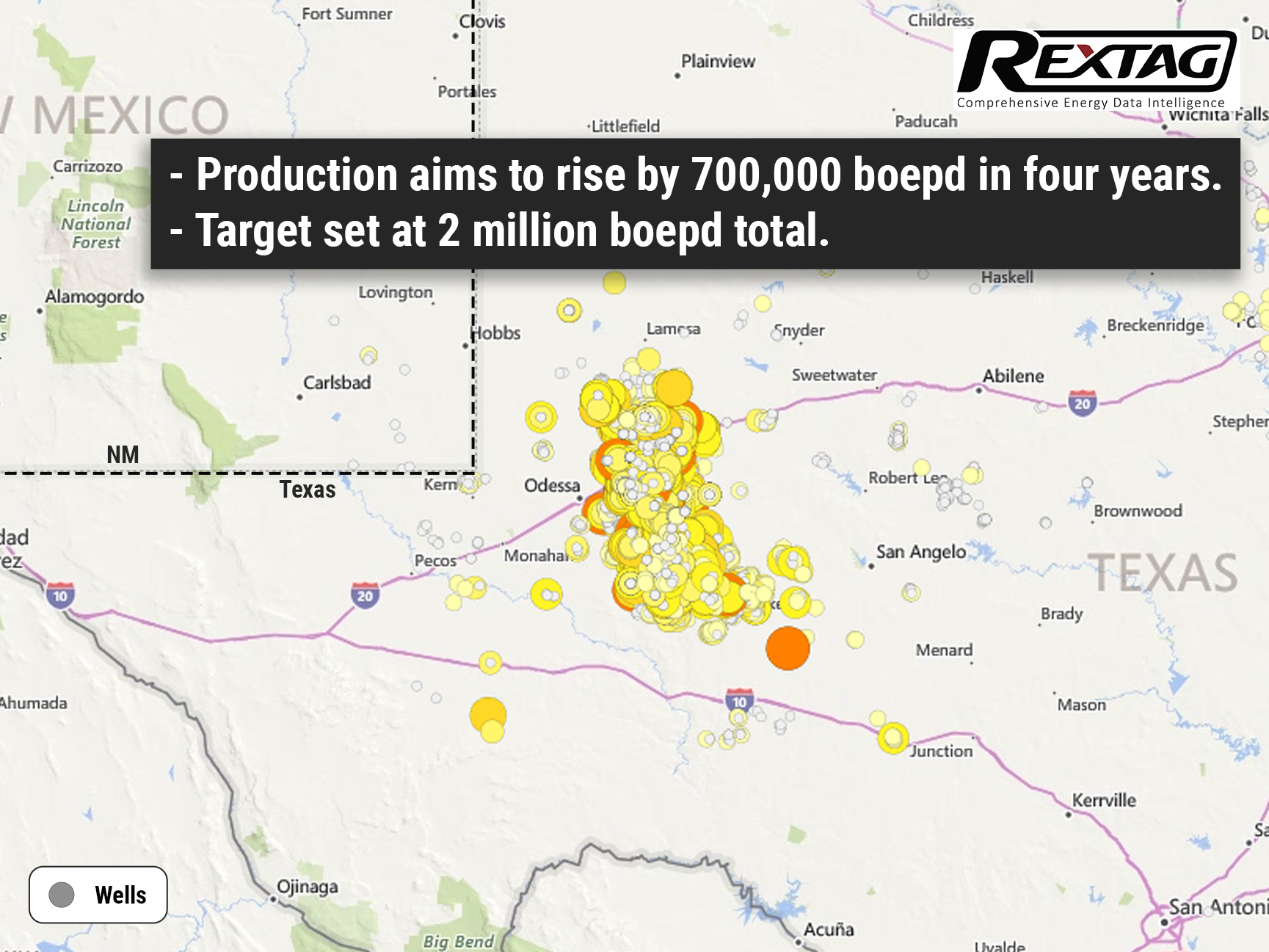
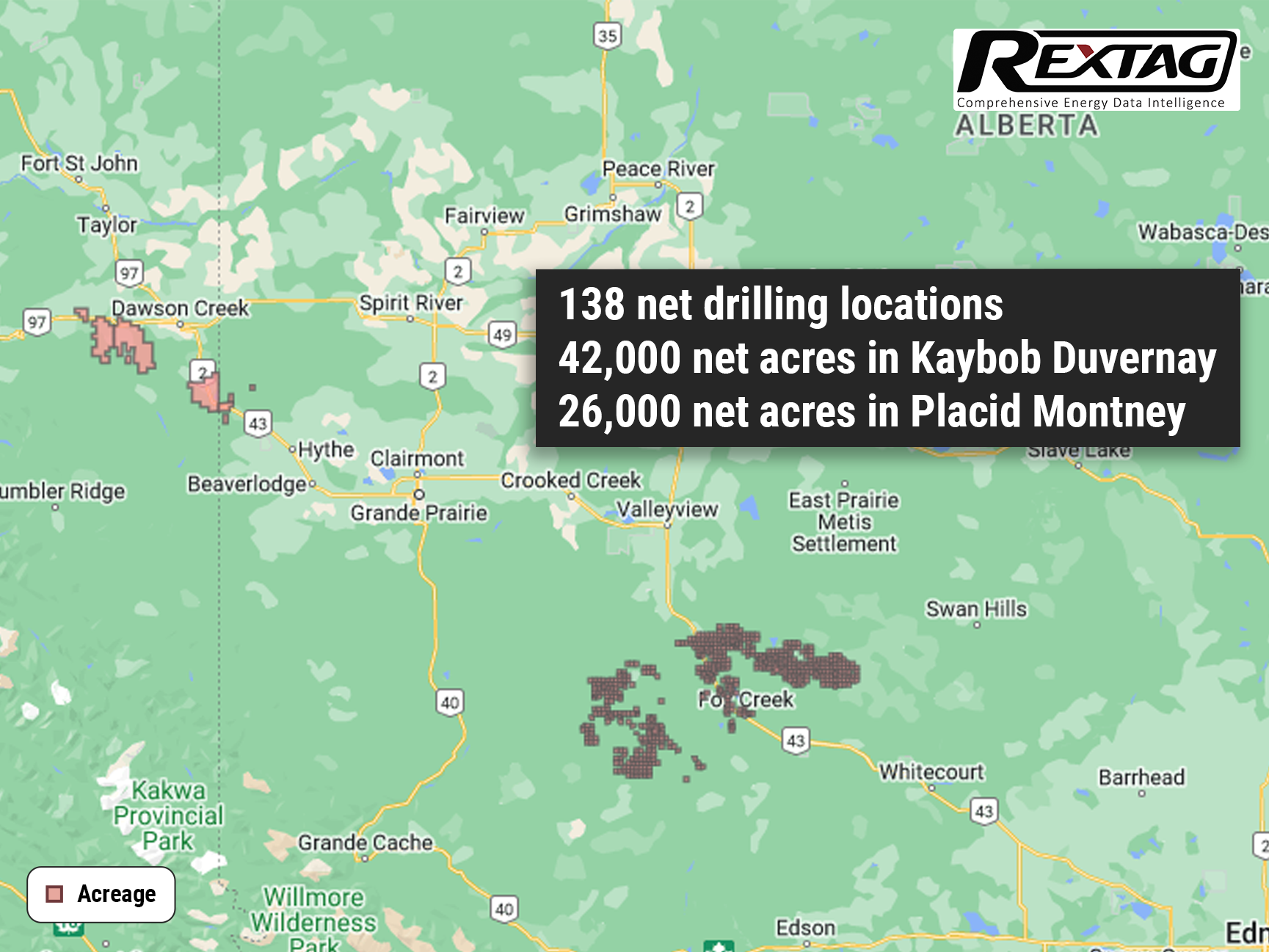



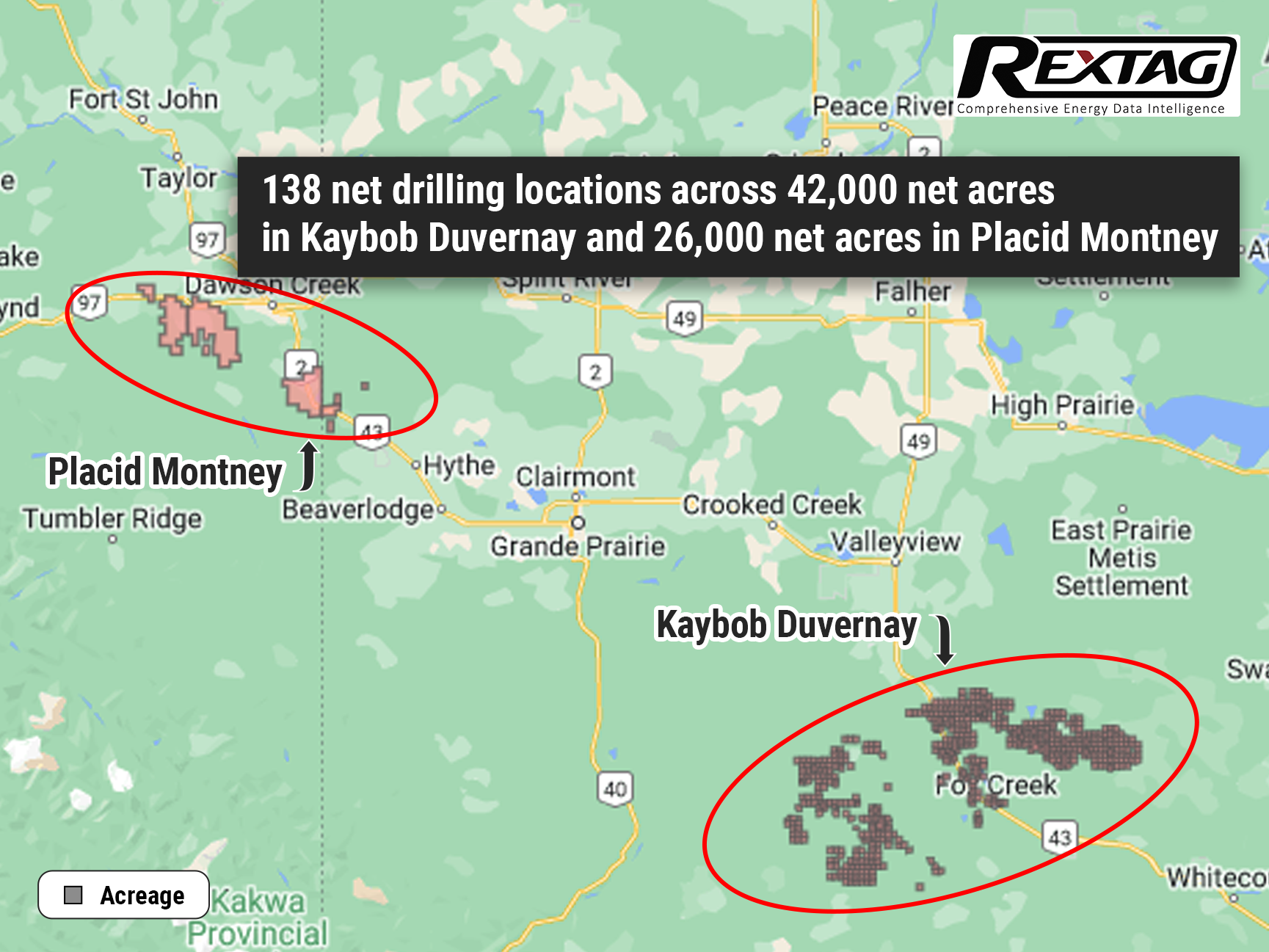
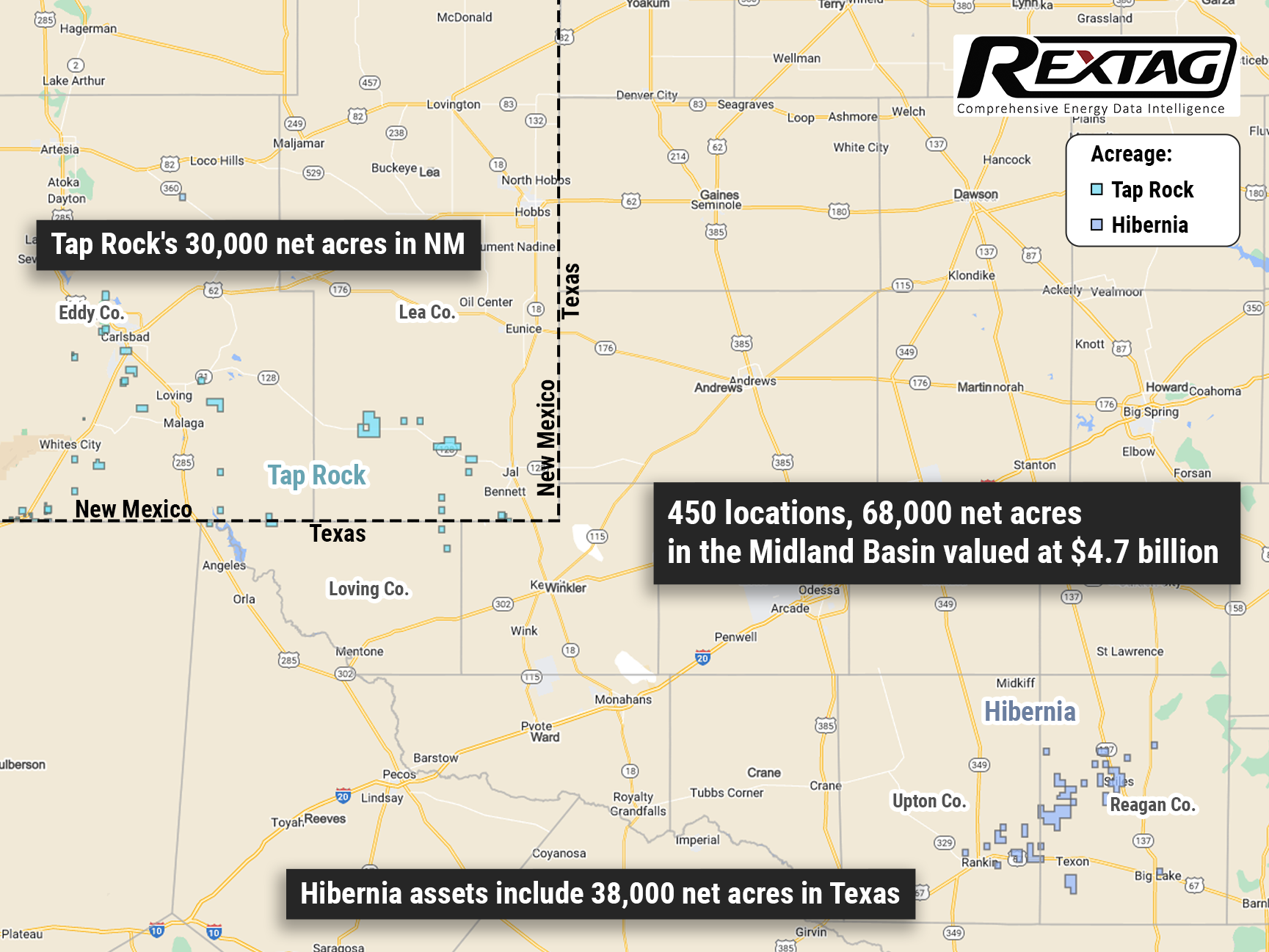

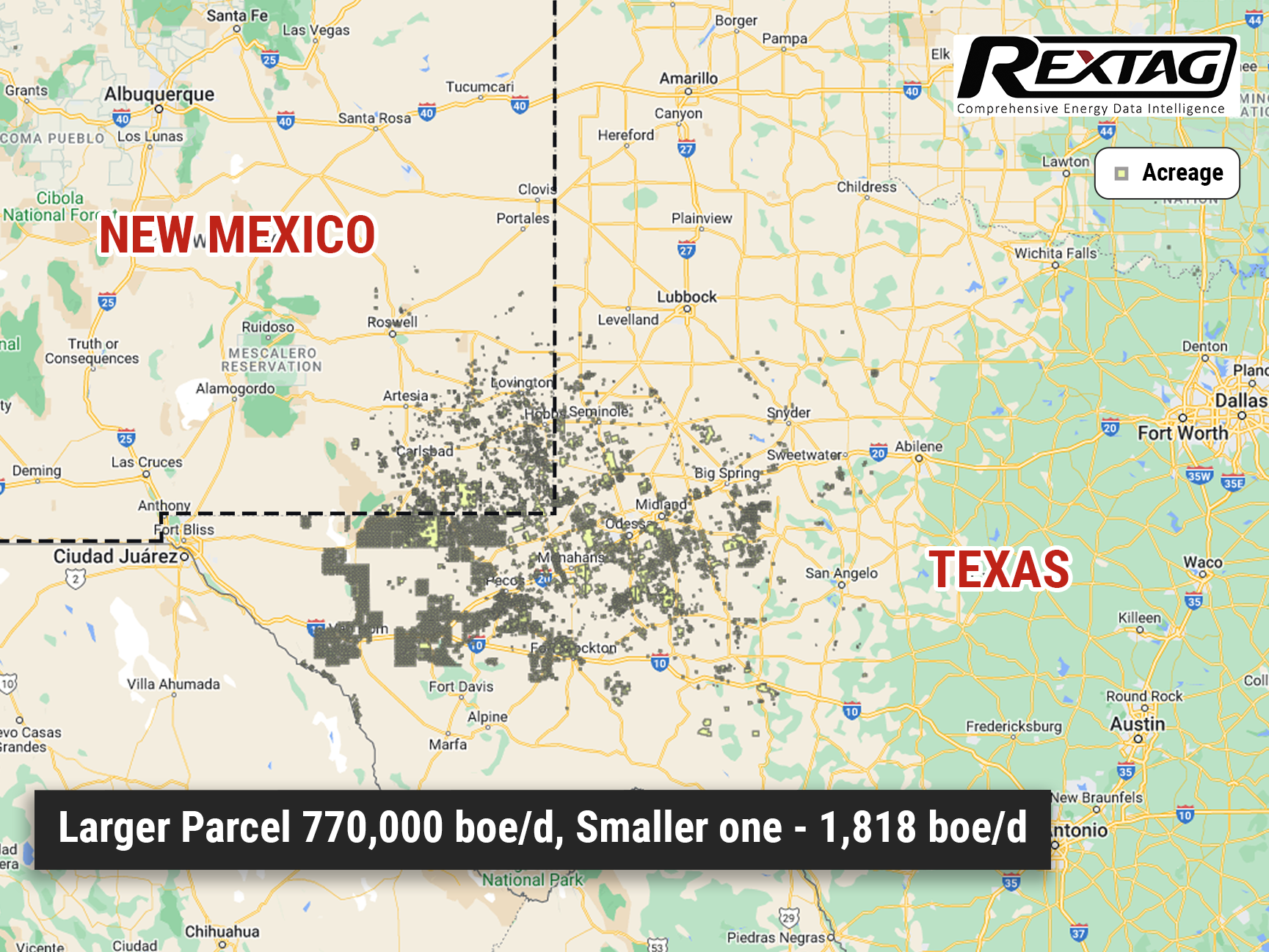
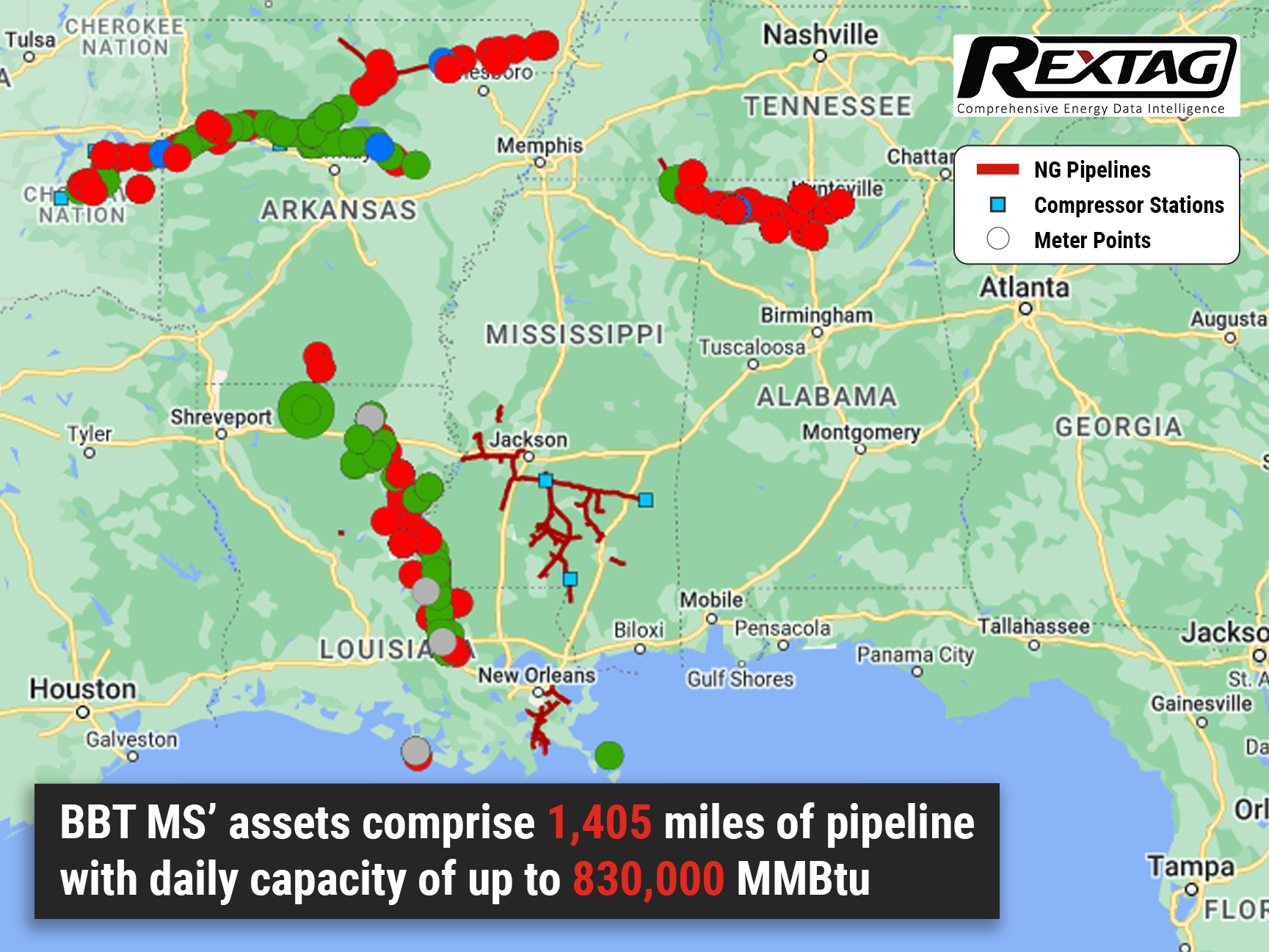
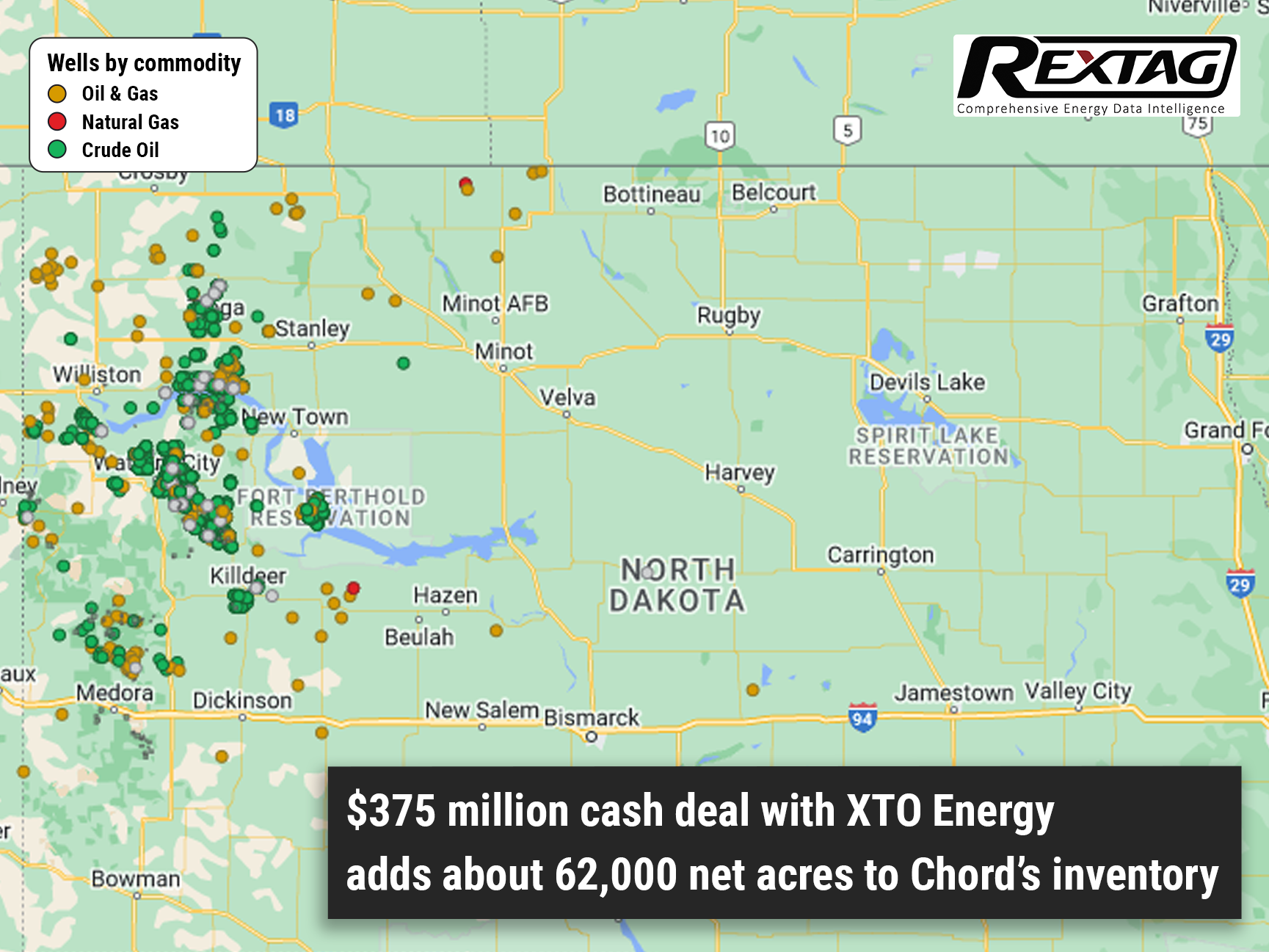
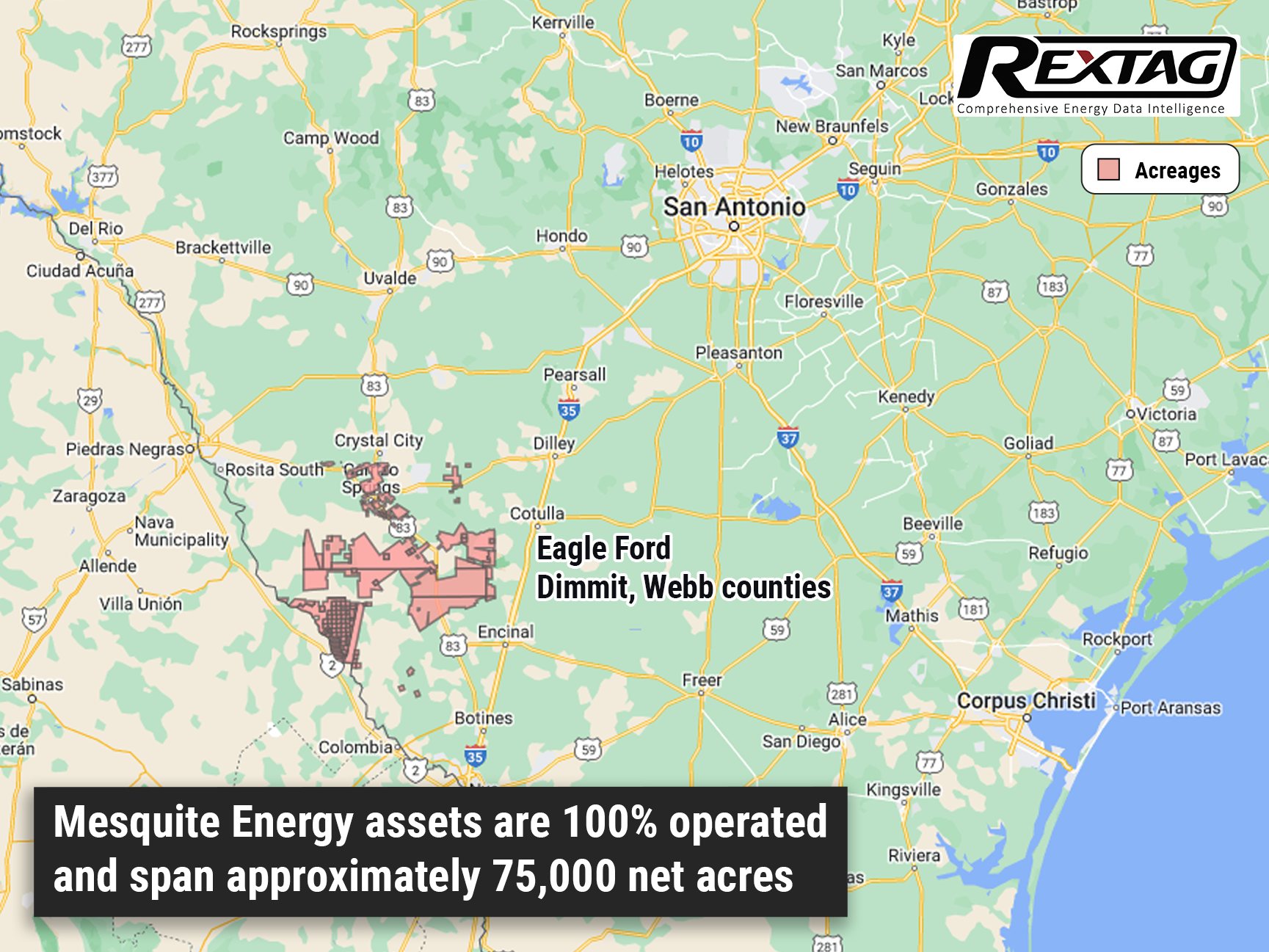
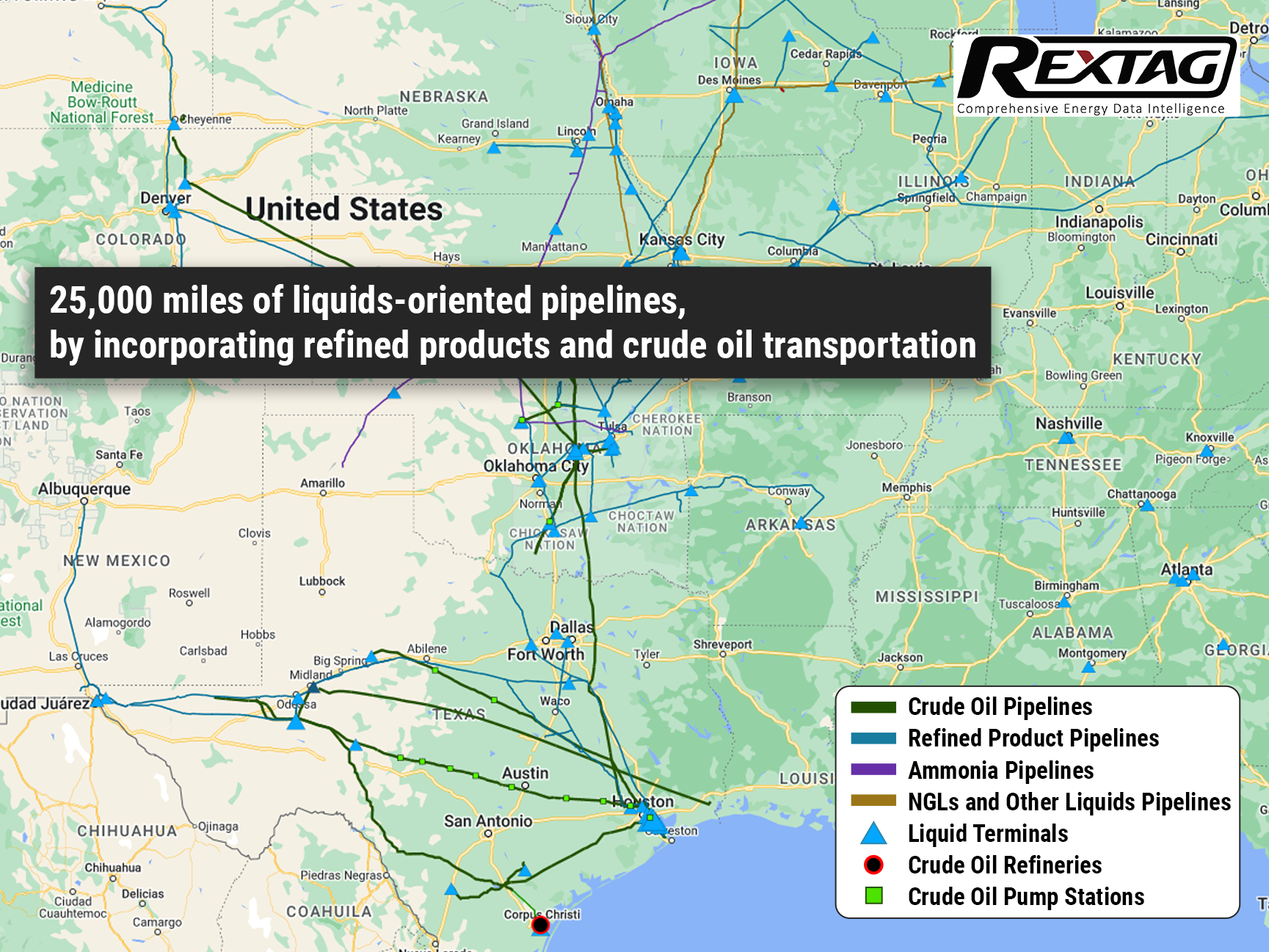
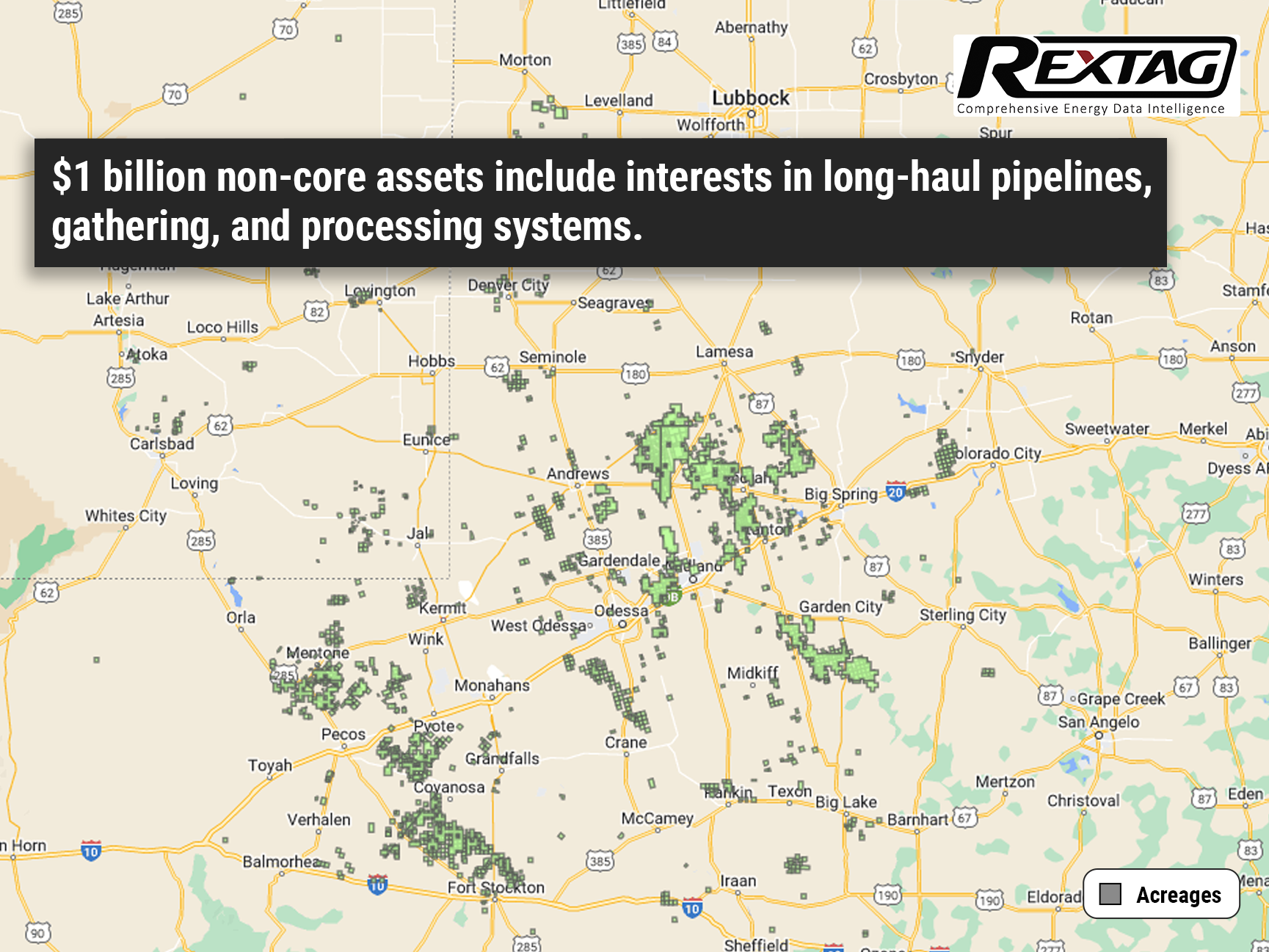

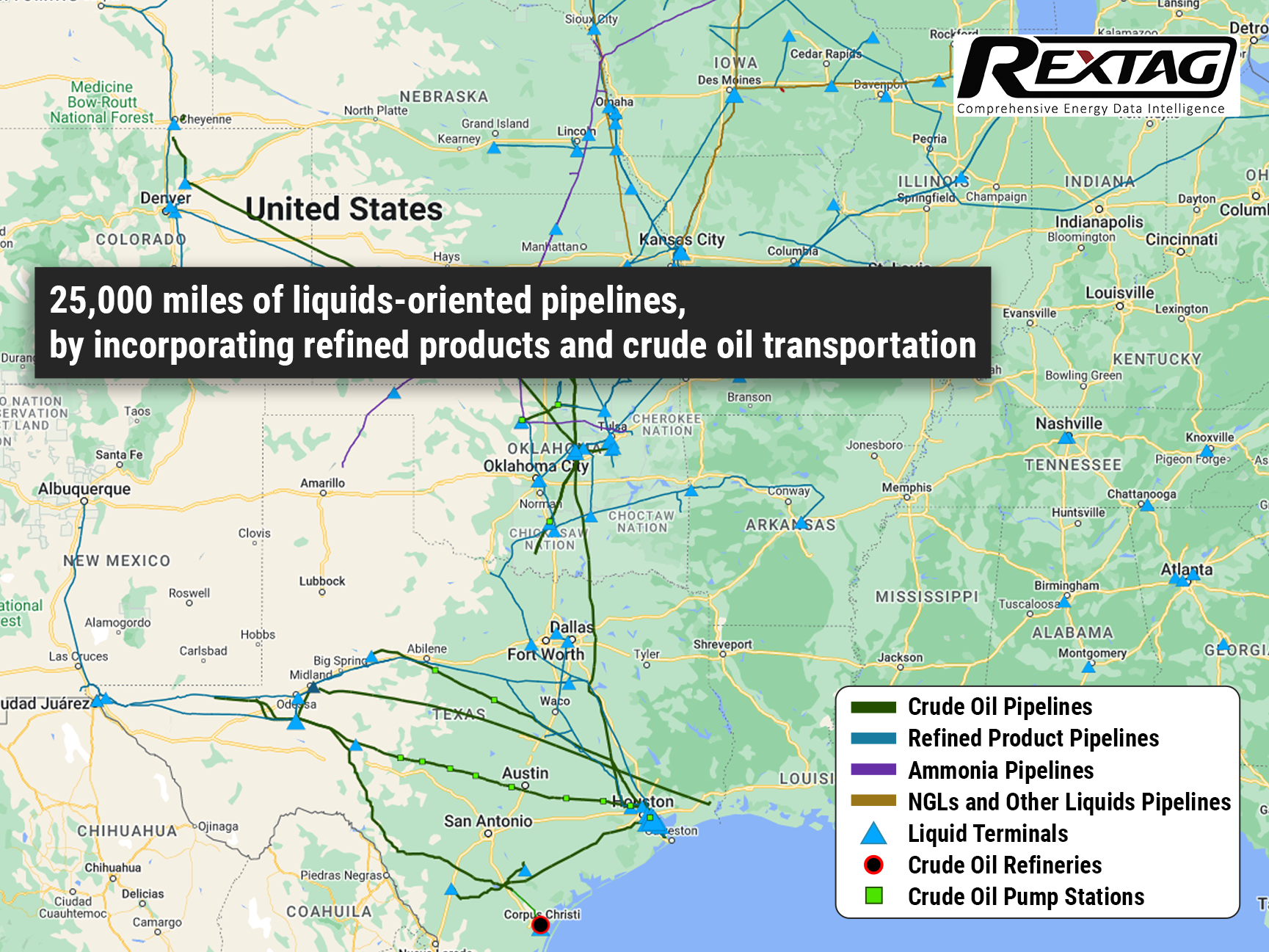
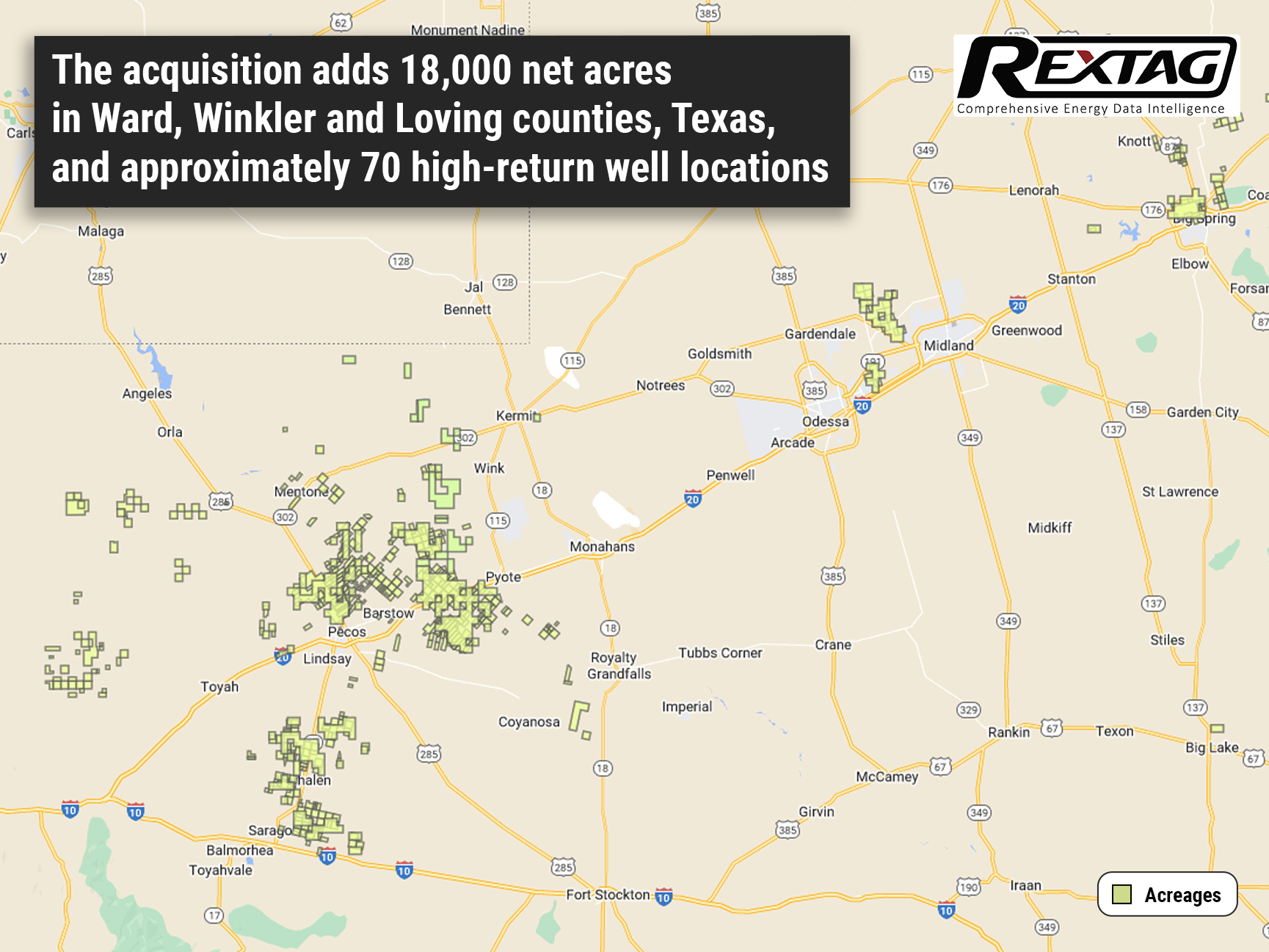
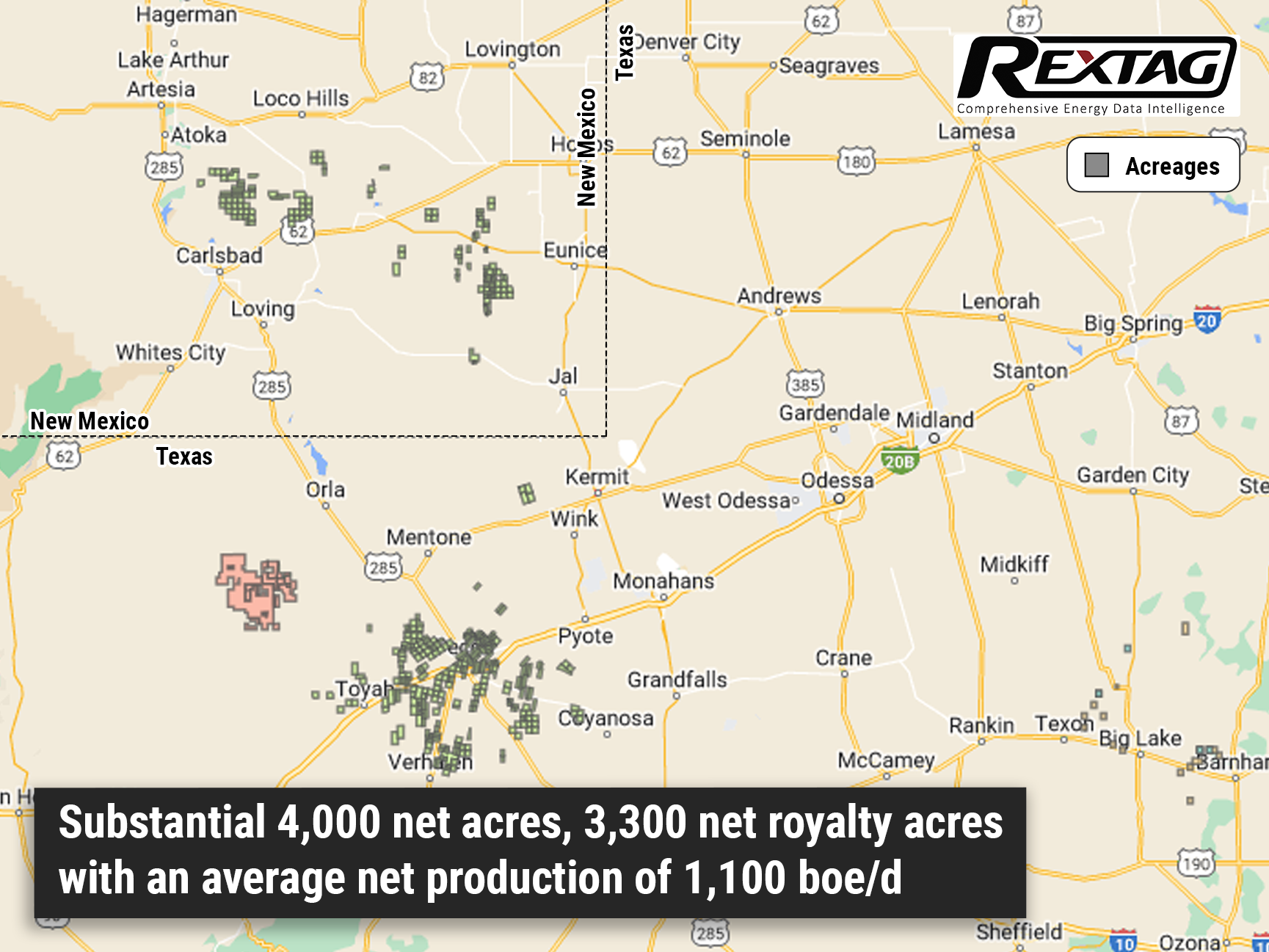
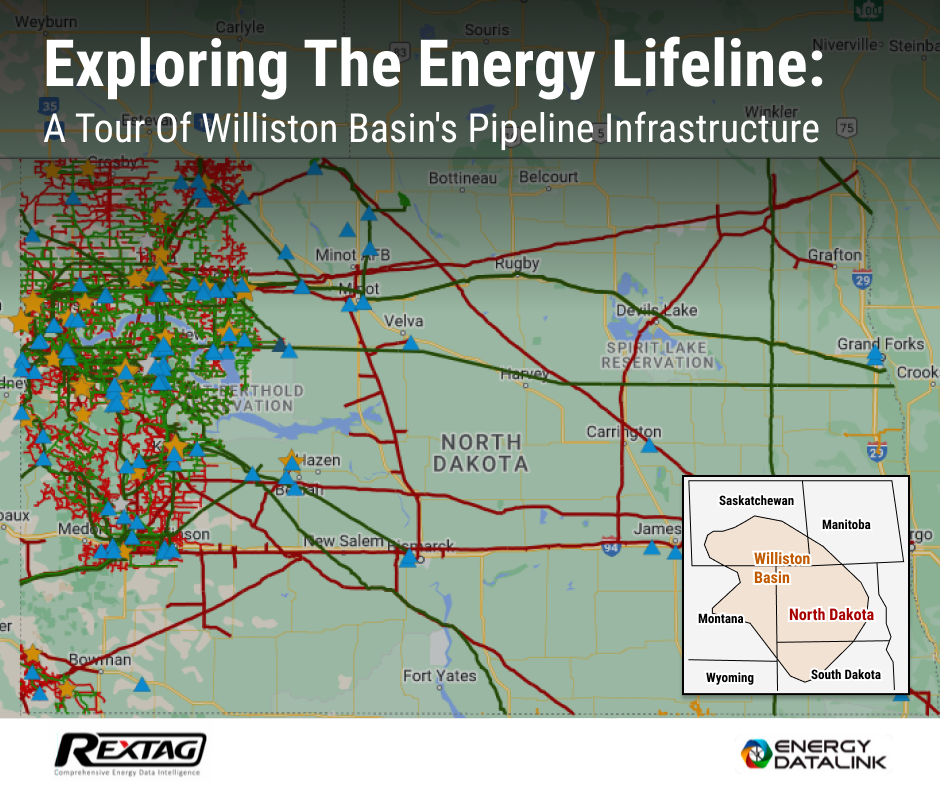
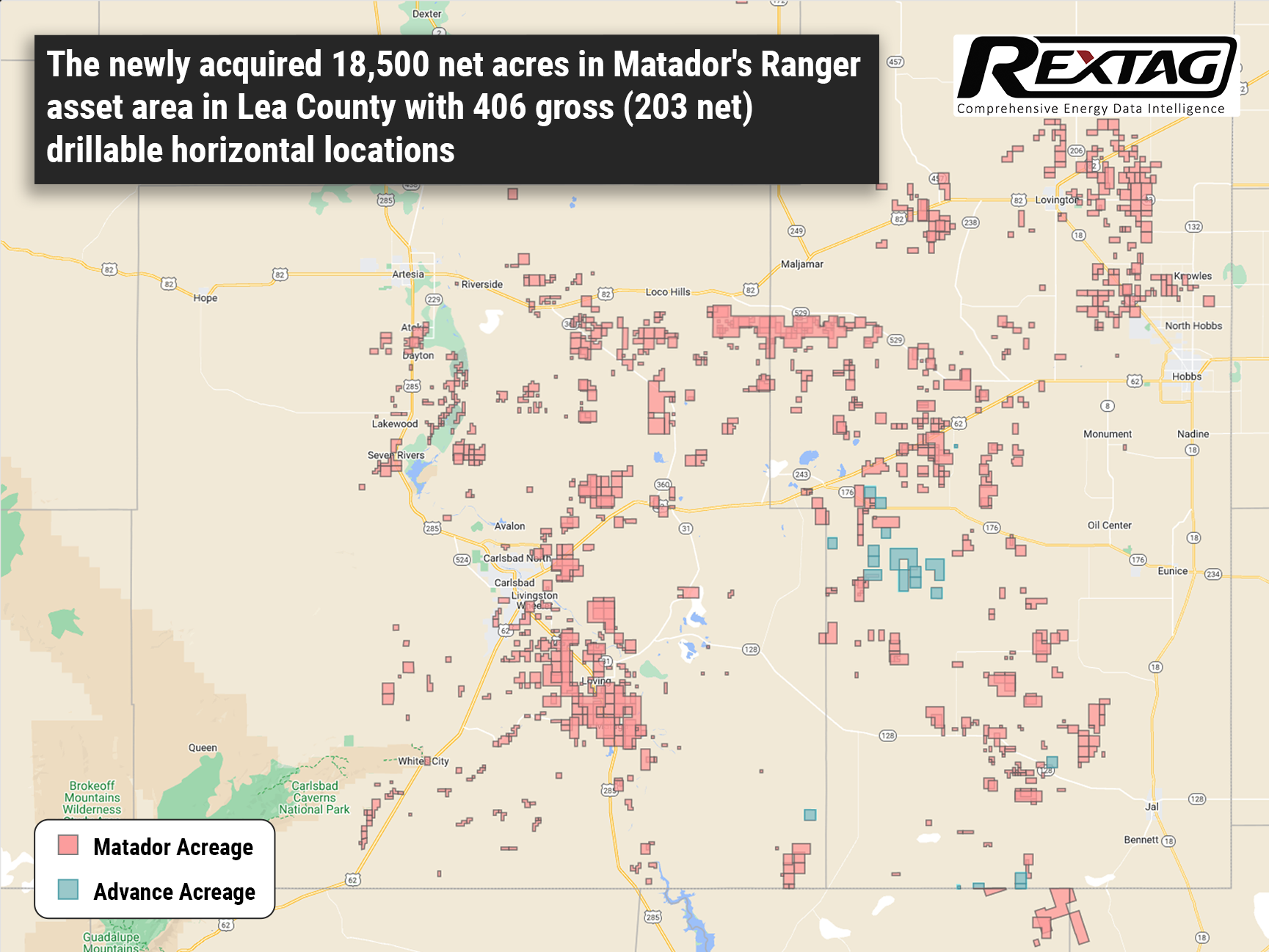
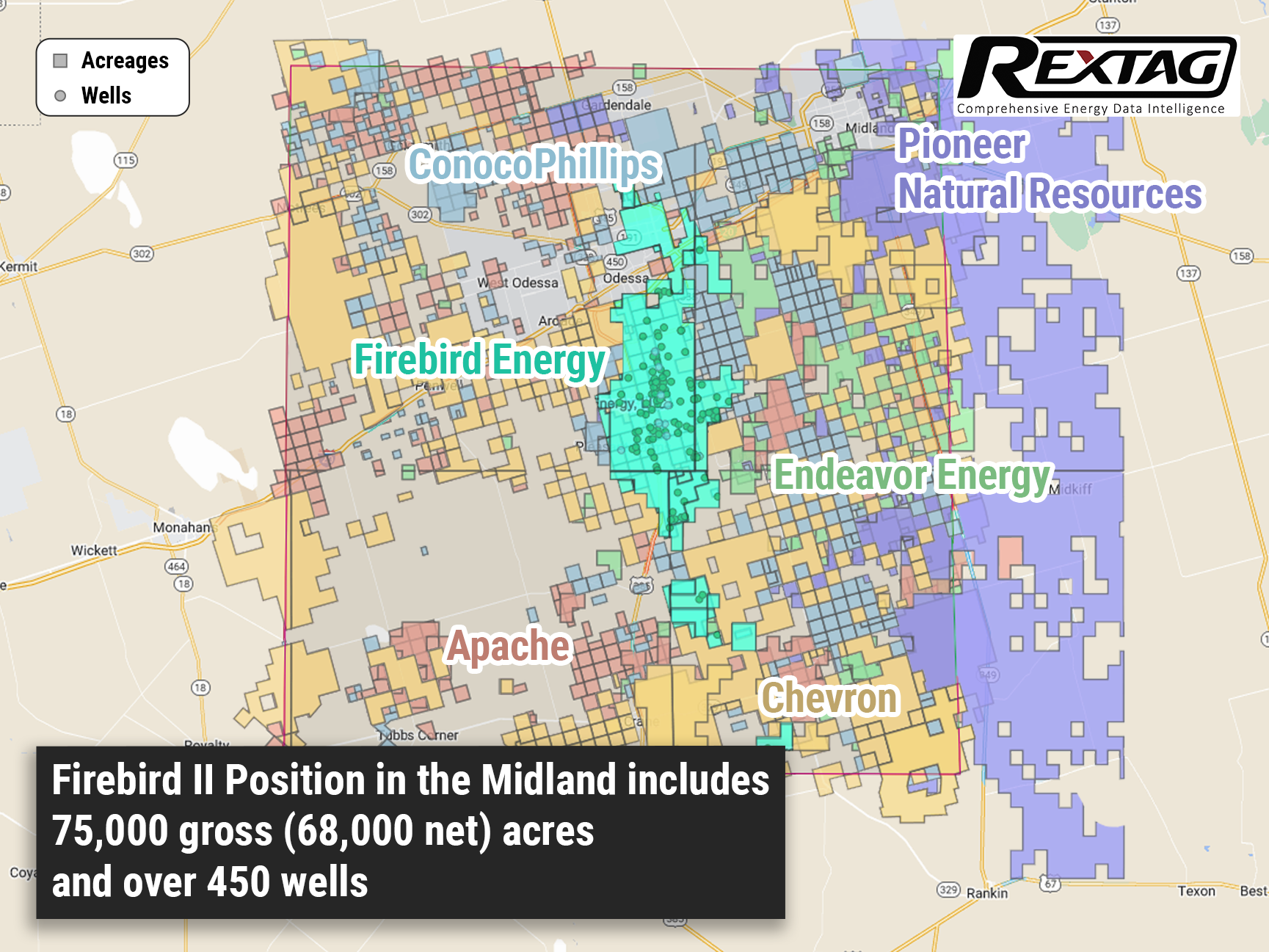
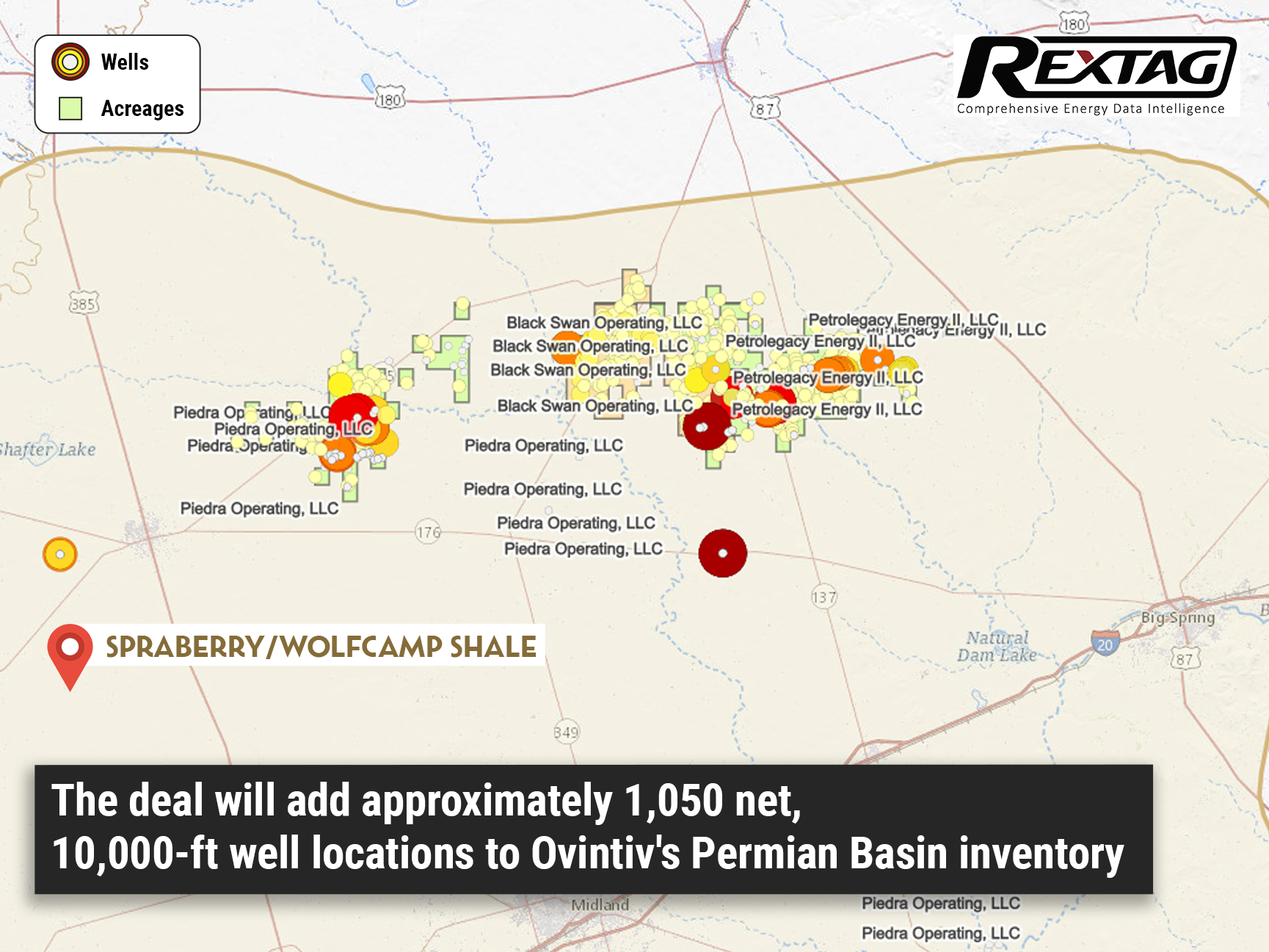
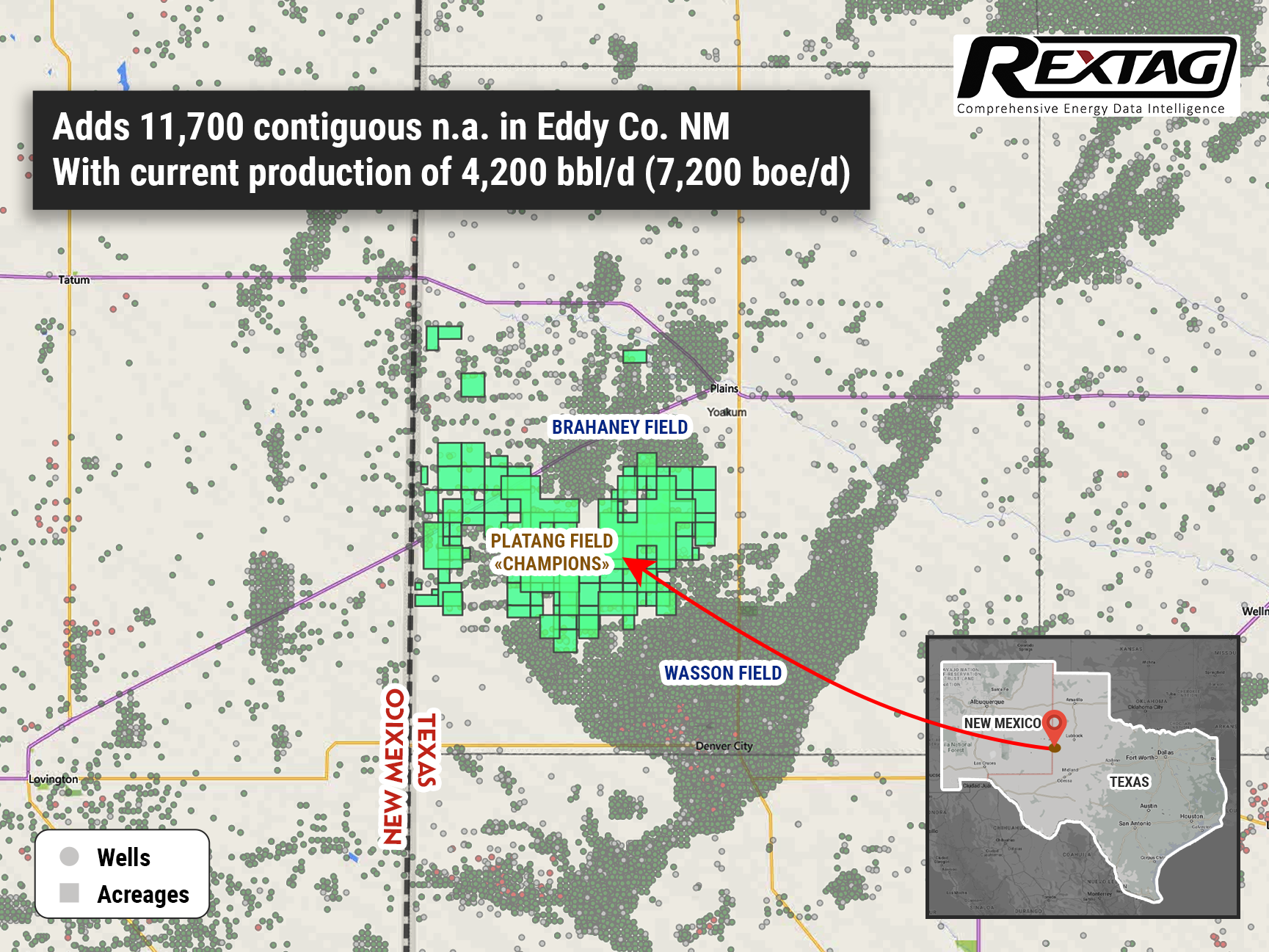

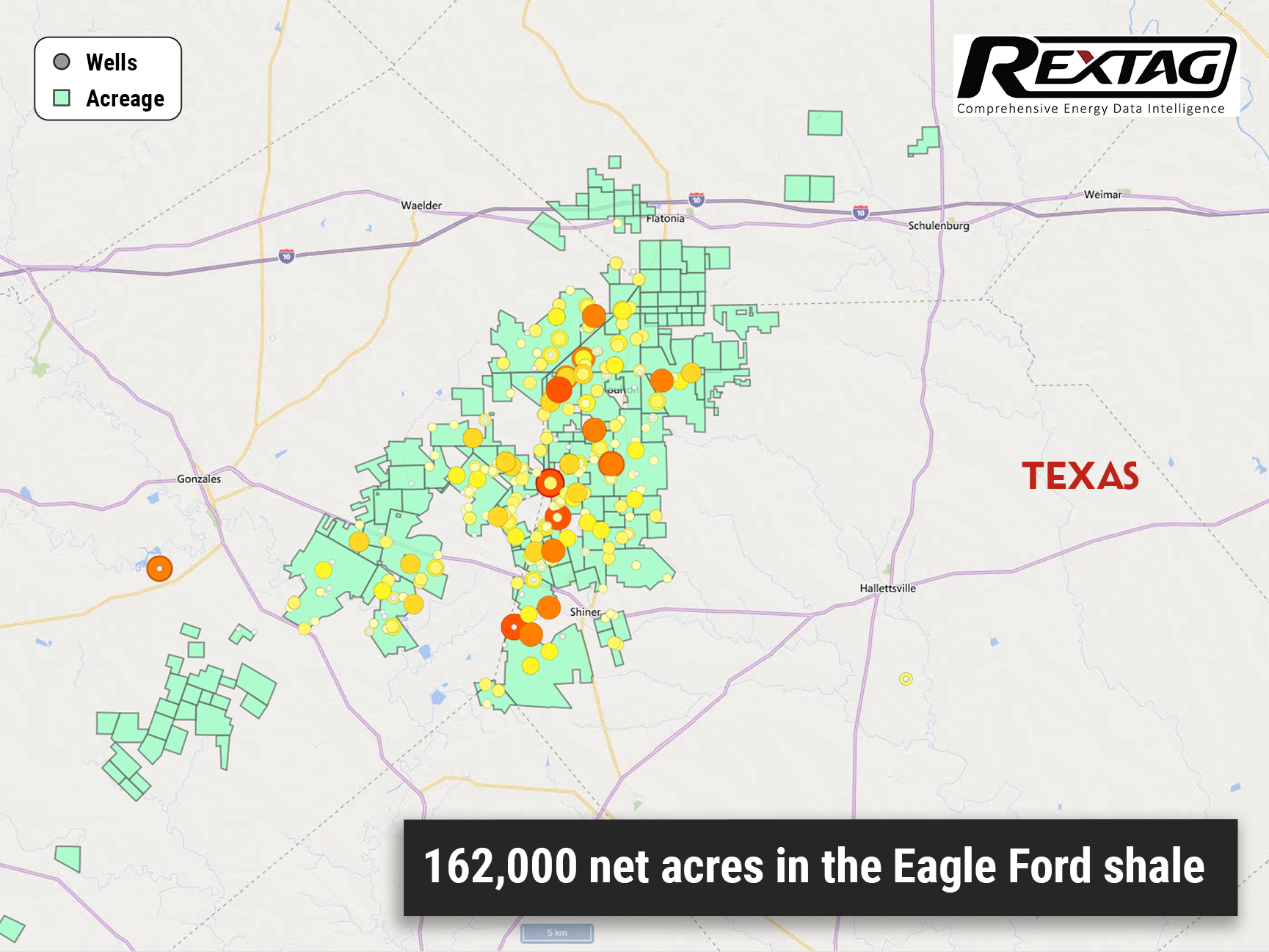
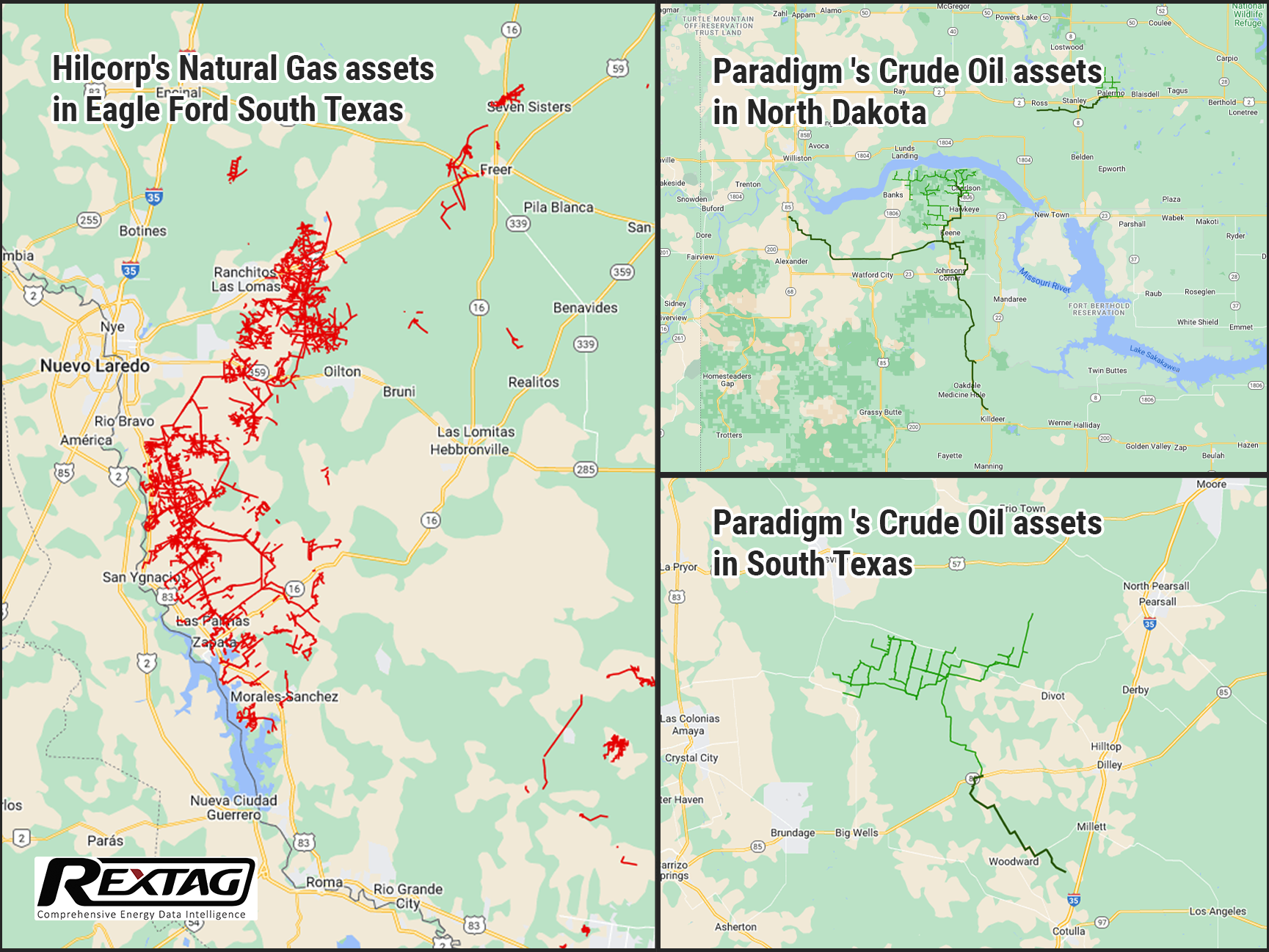
.png)
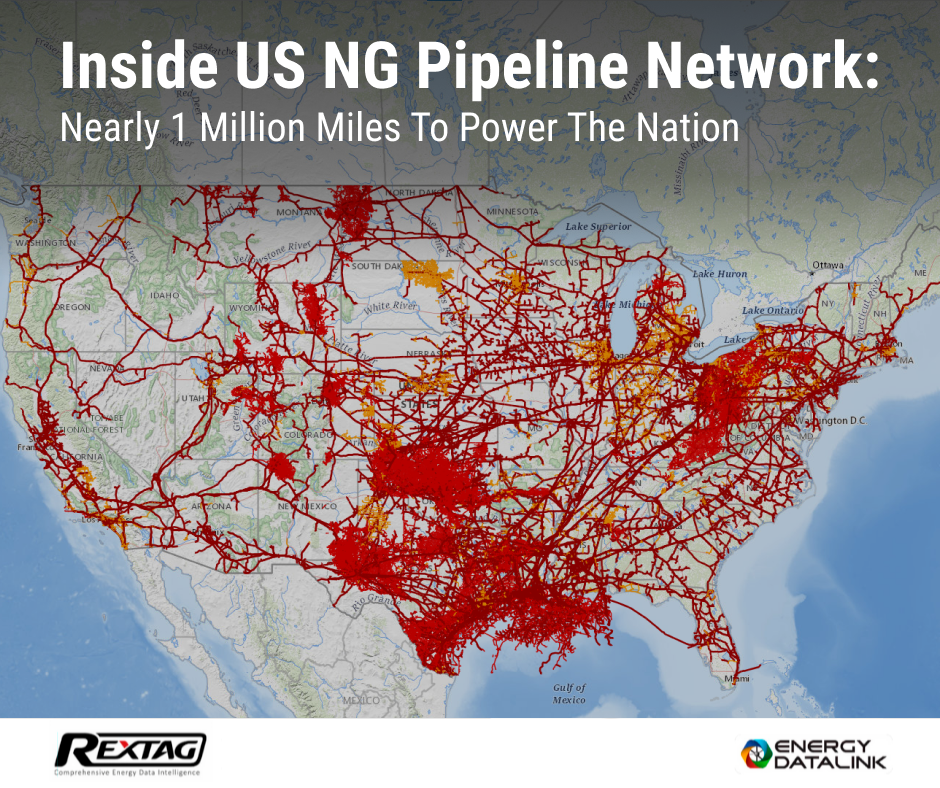
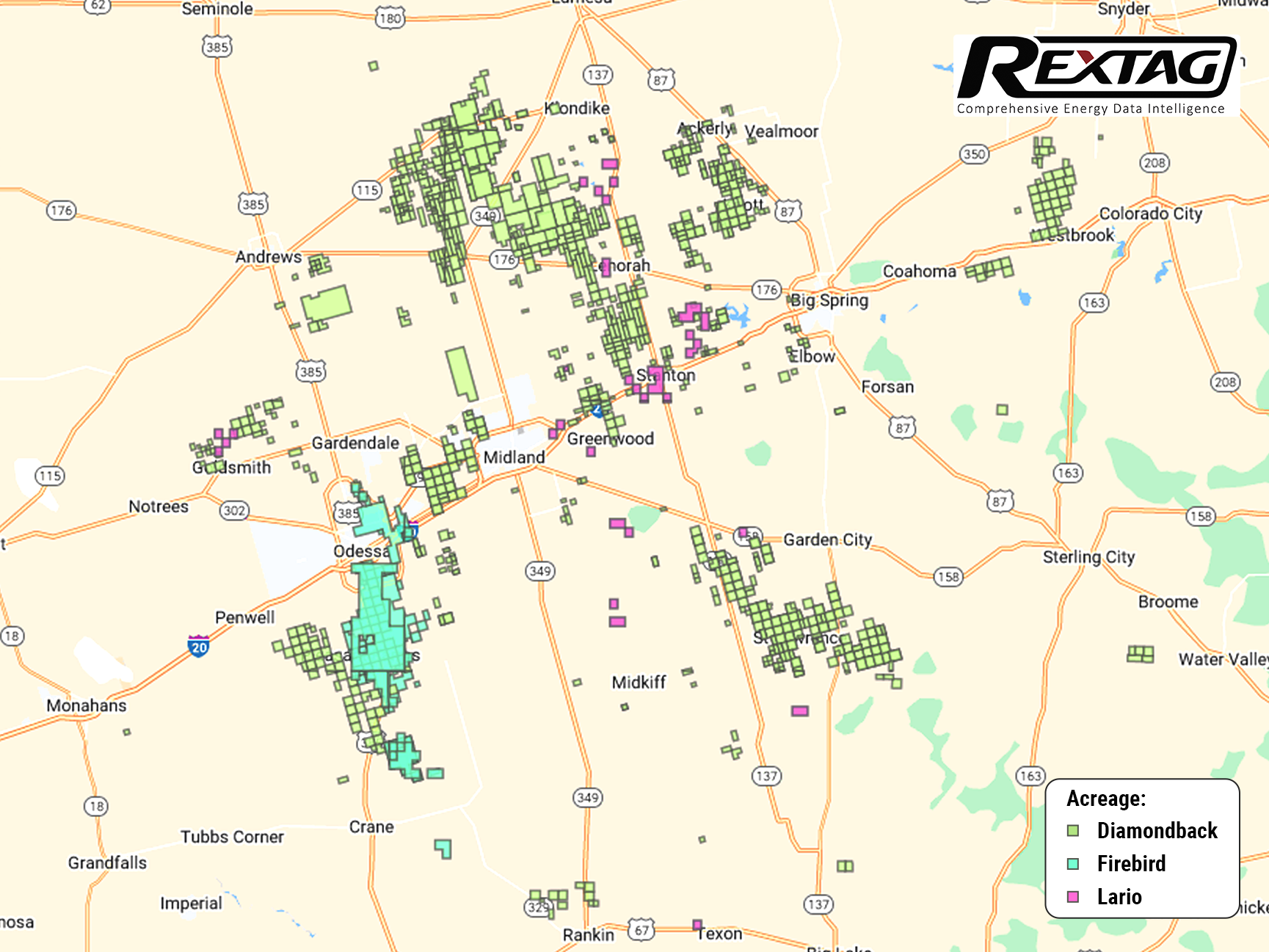
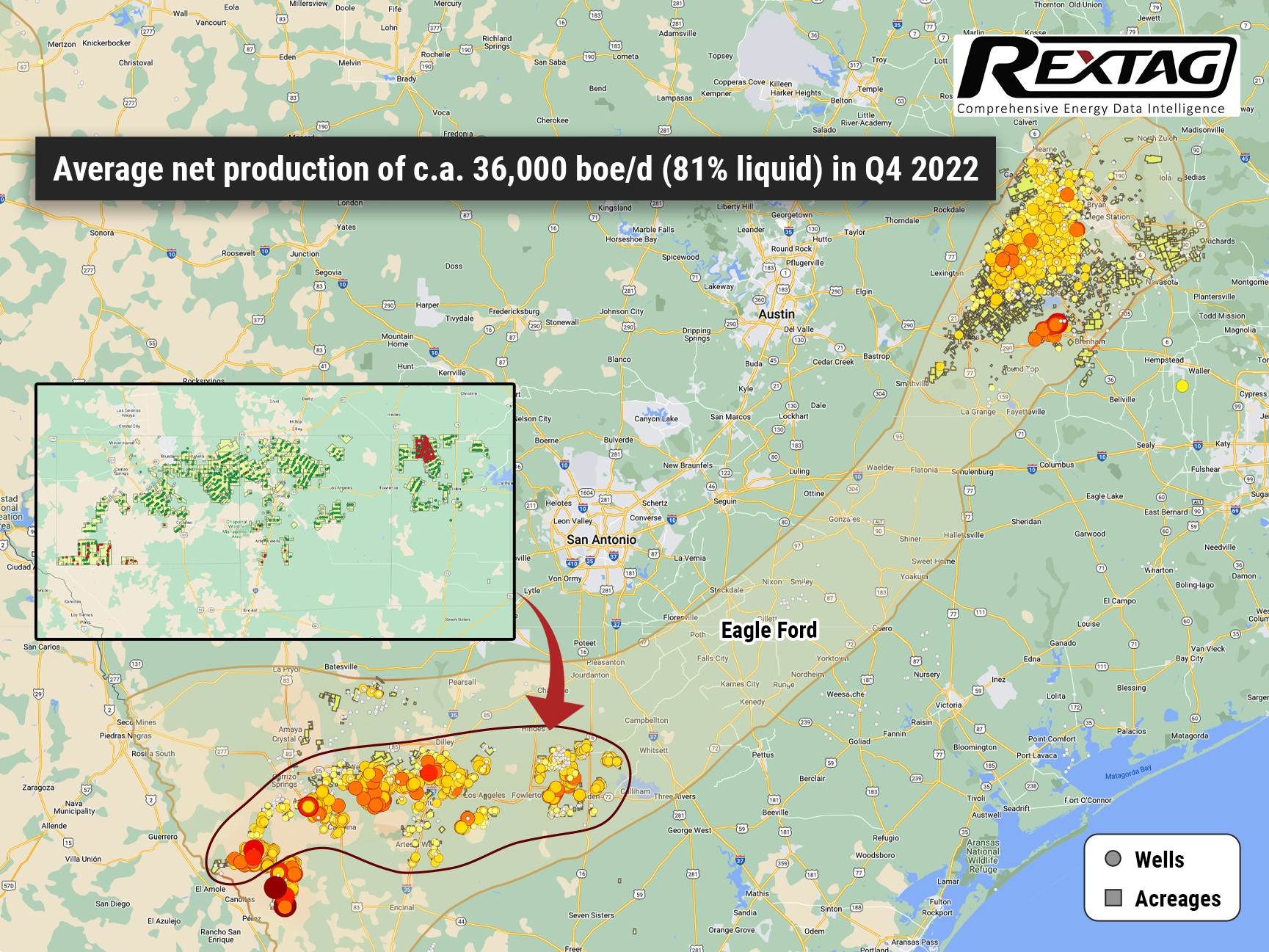
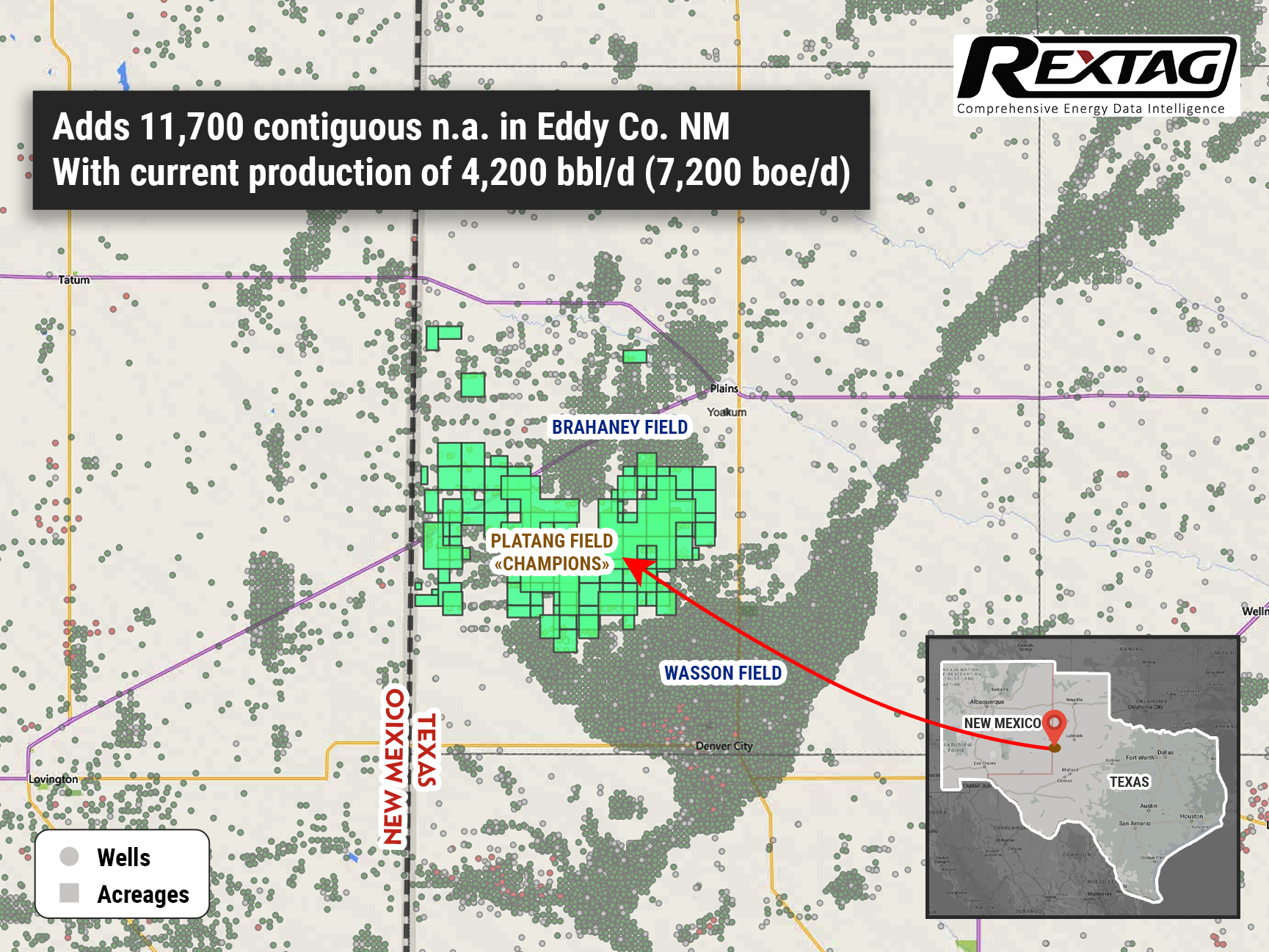
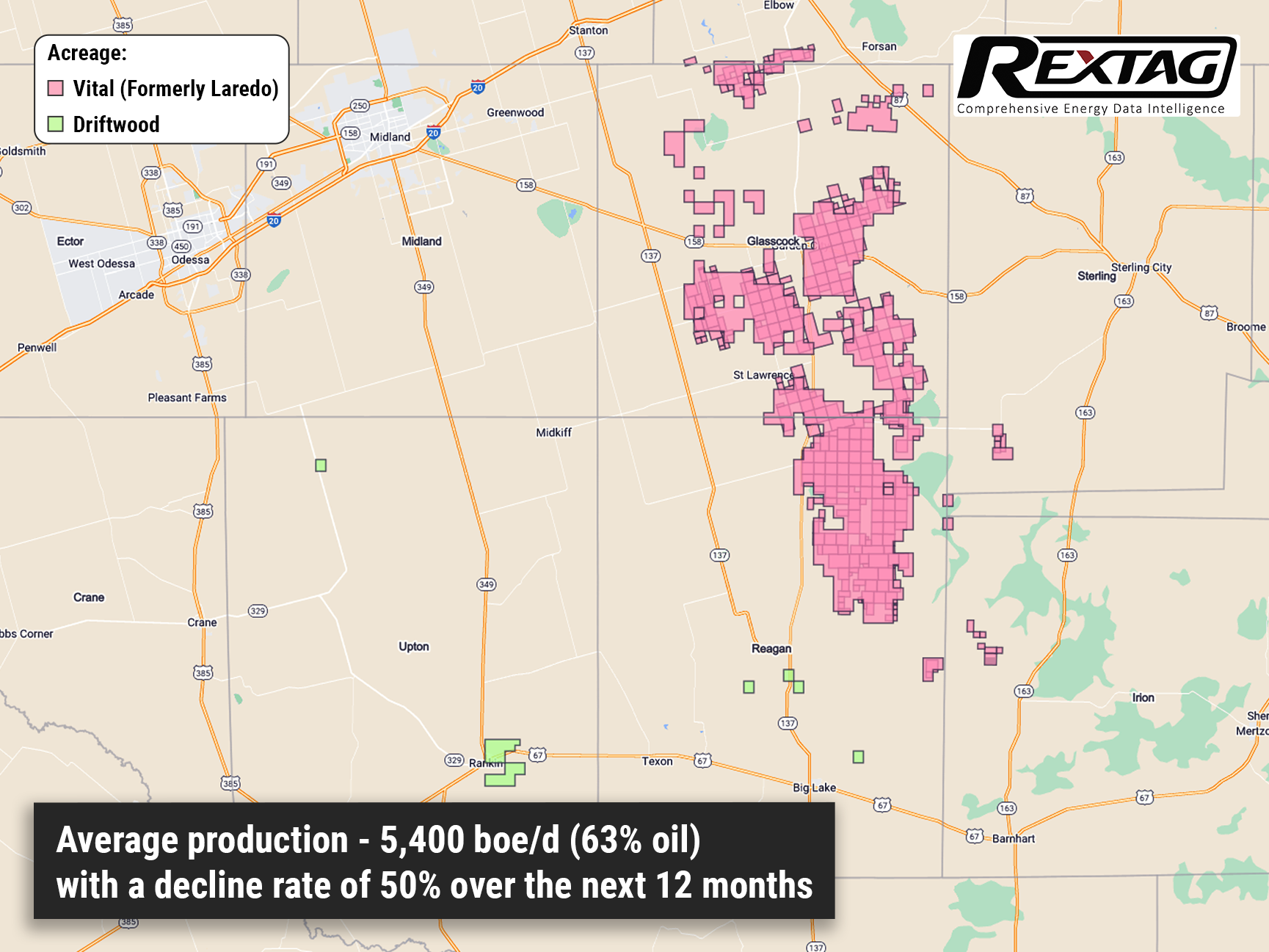
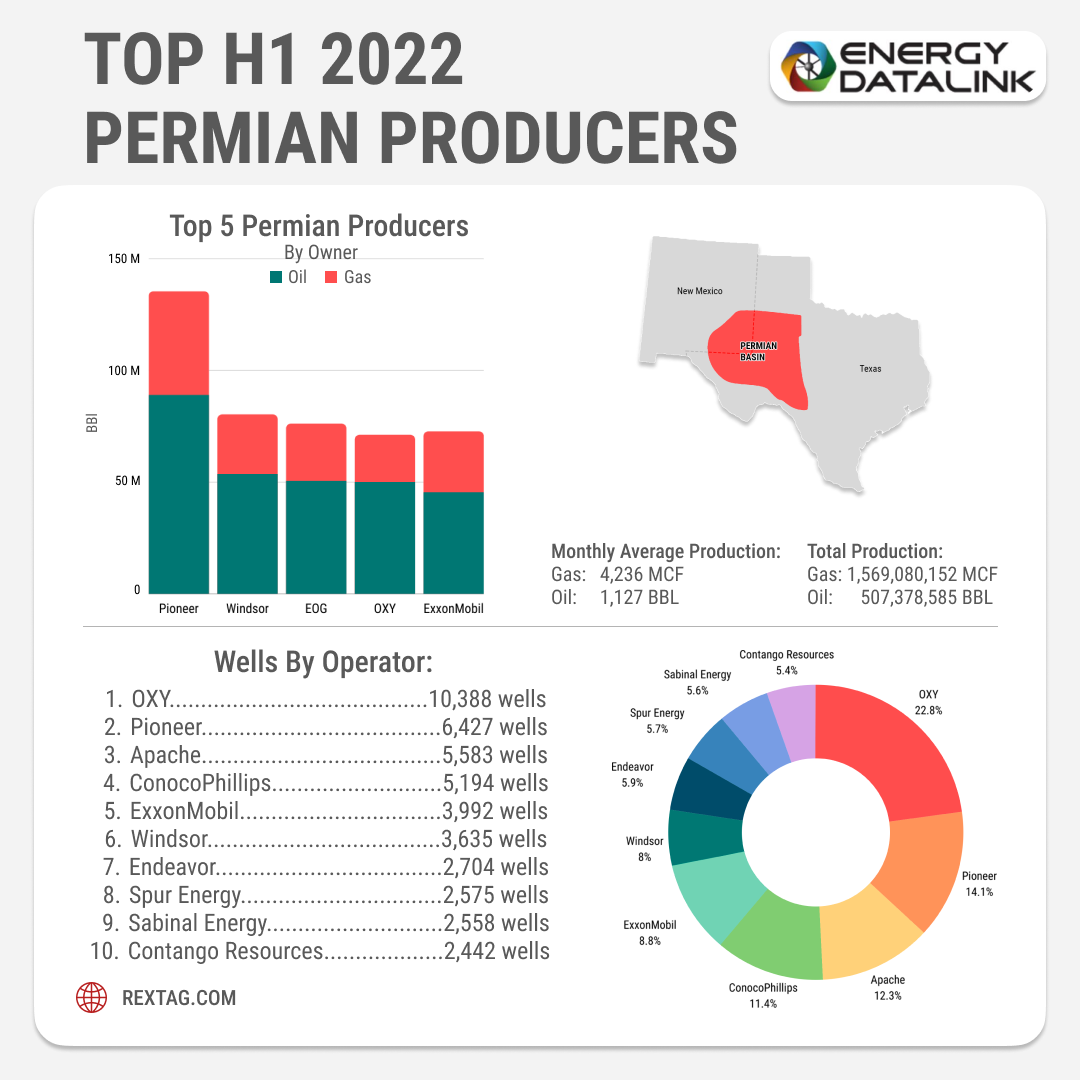


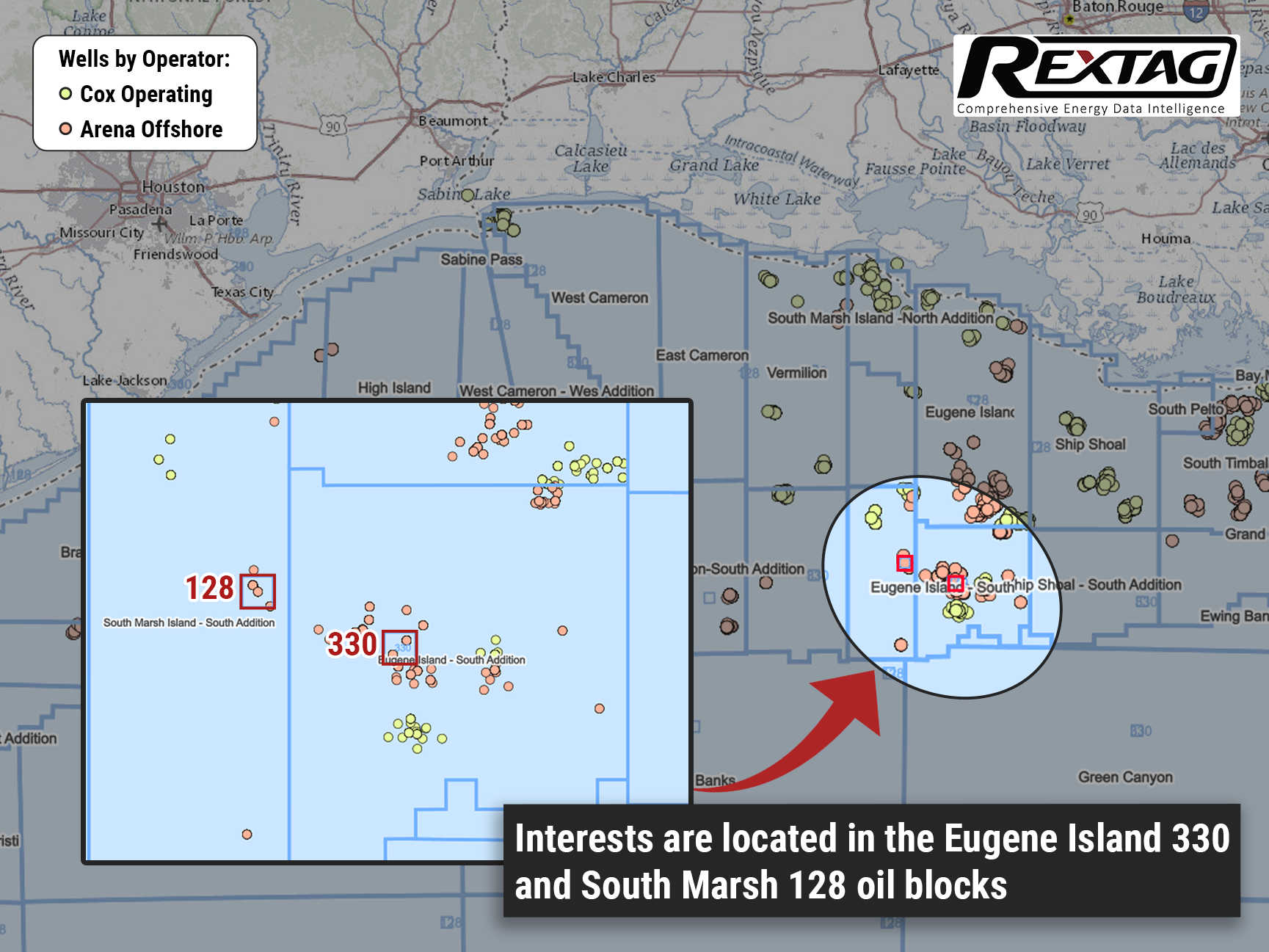

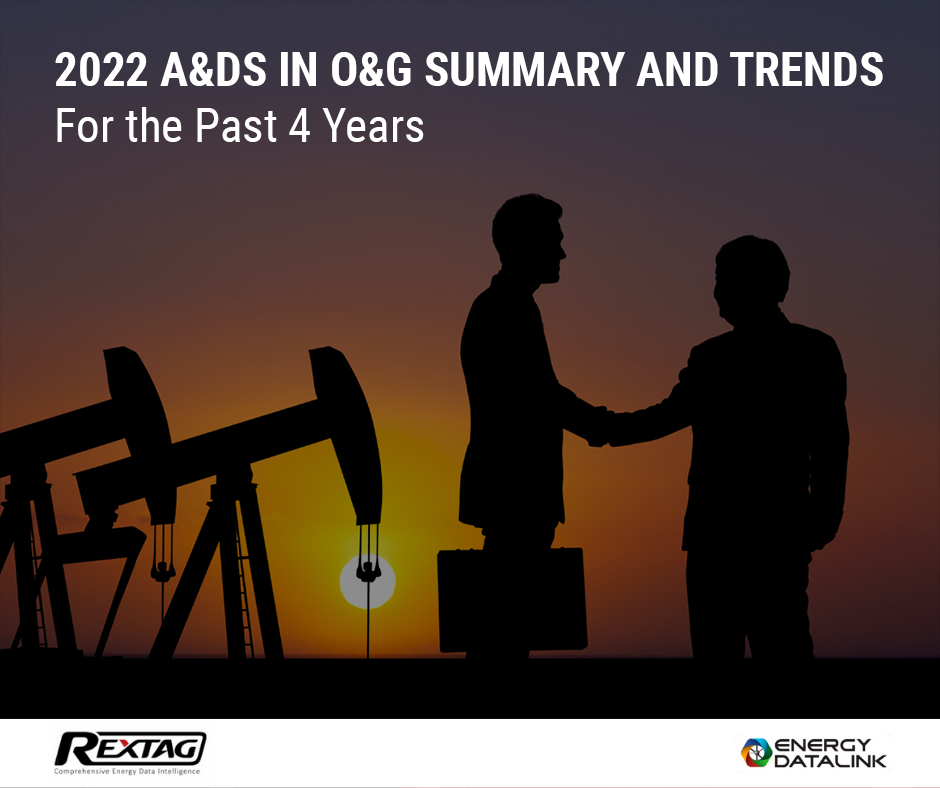



.png)
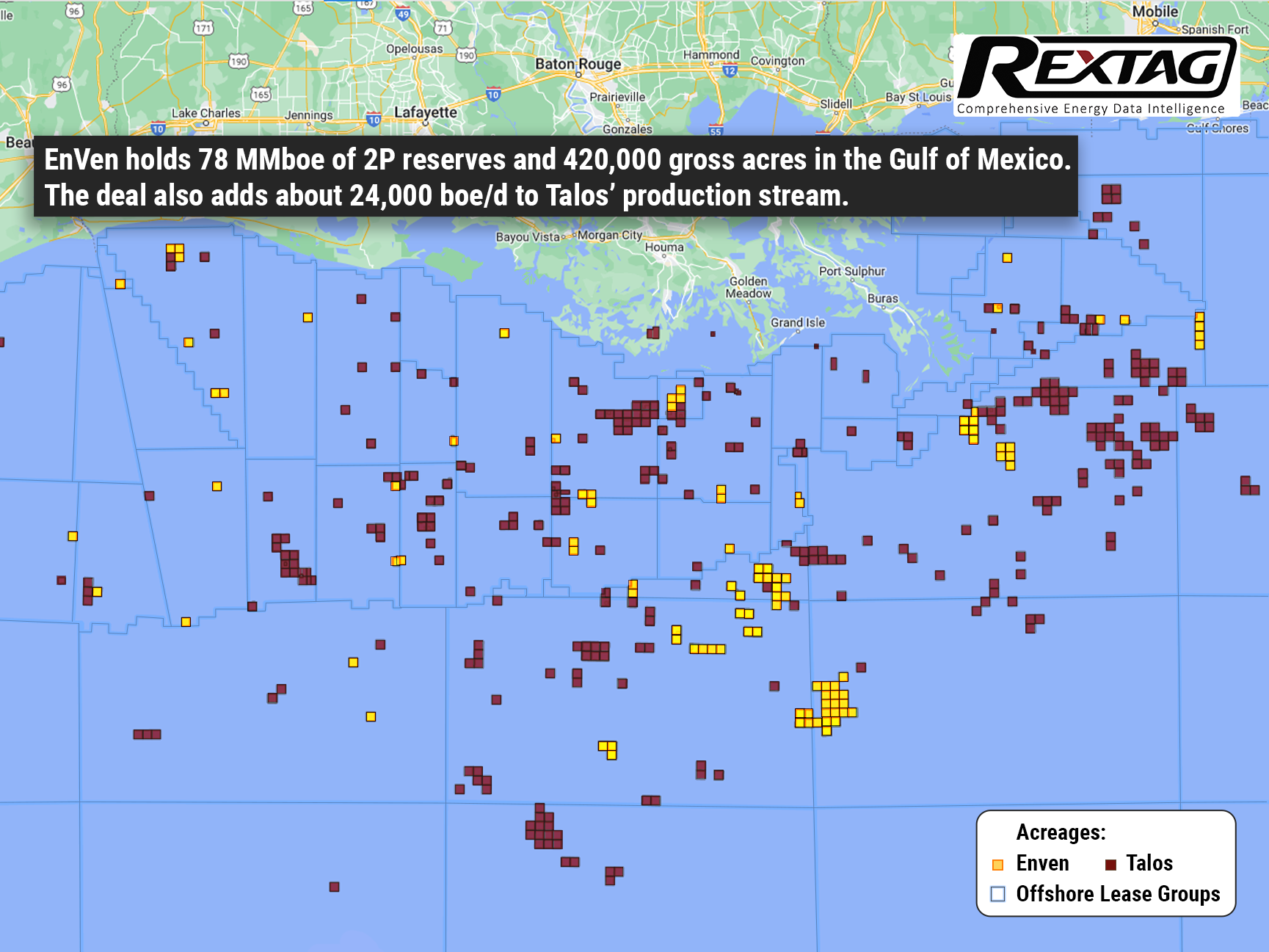
.png)
